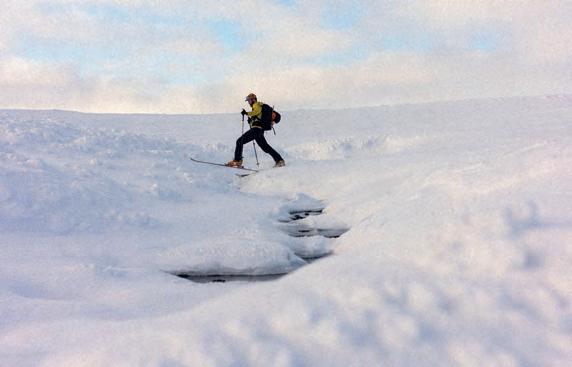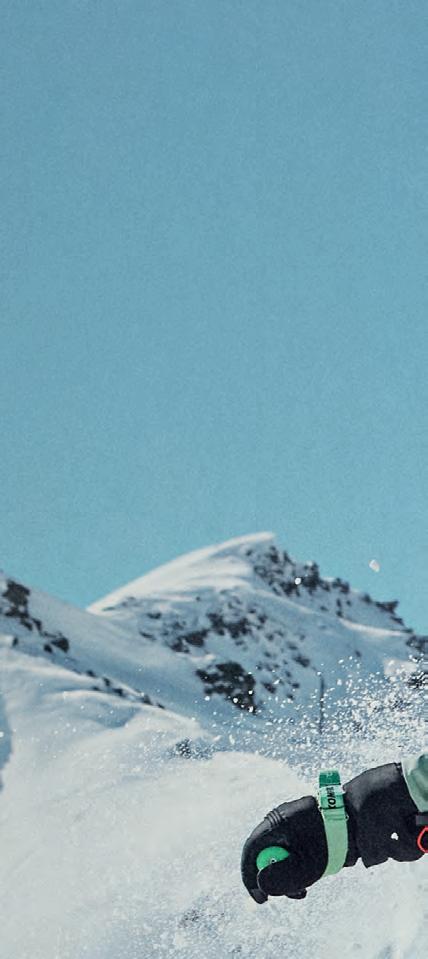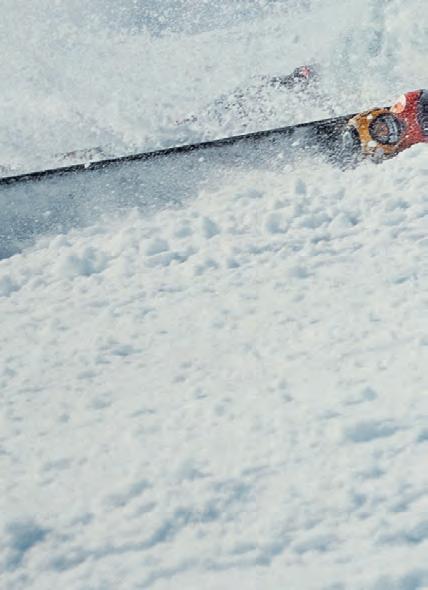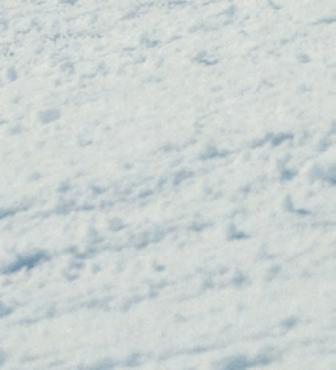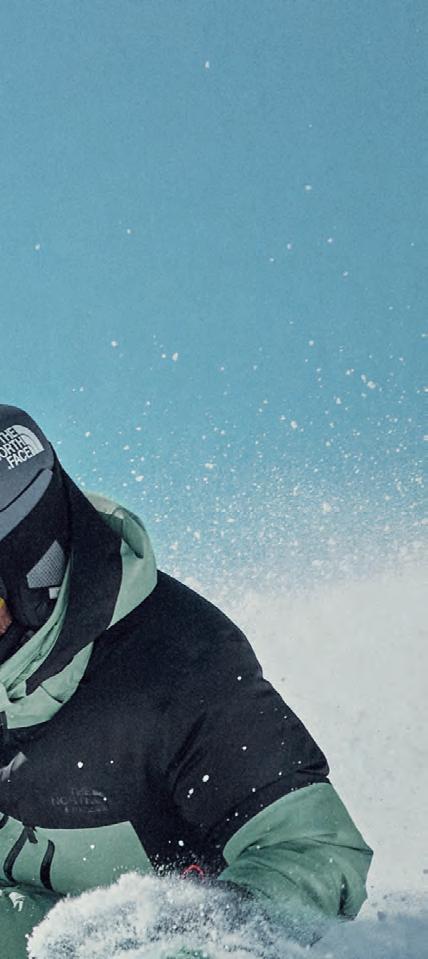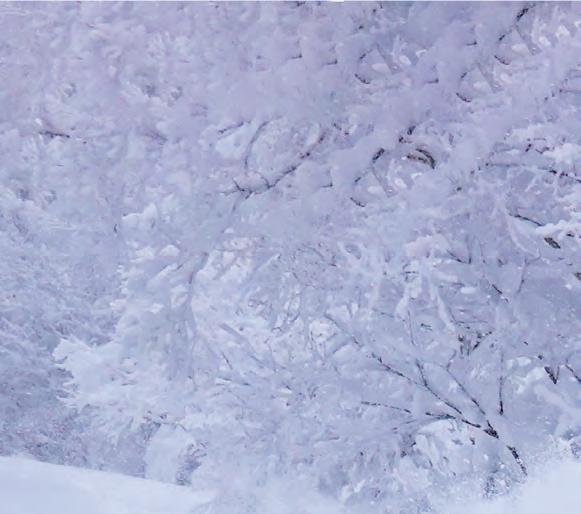

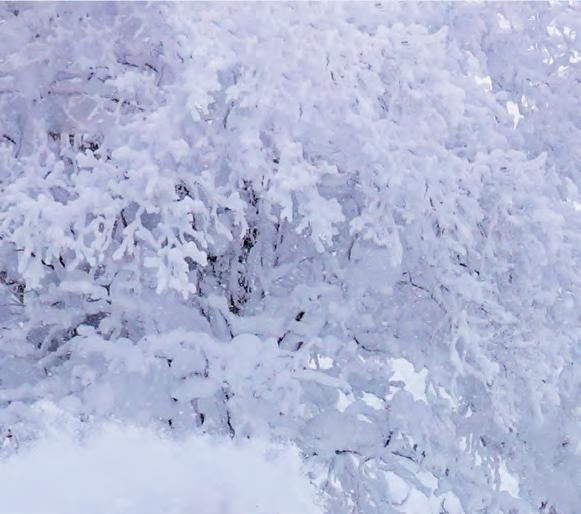








Hidden Lines
Chasing turns in England & Wales
Olympic Hopes
The drive for success in 2026



When does winter excitement start for you? Is it when your favourite resort gets its first snowfall, or when you find yourself reading inspiring stories like the ones in this magazine? For us, it’s when the new season’s gear hits the shelves and talk turns to where, when and with whom we’ll ski.
Over the next 80 pages, you’ll find inspiration for dream trips to Japan and Norway, as well as slopes closer to home – and meet the characters who make the Welsh and English hillsides their snowy church. You’ll also pick up tips to make family ski trips smoother.
With 2026 marking an Olympic year, we spotlight the athletes carrying our medal hopes to Milan and Cortina – including ambassadors Kirsty Muir and Tom Greenway, slalom legend Dave Ryding and Winter Paralympian Menna Fitzpatrick.
Plus, we test new ski boot tech like Dual BOA and round up the latest skis, clothing and slope essentials to help you make the most of every turn.
Wherever you ski this winter, we hope it’s a memorable one – see you out there.
ellis-brigham.com
04. DIARY: WHAT’S ON
Unmissable mountain moments to pack into your ski season.
06. TECH TALK: DIALLED IN
How BOA is redefining fit, feel and performance in ski boots.
08. SKI BOOTS
Our top picks, from classic buckles to BOA precision fit.
12. HOMEGROWN HEROES
Inside the grit, graft and glory of Britain’s Olympic hopes.
20. PARK LIFE
Freestyle skis that turn the whole mountain into your playground.
24. FOCUS ON: HIDDEN LINES
The quiet, determined pursuit of snow in England and Wales.
Proud to support

32. GET THE LOOK
Where performance meets style: this season’s best skiwear.
40. BEYOND NISEKO
A mountain guide’s journey through Hokkaido’s wild interior.
48. FREERIDE FEELS
Skis, boots and equipment to take you beyond the boundary.
53. WILD WEEKENDS
Six epic escapes for a lifeaffirming short ski break.
58. ON EDGE
The best piste and all-mountain skis for resort ripping.
62. CANDIDE SKIS
The legendary freeskier brings signature flair to his new ski line.

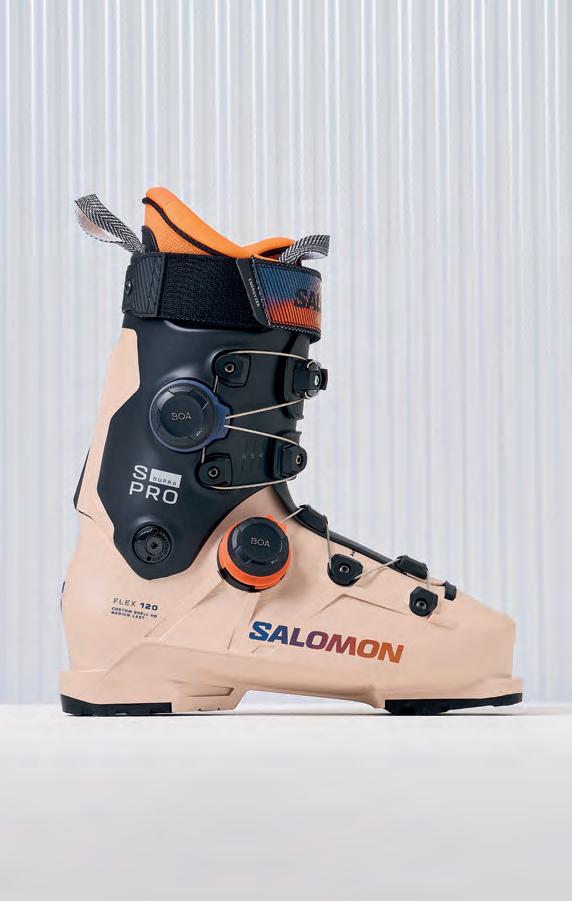
For more inspirational content and ideas, follow us on Facebook and Instagram. We’d love to hear about your adventures – share them with us using the tag #livebreatheoutdoors
64. NORTHERN SOUL
Exploring a lesser-known Norwegian ski touring paradise.
70. BACKCOUNTRY GEAR
Go further, faster and higher with these top touring picks.
72. DOWN WITH THE KIDS
An expert’s guide to making family ski trips fun for everyone.
75. KIDS’ KIT
Fun and functional gear for the next generation.
76. FAMILY RESORTS
Six family-friendly ski resorts for a happy holiday.


79. PEAK VISION
Helmets and goggles to help you head into winter with clarity.
82. STAFF ADVENTURES
Aviemore store’s Matt Brown takes on the Cairngorm 4000ers.









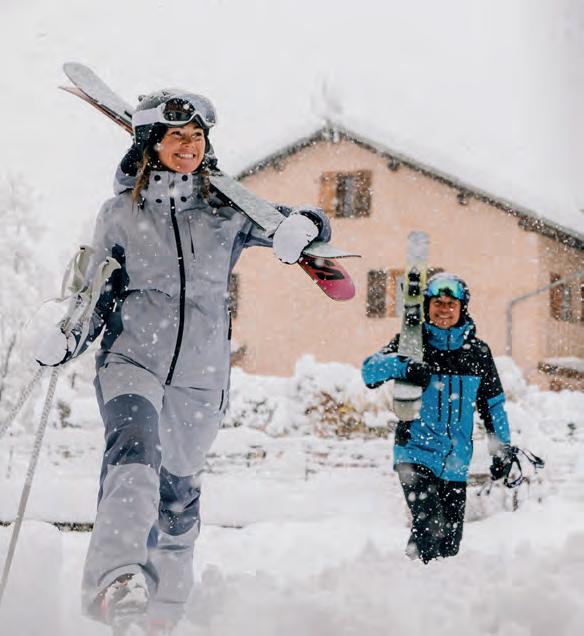
We all know how to ski – this event is about how to think while skiing.
Back by popular demand, Louise Pode returns with her empowering Ski with Con dence course – an evening designed to help skiers tackle fear, anxiety and self-doubt on the slopes.
Drawing on her 25 years as an Executive Coach, NLP Master Practitioner and Chartered Physiotherapist, Louise shares practical tips and strategies to manage anxiety, change your mindset and rediscover the joy of skiing.
The 60-minute presentation will be followed by a relaxed 30-minute ski with con dence clinic, giving you the chance to chat, reflect and ask questions.
Ellis Brigham - Xscape, Milton Keynes: 12 Nov 2025
Ellis Brigham - Bristol: 13 Nov 2025
Ellis Brigham - Xscape, Yorkshire: 18 Nov 2025
Warren Miller Sno-ciety
Nationwide: Oct - Nov 2025
warrenmiller.co.uk
Warren Miller’s latest lm Sno-ciety celebrates an unforgettable story set here in the UK, alongside epic journeys across the world’s greatest mountain ranges.
Mountains on Stage
Nationwide: Dec 2025
From K2 to the Mont Blanc Massif, the winter edition of Mountains on Stage showcases inspiring tales of freeride skiing, bold ascents and human resilience.
The London Snow Show
Olympia, London: 18-19 Oct 2025
The UK’s biggest snow show o ers two days packed with the very best gear, brands, and resorts, plus incredible speakers to whet your appetite for the ski season ahead.
Backcountry Smarter (Ellis Brigham stores)
Covent Garden: 27-28 Oct 2025
Manchester: 17-18 Nov 2025
X-Site, Glasgow: 25-26 Nov 2025
Henry Schniewind and Mark Jones combine their o -piste expertise to give you the knowledge, technique, and decision-making skills for greater autonomy in the backcountry.
Tamworth Snowdome: 8 Nov 2025
Winking Owl, Aviemore: 20 Nov 2025
More dates and times to be announced
Join us for a screening of Armada’s longanticipated team movie – ORNADA. It fuses their revolutionary skiing and artistic vision into a one-of-a-kind lm, accompanied by an original live-scored soundtrack.
Scan for more information, up-to-date listings and to book your place


Kendal Mountain Festival - Snow Night
Kendal: 20 Nov 2025
In collaboration with The North Face, we’re kicking o the winter season in true style. Featuring lm premieres and inspiring speakers from the global ski and snowboarding community, the event captures the full spirit of life on snow.
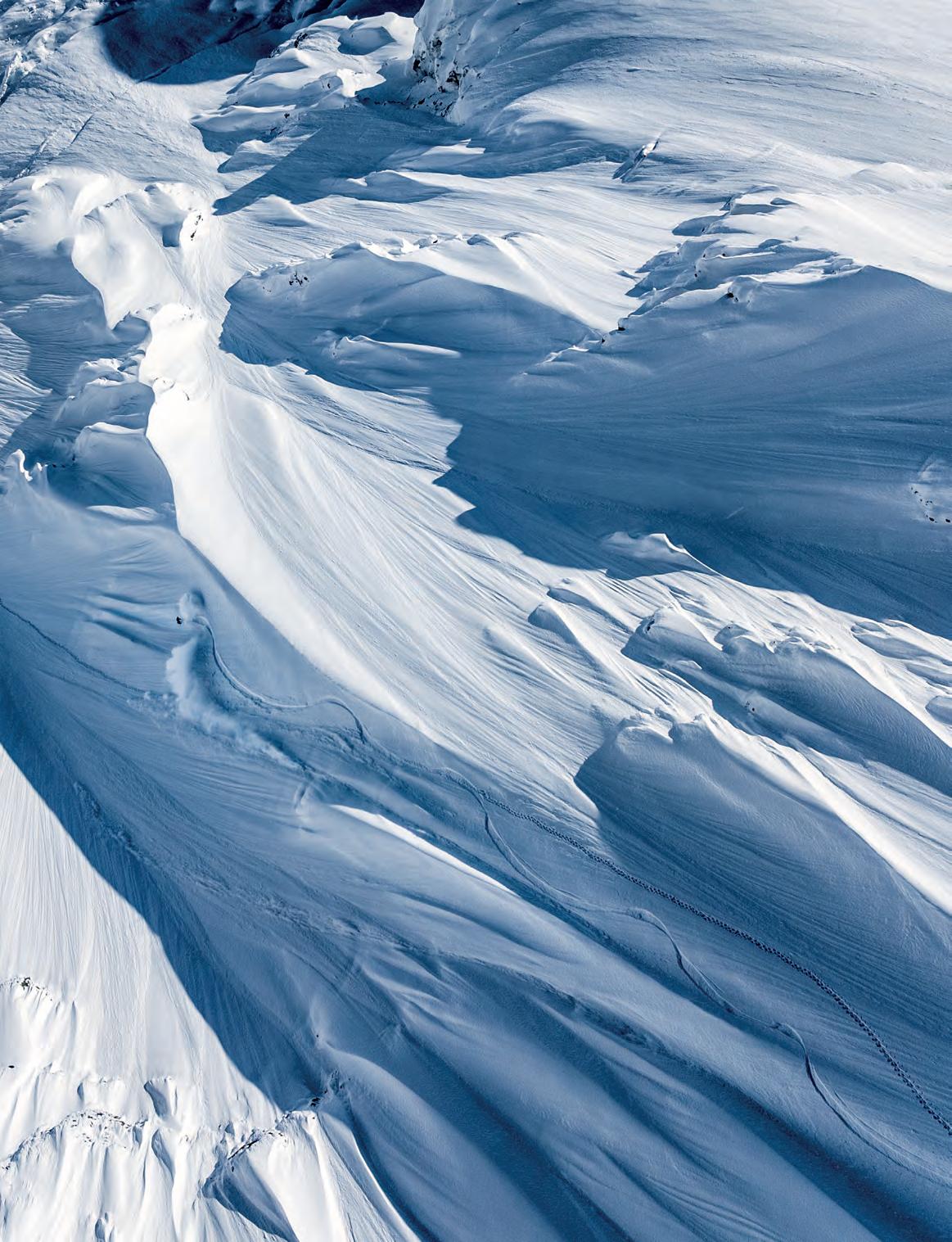
Built for hunting the steepest and deepest powder.

A fast-tightening fit system once reserved for cycling shoes and snowboard boots has taken the ski world by storm. Our Ski Equipment

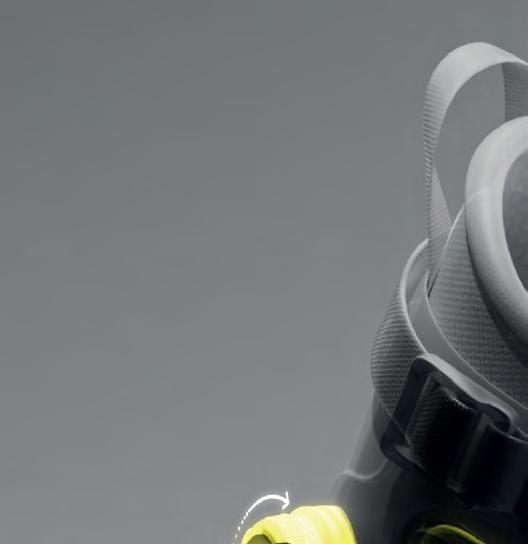
Buyer Steve Wells explains how BOA ski boots work and why more brands – and skiers – are embracing the tech.
Let's start simple – what is the BOA system, and how does it work in ski boots speci cally?
It's a cable system with contact points on the boot that's tightened or released via a dial on the side –it's incredibly easy to use. You can get single BOA on the foot with buckles on the leg, BOA just on the leg, or this season's main launch – Dual BOA on both cu and foot with no buckles.
How does it di er from traditional buckles in terms of t, feel and performance?
Traditional boots use buckles at set positions –generally two over the foot and two on the cu . BOA uses more contact points to even out pressure and improve the wrap when closing the plastic shell, with the dial moving the cable in small increments. This creates better foot hold and increased comfort, with added convenience.

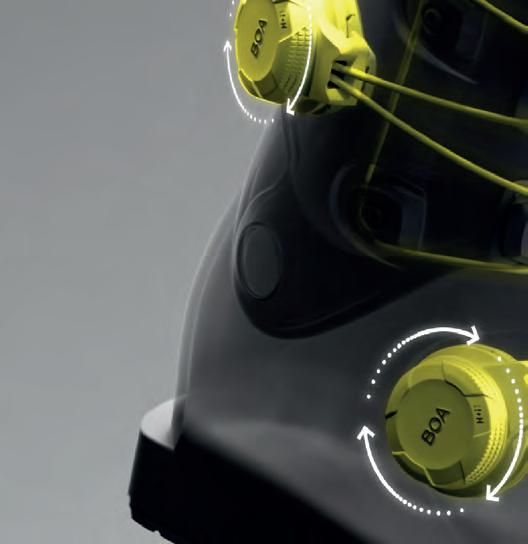
What are the main performance bene ts skiers might notice when switching to a BOA boot?
You need to think of comfort because without it, performance doesn't exist. By evening out the pressure and ensuring a good wrap around the foot, BOA improves both comfort and control. If your boot ts properly and feels good, you’ll ski better.
“YOU'LL SEE MORE INTERESTING DESIGNS IN COMING SEASONS – BOA ISN’T GOING AWAY”

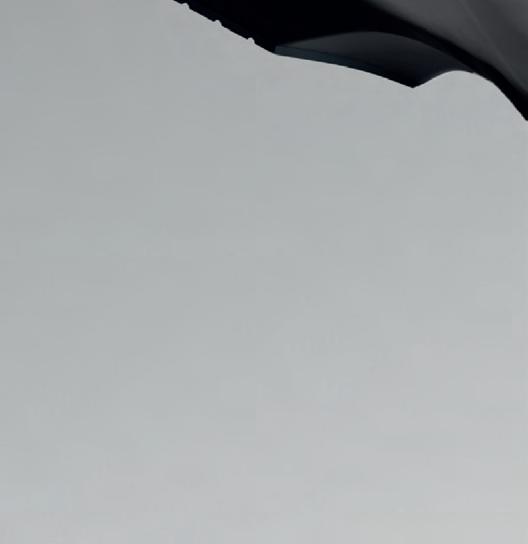

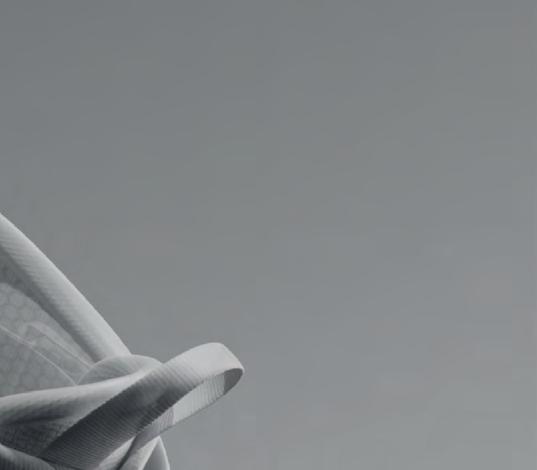
Have you skied in BOA boots yourself? What did you notice?
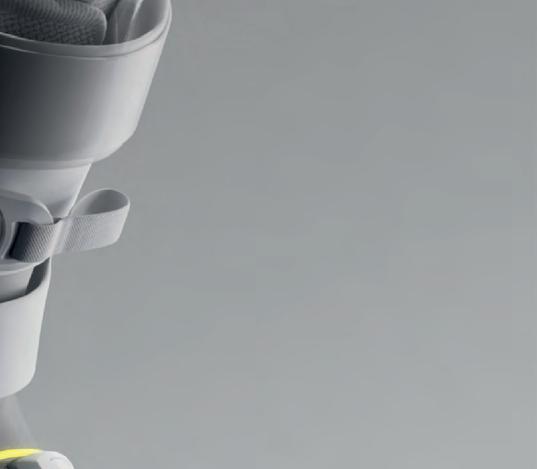
Yes, many times and various models. Single BOA on the foot is extremely intuitive – just twist the dial to tighten or loosen, or pop it up to release. The cu version looks complicated, but is simple in practice. Tweaking the pressure on the fly is extremely easy – handy when you’re on the lift, strolling around town or limbering up at après.

Which boot brands have gone big on BOA?
In the rst year it was just Atomic, Fischer, K2 and Salomon. Since then, nearly all of the major alpine brands have introduced BOA models. K2 has committed the most, replacing many of their traditional buckle boots entirely, while most other brands now o er both buckle and BOA options across their ranges.
Are there any potential downsides compared to traditional four-buckle setups?
The biggest downside is the increased price, but many skiers are happy to pay for the improved convenience and comfort.
Is this tech aimed more at recreational skiers, or are racers embracing it too?
It's aimed at various levels of skier, but you won't nd it on shop rental boots or entry-level models. Alpine ski racers haven't embraced it yet – that's more complicated, related to the dial placement, but testing continues. Competitive freeskiers on the Freeride World Tour have been using them for a couple of seasons.
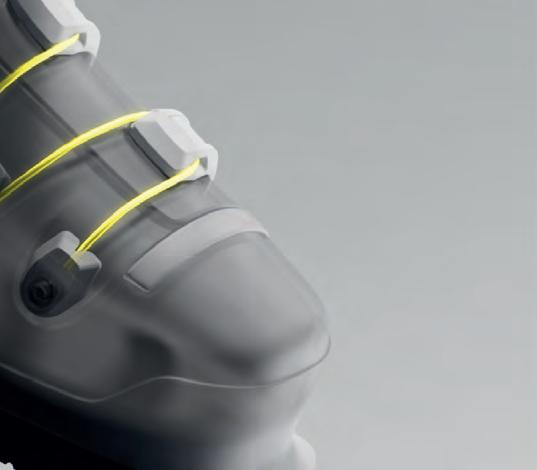

What about durability? Any issues with wear and tear?
The design is extremely clever – if hit with enough force, the dial pops o but stays attached to the cable, then simply clicks back into place. In early testing, we even smashed a demo boot against a tree and used a digger to apply pressure – the dial just popped o and reattached. So the chances of breaking one are very small. And should that happen, all components are generic between boot brands, making replacement parts easy to source.
Does BOA work better with some boot designs than others?
The important thing is that the shell was designed to work with BOA cabling so the plastics can wrap correctly using the extra contact points. In theory you can add BOA to any boot, but to maximize it, the boot should have been designed with BOA in mind from the start.
Are there di erences in t between one BOA dial or two?
Dual BOA gives the most even pressure, but if you have pronounced calf muscles and slimmer ankles, buckles may t that conical leg shape better. The important thing is getting the correct boot size and shape rst – then BOA adds re nement.
Some say BOA is more about hype than true innovation. Does this tech have staying power? There's certainly hype, but it is true innovation. It's pushed brands to rethink closure systems, so you'll see more interesting designs in coming seasons –BOA isn’t going away.
Finally, if a customer is on the fence, what's your honest advice?
Go into boot buying with an open mind. Work with the expert fitters in one of our stores to select the best boot for you. Ultimately, the right ski boot is the one that fits best – and if you’re lucky, it will be a BOA.




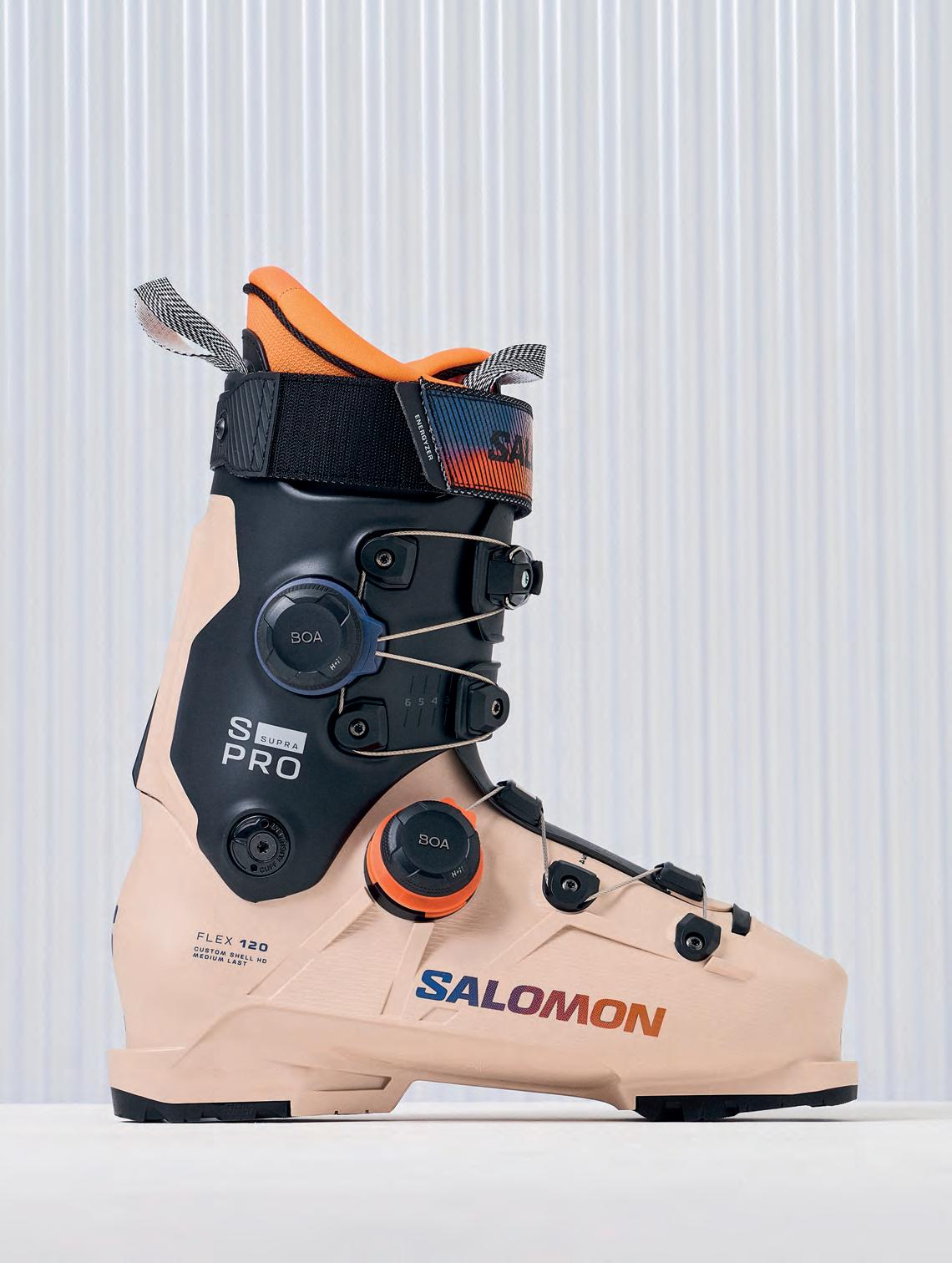
Salomon S/Pro Supra Dual BOA 120 £570
A medium-volume, 120 flex charger that swaps four buckles for Salomon’s Dual BOA system, wrapping the foot and lower leg evenly for a reassuringly snug, pressure-free t. The customisable PU shell and Exowrap liner dial in personalisation potential, while the generous squared-o toe box ensures all-day comfort.
£560
£580





This race-stiff, medium-volume boot blends cutting-edge tech with classic control. A BOA cuff wraps the lower leg for instant power and razor-sharp response, while buckles on the clog keep that locked-down feel around the foot. A customisable Tri-Force shell and 3D Cork/Primaloft liner add comfort and precision, creating a dialled-in fit that’s ready to push as hard as you want to.








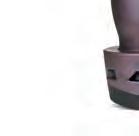
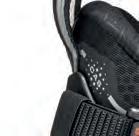

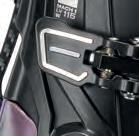
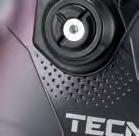
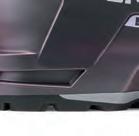

















Armada’s rst-ever ski boot is a resortready powerhouse that blends overlap precision with cabrio-style freeride design. A 100mm medium-volume last with strong heel hold, progressive 130 flex and cable/buckle system all translate into max power transfer. The rubber Kush bootboard takes the sting out of big landings and tech inserts in the toe add sidecountry capability.




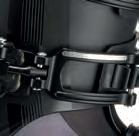










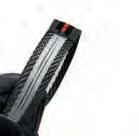
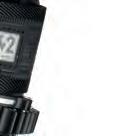

















Tecnica’s Mach1 115 LV W TD2 is the real deal for expert female skiers who want race-bred power in a ski-all-day package. A 98mm low-volume last and burly 115 flex make it seriously precise and responsive, while the women’sspeci c C.A.S. liner and shell are fully customisable. GripWalk soles stop you skating on the way to après. feel











£500
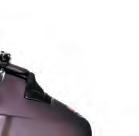

Scan to book an instore boot fitting appointment today




£590
Born from Atomic’s Redster line, the all-new Remedy 130 takes that race-boot precision into bigmountain territory. A super-narrow 96mm last, aggressive forward lean, and race-sti 130 flex deliver an uncompromising, precise and responsive boot. GripWalk soles, a shock-absorbing bootboard and Mimic liner add top tech, making this a niche but deadly weapon for superstrong skiers.
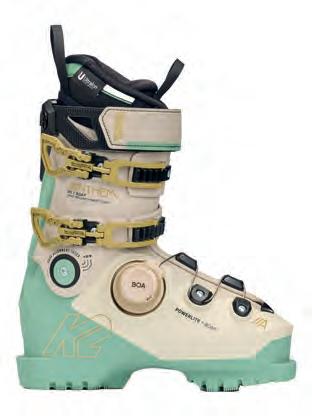
£425
This medium-volume boot is built for intermediate-to-advanced female skiers chasing comfort, control, performance and style. BOA closure on the clog wraps the forefoot evenly to ease pressure points, while traditional cu buckles give that familiar locked-down hold. A customisable Powerlite shell, Lux t Pro liner and Powerfuse Spyne combine to deliver t, comfort and a responsive 95 flex.

£430
Built to make skiing easier without skimping on performance, this women’s-speci c rear-entry boot features a hands-free closure system that makes getting in and out a breeze. The 102mm high-volume provides a roomy, comfort- rst t, while the 85 flex delivers accessible power for intermediate skiers. A heat-mouldable shell and liner dial in the t, while GripWalk soles add reassuring traction around resort.




































£520





£440












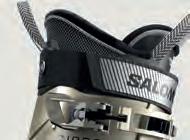




The Atomic Hawx Ultra is a snugfitting boot built for advanced female skiers looking for power and performance but not wanting something which is full race-stiff. A BOA fit system on the clog improves forefoot wrap and heel hold, while the Memory Fit shell and Mimic liner combine to deliver full customisation potential. Prolite construction keeps things light and agile overall, and the 105 flex is precise and responsive.





The S/Pro Alpha 100 W ticks the boxes for advanced and expert female skiers looking for precision without pain. A narrow 98mm last and rm 100 flex set the tone for responsiveness, while the grippy heel pocket, generous midfoot and average instep make the t secure but forgiving. Salomon’s Custom Shell HD plastics and My Custom Fit 4D Sport liner are both heat-mouldable, creating a fully personalised t in minutes and GripWalk soles help keep you upright in slippy car parks. built while Mimic
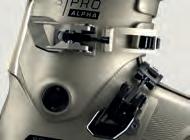


£510
This takes ski boot tech into new territory. The only 110-flex Dual BOA boot on the market, this delivers precision and control that’s seriously ahead of the curve. Dual BOA systems wrap the foot and lower leg for a ne-tuned, pressurefree t, while the 100 mm last gives impressively accurate hold without sacri cing comfort. A responsive, performance-driven boot built for ambitious all-mountain skiers.


















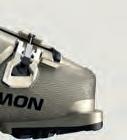
Timeframe: Allow one-two hours.
Grab a co ee rst – it’s not a rush job.
Chat rst – style, goals, injuries… it all starts with you, not what's on the shelf.
Foot check – both feet measured, arches, stance, instep height… we'll size you up before sliding anything on.
Shell test – foot in the bare plastic shell to see the real space around toes, heels and sides.
Try-ons – flex, stomp, wiggle. You’ll test a few models while we watch how they move with you.
Socks count – bring proper ski socks - leave the woolly hikers at home.
Custom tweaks – heat-moulding, shell stretching, footbeds… the magic that takes boots from “yeah, ne” to “these are mine.”
The dial-in – buckles, straps, stance all adjusted so the power goes where you need it.
On-snow tips – you’ll leave knowing how to bed them in and when to pop back for a tweak.

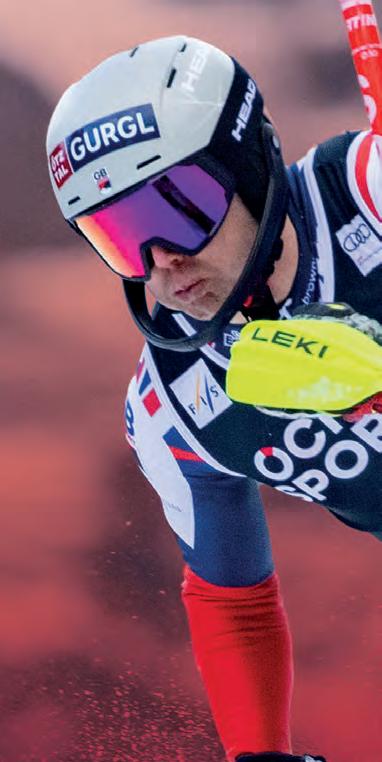

Spotlight



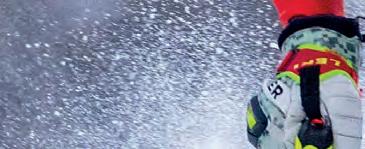

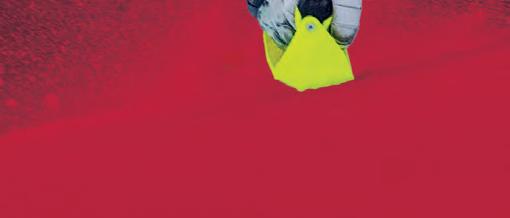

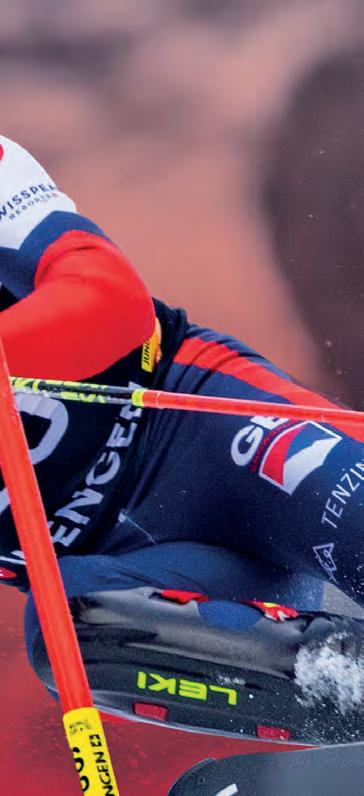
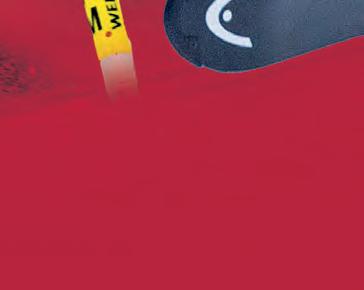


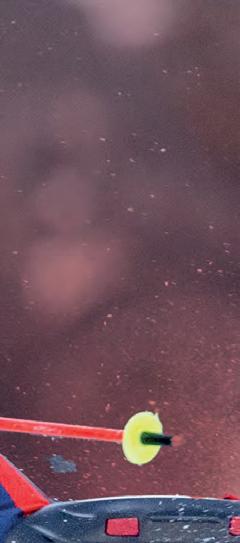




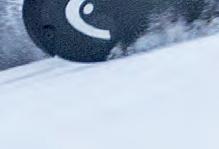

With Milan-Cortina 2026 fast approaching, GB Snowsport athletes are entering the final stages of preparation for the biggest stage of all. From household names chasing one last shot at glory, to young talents climbing the ladder on the world stage, we caught up with skiers across the disciplines to discover what it really takes to push for Olympic and Paralympic success.
Interviews
by: Amy Marwick

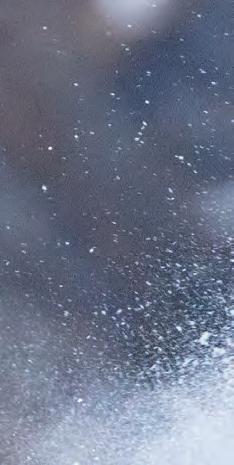
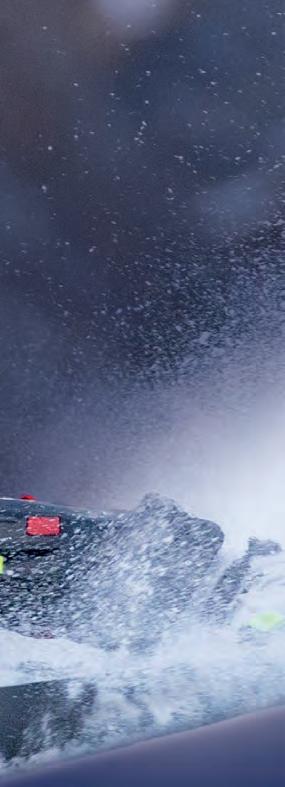


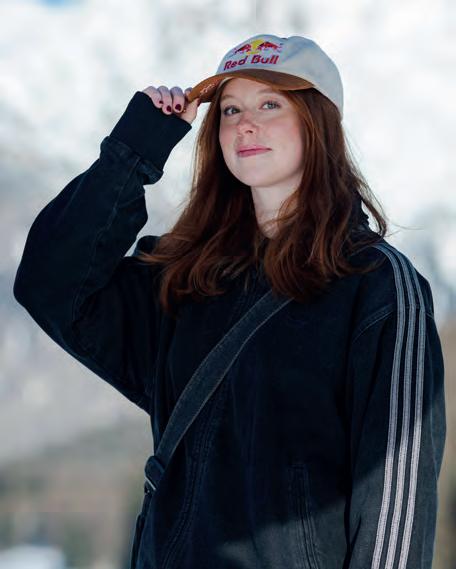
Kirsty Muir was the youngest member of Team GB at the Beijing 2022 Olympic Winter Games, where she quickly established herself as one of Britain’s most exciting freestyle talents. Since then, she has collected four World Cup podiums and, in March this year, claimed her rst World Cup victory. An Ellis Brigham athlete, she is seen as a key contender for Milan-Cortina 2026.
You came back strong from a serious knee injury last season to take your maiden World Cup victory. What was the key to this success?
De nitely the team behind me – my physio, coaches, and the Scottish Institute of Sport sta – who supported me throughout the rehab process and my return to snow. They were crucial in helping me regain con dence. I had to trust that the muscle memory was still there and that my knee could handle it.
You made your World Cup debut at just 15 and have lived your entire adult life as a fulltime athlete. What has been the biggest sacri ce of not leading a ‘normal’ lifestyle? Definitely not having enough time at home with my family, friends, and dogs. I miss them a lot when I’m away, but they are hugely supportive and I’m really grateful for that.
You started out on a dry slope in Scotland. Do you see that as an advantage or a disadvantage when compared to athletes from Alpine nations?
Growing up in the Highlands and learning my trade on the dry slope has taught me to appreciate and make the most of every opportunity!
What’s something people don’t see about the day-to-day grind of being an Olympic-level skier?
The mental side is huge. Every day I push myself out of my comfort zone, sometimes a little, sometimes a lot. Physically I get tired, but mentally it’s exhausting too. It takes practice to appreciate, recognise that and recover properly.
Two intuitive BOA ® dials, one on the upper shell and one on the lower shell, provide precise, customized wrapping that perfectly conforms to the unique shape of your feet.
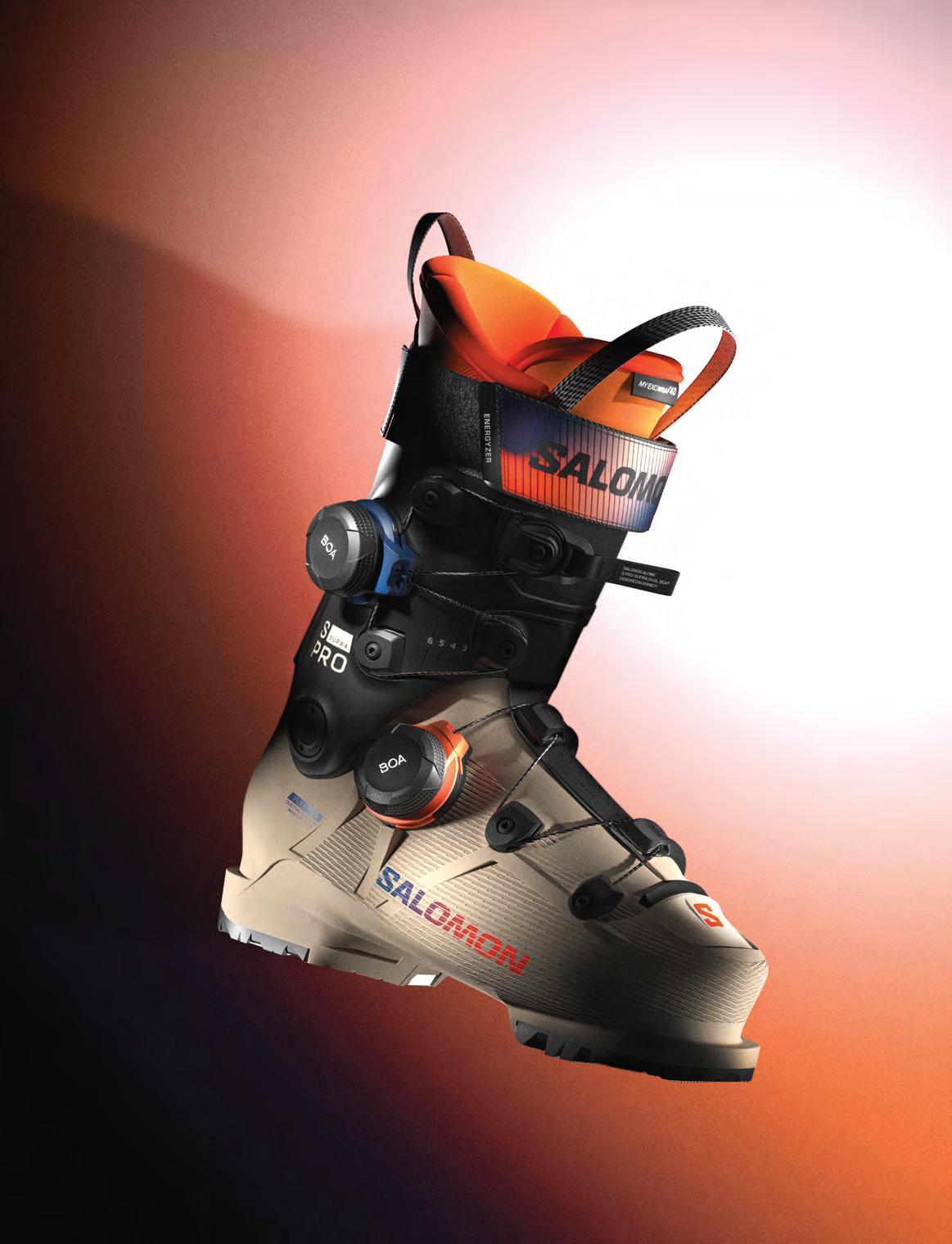

Book a boot fit appointment today at your nearest store
Exowrap ™
The Exowrap ™ construction delivers top-tier control and performance in any snow conditions.
Freestyle skiing demands so much precision and a certain level of risk. How will you manage the pressure in highstakes moments at Milan-Cortina?
Over the years, I’ve learned how best to deal with pressure. My whole approach is to focus on the moment – just me and the course. I block out the external factors. I know I’ve done the work, and at that point, it’s about staying present and trusting myself.
“THE MENTAL SIDE IS HUGE. EVERY DAY I PUSH MYSELF”

Widely regarded as Britain’s greatest ever Alpine skier, Dave Ryding made history in 2022 by winning the Kitzbühel Slalom, becoming the nation’s rst Alpine World Cup champion. Now 38 years old, he announced this summer that the upcoming season will be his last, with hopes of bettering his Olympic best of ninth at PyeongChang in 2018.
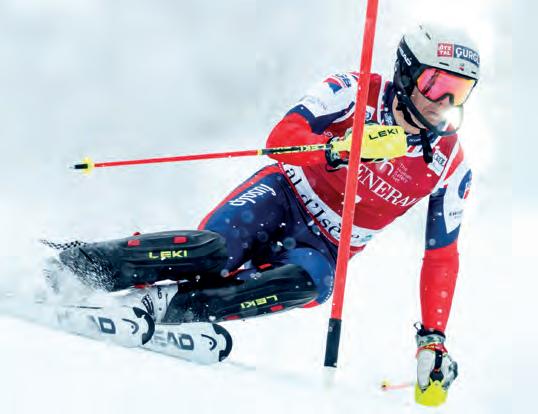
You’re going into your tenth season in the Top 15. What does it feel like to know that this will be your last?
To be honest, it feels right. I’ve given my all throughout my career, and I know I can do it one last time. I’m not 25, 30, or even 35 anymore, but I’ve always raced to be the best I can be. I feel ready to give it one nal push, and I still have enough ‘whys’ to put in the hours and nish with a bang.
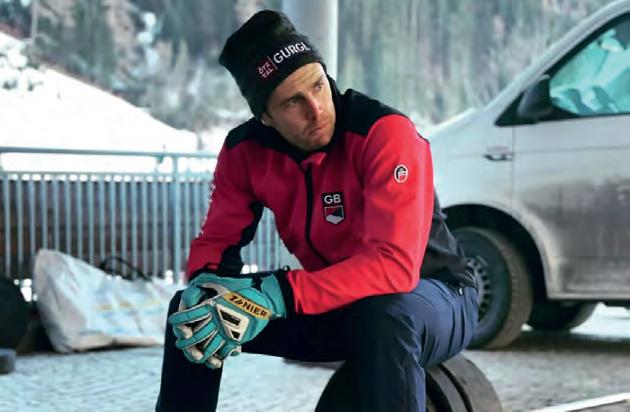
When you look back at your journey, is there anything that stands out as the biggest challenge?
Not many ski racers have faced the challenges I have – from growing up in the UK to constant funding battles. But I like to think they have shaped me into who I am today, giving me skills I use beyond sport. I’ve built resilience and con dence, knowing that with the right mindset, I can achieve amazing things. I’m excited to apply that in life after ski racing.
How has the funding for Alpine racers changed over the years, and what do you think needs to happen to help support the next Dave Ryding? It’s been a constant rollercoaster, but there are now green shoots emerging. We have the talent, but bringing stability to Alpine skiing in the UK will be key.
What does a typical training week look like for you now in the lead-up to the Olympics?
For me, it’s about keeping things simple – adapting training to my body and prioritising recovery. I keep life outside sport simple too – I still need to keep up with the young guys! In the UK, I mix gym work with biking and running. On snow, I focus on maintaining my physical condition while improving performance.
What has been the biggest sacri ce you’ve had to make, and was there ever a time when you questioned if it was worth it?
Being away from my family – it’s tough leaving my wife and daughter at home for the winter, but I’m doing this for them as much as for me. I want my daughter to remember me ski racing; it’s powerful for
her to see that if I can achieve something great, she can too. Getting my best result at the World Champs last season was emotional because they sacri ce so much living without me.
You’ve set a new standard for British ski racing. Has that come with pressure, pride, or both?
De nitely pride. I’ve faced doubt since I decided to go pro. Getting GB’s rst win opened the door for the next generation. Now kids talk about World Cup podiums like they’re normal… For me, they still feel crazy. Being “The First” is the legacy I’ll be remembered for – breaking that ceiling was incredibly di cult.
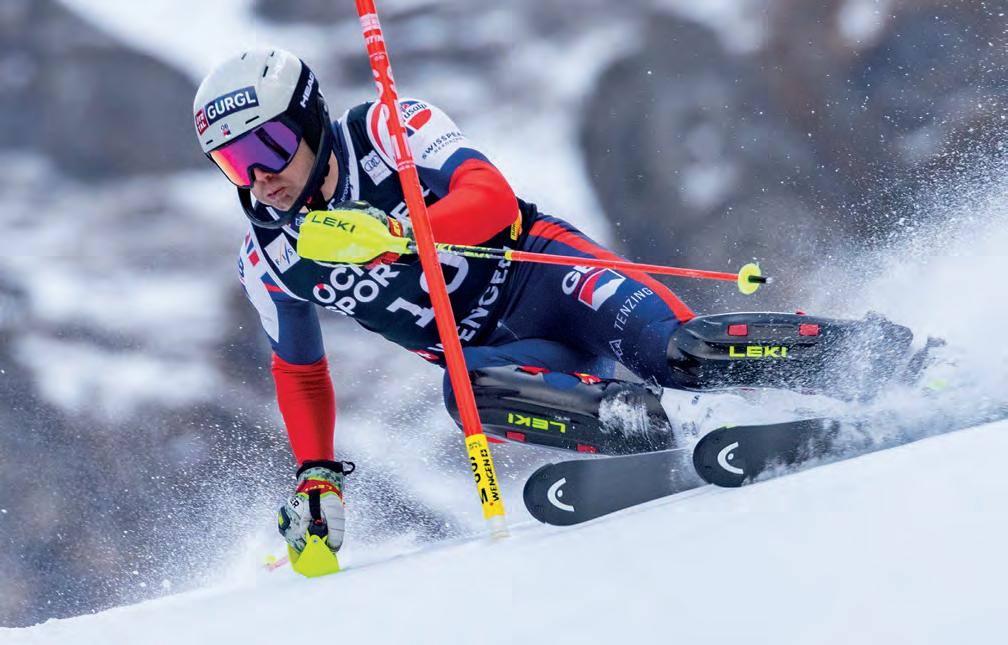
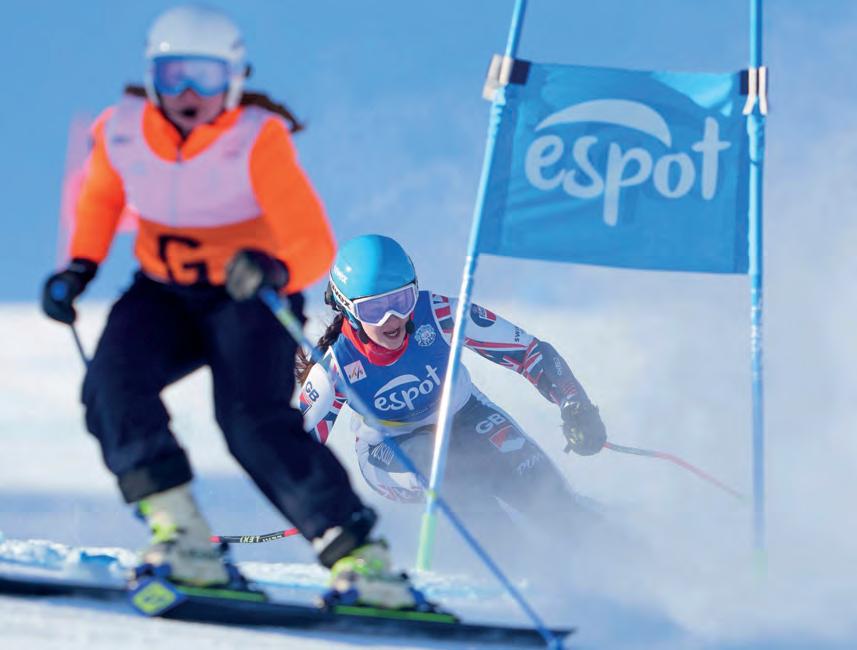
Menna Fitzpatrick is Great Britain’s most decorated Winter Paralympian, with six medals to her name across two Games. Competing with her guide, Katie Guest, she is now preparing for her third Paralympic Winter Games, aiming to build on her remarkable record and further cement her place in British sporting history.
What personal quality do you think has been most important in getting you this far in your career?
Resilience – without question. There have been so many moments where things didn’t go to plan: injuries, missed podiums, or just tough training days. But I’ve always found a way to refocus, learn and come back stronger. The ability to keep showing up, especially when it’s hard, has made all the di erence.
Alpine skiing is demanding for any athlete, but have you faced any challenges speci c to you as a visually impaired skier?
Absolutely. Skiing at high speeds without being able to see where you’re going is
“I’VE ALWAYS FOUND A WAY TO REFOCUS, LEARN AND COME BACK STRONGER”
a unique challenge. For me, it’s about developing total trust in my guide and sharpening every other sense – listening intently, feeling the snow through my skis, and reacting instinctively. That adaptation doesn’t come overnight; it takes years of dedication, as does learning to manage fear and turn it into focus.
Your partnership with your guide, Katie Guest, is essential to your success. How do you build and maintain that level of trust and communication under pressure?
Katie and I have built our partnership on honesty, consistency, and time. Trust doesn’t just happen – it’s developed, run after run. We debrief every detail after each
Dobermann Multipista.
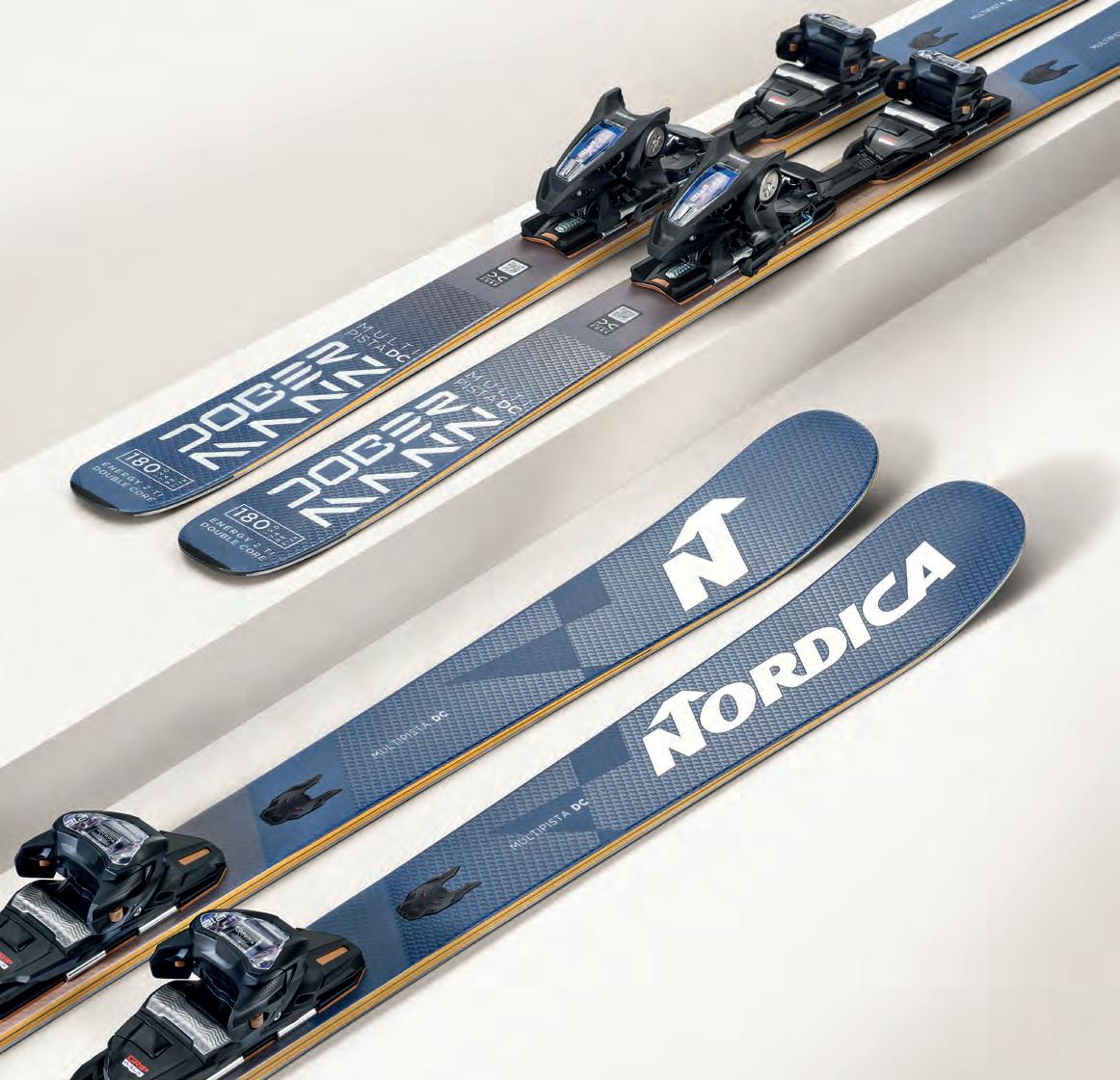

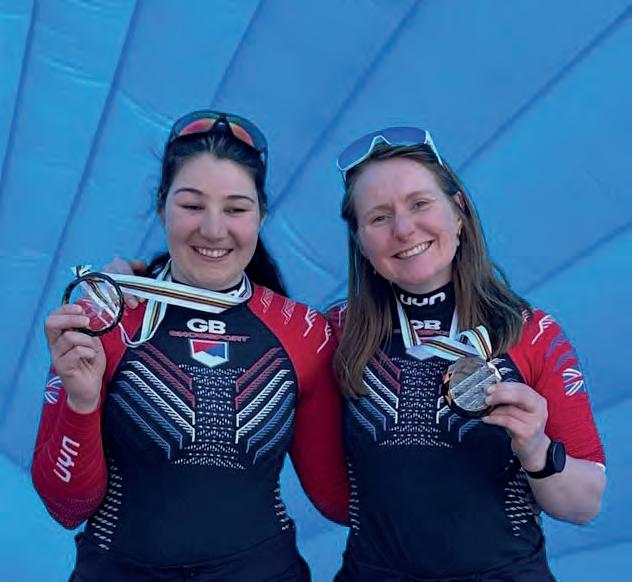
run because clear communication keeps us safe and fast. Under pressure, we rely on routines and a shared belief in each other’s ability. When you trust someone with your life on a mountain, that trust has to be 100%.
What’s the toughest sacri ce you’ve made in pursuit of Paralympic success?
Probably the personal moments. I’ve missed birthdays, family events, and time with friends. High-performance sport demands so much time and energy, often meaning saying no to things you’d love to be part of. It’s a price I’m willing to pay, but it’s not always easy.
Have there been moments on this journey when you doubted yourself?
Plenty. Injuries, losses – even tough days when nothing clicks. Doubt creeps in, but I’ve learned to face it headon. I remind myself why I started and what I’m working towards. I lean on my team and family, letting those hard moments push me further. Sometimes, just taking the next step, however small, is enough to get through.
What’s the one thing you wish more people understood about Paralympic sport?
That it’s elite sport, full stop. We train, compete, and push the limits just like any top athlete. It’s not about “inspiration” – it’s about performance, excellence and the same relentless pursuit of improvement. Paralympic sport deserves the same respect and seriousness as any other high-level athletic competition.






Zoe made her Olympic debut at Beijing 2022 and has emerged over the past three years as one of the world’s leading female halfpipe skiers.
Ellis Brigham athlete Tom Greenway has been on the World Cup circuit since 2020, placing Top 30 at the World Championships last season.
Mateo was crowned World Junior Champion in Moguls in 2024 and has enjoyed a meteoric rise through the sport over the past few years.
After three years away, the British-American Olympic silver medallist recently announced a comeback to competitive skiing for Milan-Cortina.
Britain’s highest-ranked men’s slopestyle athlete, Ellis Brigham athlete Chris is renowned for his railriding skills, breaking into the Top 30 last season.
A legend on the cross-country circuit, Andrew will be aiming to compete at his fth Olympic Games in Milan-Cortina.
“WHEN YOU TRUST SOMEONE WITH YOUR LIFE, THAT TRUST HAS TO BE 100%”

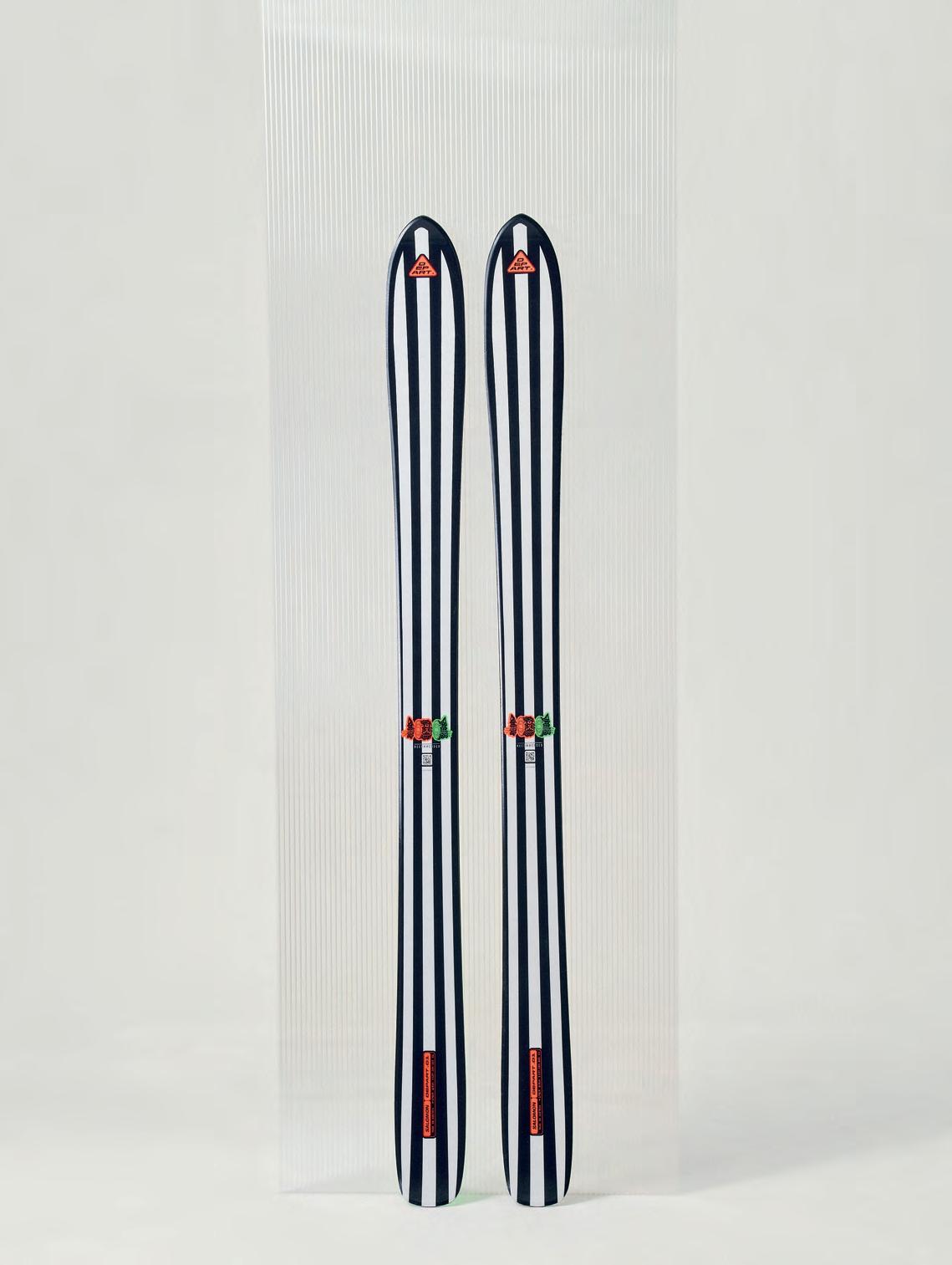
Salomon Depart 1.0
£550
Exclusive to Ellis Brigham, the Depart 1.0 marked Salomon’s big re-entry into freestyle skis. With 106mm underfoot, fat tips, and playful rocker, this new-school freestyle twin pivots, smears, and pops with ease, while still holding an edge when you need it. With a short 14m radius (at 170cm), it carves up hardpack like a slalom ski with a creative streak. Best for progressive skiers looking for a wide, versatile, park-to-pow ski that turns the whole mountain into a playground.
£500
Candide’s answer to pure park riding, the new Area 91 is an agile, poppy freestyle ski built to spin, butter, and press all over the hill. The triple-radius sidecut blends easy turn initiation and high-speed stability with the versatility to switch up turn shapes in the blink of an eye. A C-Light paulownia/poplar core reinforced with carbon and breglass makes this a lightweight, tech-driven ski that’s built to last.





£600


A freeride charger with a park streak, the Sender Free 100 is light and mobile enough to spin and slash, yet stable enough to hold it together when you’re pushing the speed dial. With a poplar core, Air Tip, and VAS vibration absorption, it’s lively, energetic, and smooth across all terrain. The 100mm waist and forward mount point nod to its freestyle side, making it just as happy jibbing natural features as blasting big mountain lines.








£650
Part of Armada’s Zero range, the Kimbo 95 is Kim Boberg’s playful park-meets-all-mountain weapon. A soft flex, springboard tail, and 15m radius mean it butters, pops, and slashes with ease, while the Strangerinspired shape makes carving turns just as fun as hitting rails. If you value style, flow, and the freedom to turn the whole hill into a playground, this one-length 95mm underfoot ride has fun dialled right up to eleven.
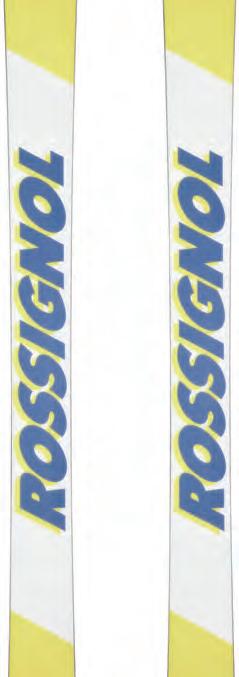
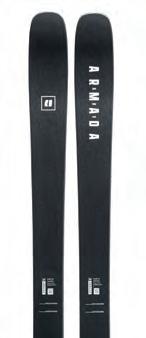
£550
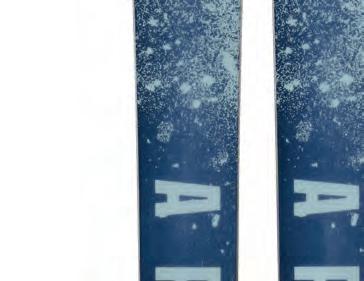

waist with AR Freestyle Rocker
If your perfect mountain day mixes pow stashes, groomer laps, and park sends, the ARV 100 has the versatility and backbone to keep up. A 100mm waist with AR Freestyle Rocker ensures this all-mountain freestyle twin feels solid underfoot yet playful enough to butter, press, and spin with ease. The w3Dgewall construction bonds sidewall to core for durability and edge grip, and the blacked-out graphic adds serious style points.

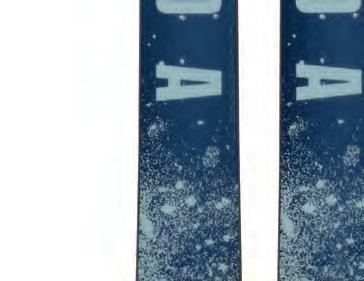


£575
Old-school style meets modern power with the re-designed Super Black Ops 98. Beefy yet cheekily versatile, this stealthy player is built to charge hard: full sidewalls and Titanal give grip and dampness underfoot, while rocker in tip and tail lets you smear, butter, or blast through chop without losing composure. If you’re into hitting kickers, blasting long turns, and riding everything from groomers to trees, this winter weapon gives you the control and responsiveness to give it the big sends.












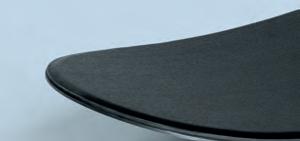

Candide BC 111
£650




The BC 111 is pure Candide: wide, light, and built for playful expression everywhere. A C-Light paulownia/poplar core with carbon and breglass keeps it lively underfoot, while long rocker lines and a straight central sidecut invite you to float, slash, and smear at will. At 111mm, it’ll surf powder with ease, but its real trick is turning moguls, side hits, and tree lines into everyday launchpads.

Atomic Bent 90
£470

The Bent 90 is Atomic’s everyday freestyle favourite - light, playful, and agile enough for the park, but with the chops to ski the whole mountain. A 90mm waist and directional shape keep it quick edge-to-edge, while HRZN Tech in the tip and tail adds float and smooth turn initiation. Stable enough to stomp landings yet loose enough to butter through side hits, it’s a sick-looking, multi-talented player that really can do it all.
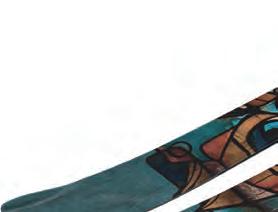

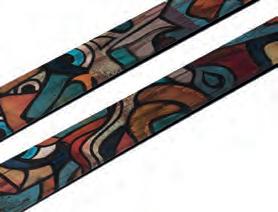













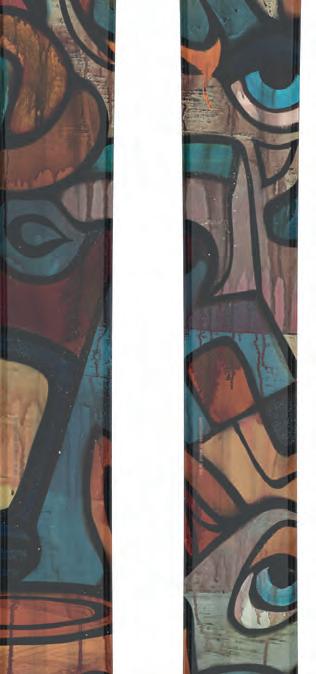

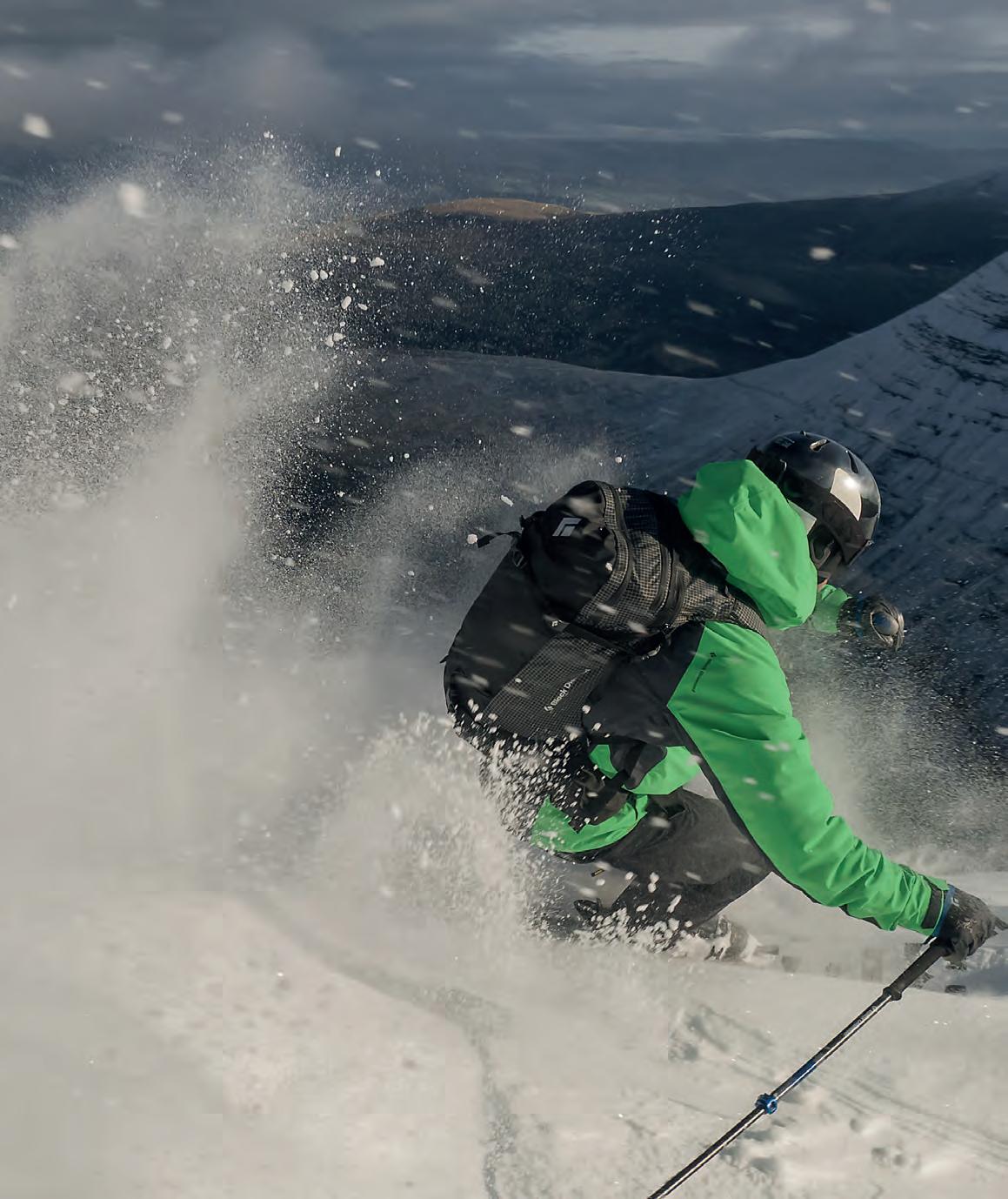











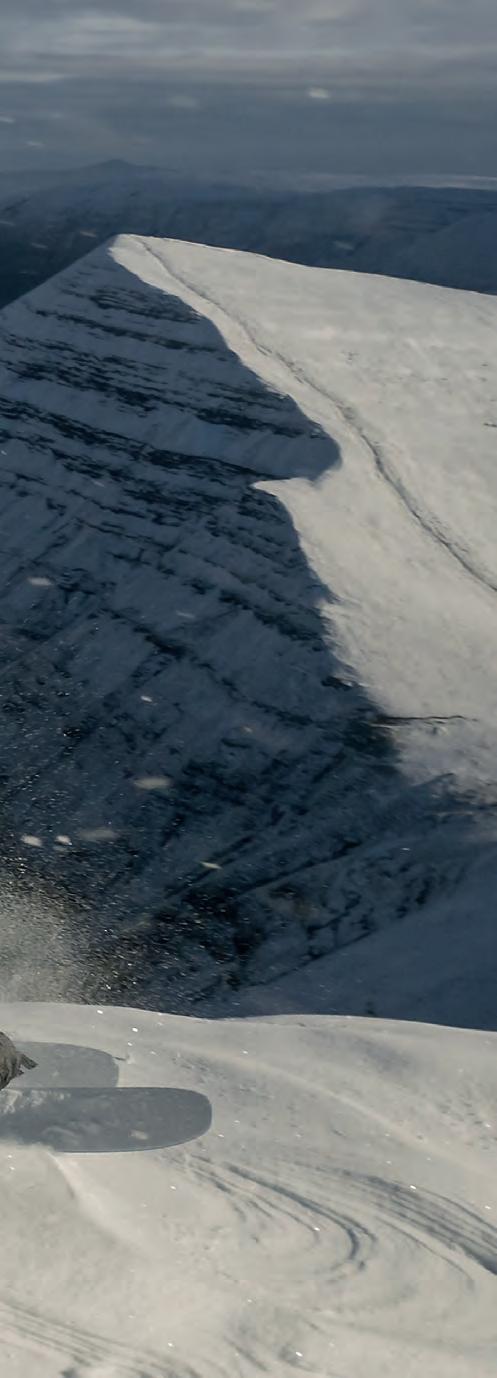
From rope tows on Cumbrian fells to fleeting powder days in the Brecon Beacons, Sophie Nicholson discovers the lesser-known world of English and Welsh skiing – and meets the local pioneers keeping it alive against the odds.
Scotland has long owned the UK’s ski story – home to ve ski centres and growing number of backcountry skiers earning turns in the remote and wild Highland landscape. It’s the rst – and very often the last – place you think of when it comes to skiing on homesoil. South of the border, the picture looks very di erent: for most, “skiing in England” conjures images of floodlit dry slopes, a few chilly laps in an indoor snowdome, or, more often than not, booking a flight to the Alps.
That’s certainly been my experience. I grew up in the Highlands, learning to ski at The Lecht with my mountainloving parents, my earliest memory being blown back uphill by a Scottish gale aged four. Skiing has always been part of my family fabric: my father taught me the ropes, having been taught by his powder-mad padre – my grandfather, Theo Nicholson, a lifelong ski mountaineer who was an instructor in Commando mountain warfare. Back then, the Brigham brothers would cycle out from Manchester to deliver Theo’s hiking boots to his home in Cheshire – a very cool act that stitched together two families whose paths keep crossing in the mountains to this day.
Until recently, I’d barely given a thought to the idea of skiing in England or Wales. On those special days when conditions nally line up at home in Scotland, there’s acres of terrain to go at – so why would anyone bother with even thinner cover on gentler slopes in the Lakes or the sheep-grazed hills of the Peak District?
But a recent family dinner, followed by one too many tumblers of the “water of life”, led to a surprising discovery: my legendary mountain goat grandfather was actually a lifelong member of the Lake District Ski Club based on Raise, above Glenridding in Cumbria. Created in 1936, the club is made up of a group of enthusiastic and dedicated volunteers who maintain a ski tow that operates anytime there’s enough snow to ski on each winter. Reaching the lift involves an hour’s hike from the valley – often longer with heavy kit or in deep snow – and with no marked pistes, skiing here is as much about adventure and commitment as it is about the downhill.
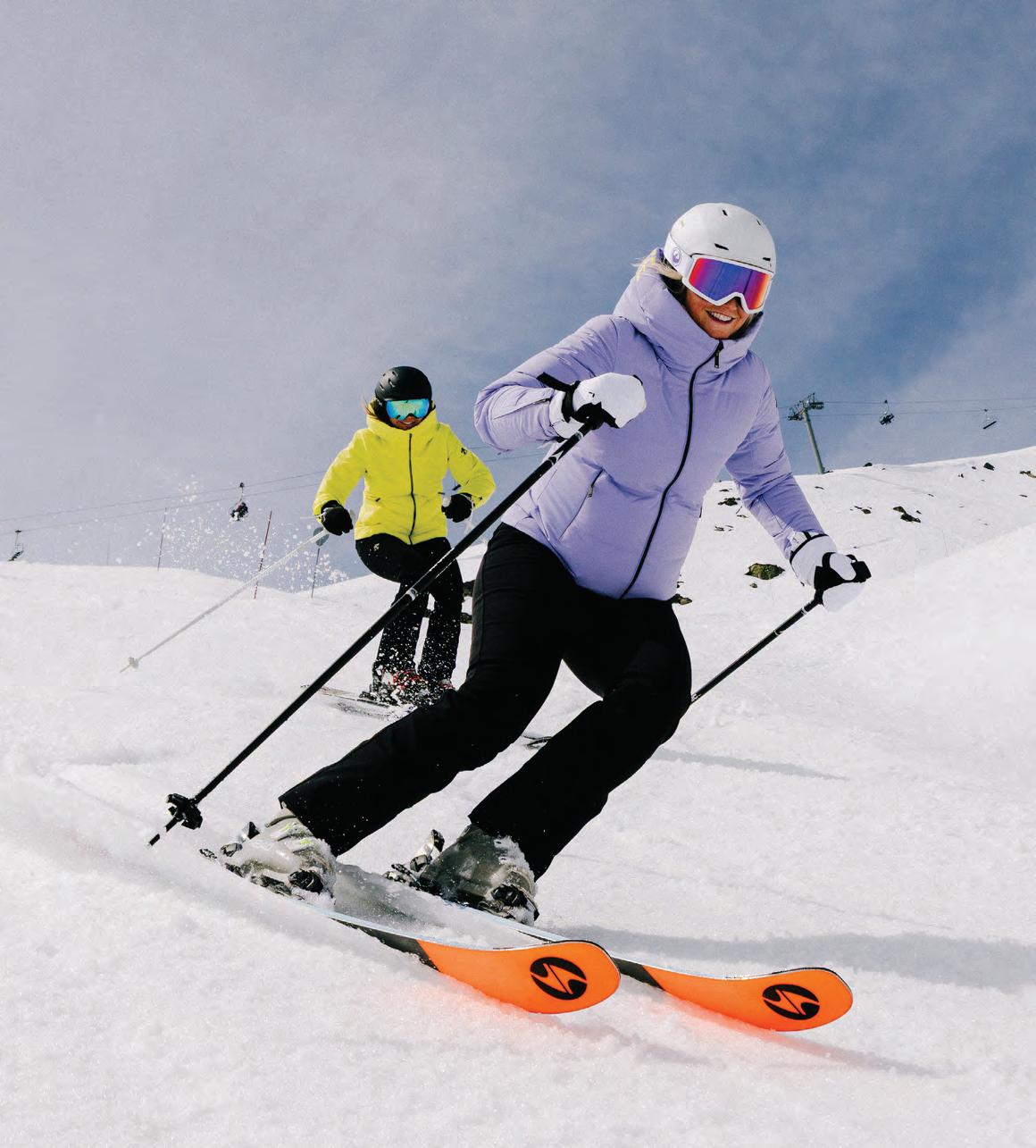
“SOMETIMES WE’RE LITERALLY

Learning about my grandfather’s deep connection with the club at Raise planted a snowflake-shaped seed. If he’d been so committed to skiing in England, what was I missing south of the border? That curiosity sparked a desire to dig into the hidden snowdrifts of the English and Welsh ski scene – a weird and wonderful winter world built not on predictable powder or big vertical, but on volunteer spirit, fleeting and sudden snowstorms and a stubborn devotion to getting on snow whenever and wherever possible.
At rst glance, the Lake District might not scream “ski destination.” But head up onto the fells above Ullswater, slog up the hill for an hour from the car park at Glenridding, and you’ll stumble upon something extraordinary: a 360-metre button lift clinging to the side of Raise.
Mike Sweeney of the Lake District Ski Club has been helping to keep that tow turning for years. What motivates him and his fellow volunteers to lug fuel cans up the hill, dig the lift out of snowdrifts and spend countless hours maintaining it?
“Some of us, like our tow team leader Stu, just love the engineering challenges of keeping the lift running in such a wild, exposed place,” says Mike. “Others do it for the community. But what gets us all going is the fun everyone has on a good day. You can really feel the buzz, and the smiles on people’s faces make it worthwhile.”
On those rare days when the Lakes are carpeted in white, Raise comes alive.
“There’s a one-hour climb just to get to the tow – two if you’re carrying all your kit and the snow’s deep,” Mike says. “Navigation isn’t always straightforward either, especially if it clags in. We don’t have piste bashers, except for the odd snowboarder, so sometimes we’re literally digging the tow out by hand. You really do have to earn your turns. But that’s part of the magic. There’s a cosy members’ hut, the terrain is varied, and everyone’s skiing and laughing together. On a good day the views stretch right over Ullswater, Thirlmere and up to Scotland.”
It’s not just the landscape that makes Raise unique. It’s the people. The club’s members range from hardy kids under ten (who must hike up alongside their parents) to octogenarians like 85-year-old Gerard Unthank, a former club president who now serves as assistant hut warden under his wife, Eleanor. Membership costs just £50 a
year – a world away from Alpine lift pass prices – and most people ride “old, battered skis” because the thin snowpack hides plenty of rocks.
Skiing in the Lakes may not be glamorous, but that’s exactly the point. It’s skiing stripped to its raw essence: community, adventure, and a dash of eccentricity. Après? A pint by the fire at the Traveller’s Rest down in Glenridding. Sounds pretty perfect….
If Raise in the Lakes is a community-driven ski hill, Wales is the land of the lone ranger. Few embody that spirit more than Mike Richards, one of the country’s most prolific ski tourers. He still remembers his first Welsh turns, three decades ago.
“I had my first touring setup – Scarpa Denali boots with Fritschi Diamirs on 65mm Dynastar Yetis,” he remembers. “I clip-clopped up from the Pont-ar-Daf car park until I reached the snowline, then skinned to the summit plateau of Pen-y-Fan in the Brecon Beacons. The sun was shining, the turns were smooth, and I could see Swansea Bay glistening 20 miles away. I was hooked.”
In the late ’90s and early 2000s, Richards was usually alone on the hills. But the rise of ski forums and later, social media slowly brought others out onto the hill. First came a snowboarder from Ebbw Vale named Chris Dainton; then, after seasons in the Alps, North America and Japan, Richards returned to Wales in 2009 to find car parks filling up with skiers who’d driven from Shrewsbury, Bristol, even London, at the merest whisper of snow.
Now, alongside his current touring partner Chris Morris from Pembrokeshire, Richards chases storms across Wales – from Pen-y-Fan to the Preselis and the Berwyns.
“Most of the time the weather is brutal and the snow marginal,” he admits. “But when it all comes together, the experiences are as good and as memorable as any I’ve had skiing in 24 countries across five continents.”


©Tom McNally
©Tom McNally
His most cherished days are pure Welsh magic: the first descent of Pen-y-Fan’s steep northeast face after 15 years of waiting; knee-deep powder above his hometown of Aberdare during the epic winter of 2010; and chronicling Chris Morris’s extraordinary “40 days on skis” during the lockdown winter of 2020/21.
While Wales offers adventurous backcountry epics, England’s Peak District delivers a whole other kind of skiing. Explore’s own Amy Marwick – a proud Scot who has skied all over the world - has discovered the joy of seizing shortlived snow days since relocating to Derbyshire.
“It’s pretty unique to be honest,” she says. “You’re skinning through fields and skiing down into valleys rather than anything resembling a mountain. It’s more of a novelty than anything else – but nothing beats skiing in your own backyard.”
That sense of making the most of rare snow isn’t new here. During the Big Freeze of 1962–63, Ellis Brigham and friends turned a field near Chapel-en-leFrith into a makeshift ski area, rigging a Mini wheel as a rope tow and even holding weekly races sponsored by the local brewery.
For Amy, that spirit lives on. Her most memorable outing came in 2023, when a winter storm blanketed Winnats Pass in snow.
“We packed up the car and drove out, only to realise I’d left the roof rack key at home,” she laughs. “My partner Andy had to unscrew all the bindings and reassemble them in the car park. On the way up we even dug a few sheep out of a snowdrift before finally reaching the top for a tricky but brilliant ski back down. There were a handful of other ski tourers out too – it kinda felt like we’d stumbled across a secret society.”

Christmas came early for Christian Morris with sunrise turns o Pen-y-Fan on 23 December 2024
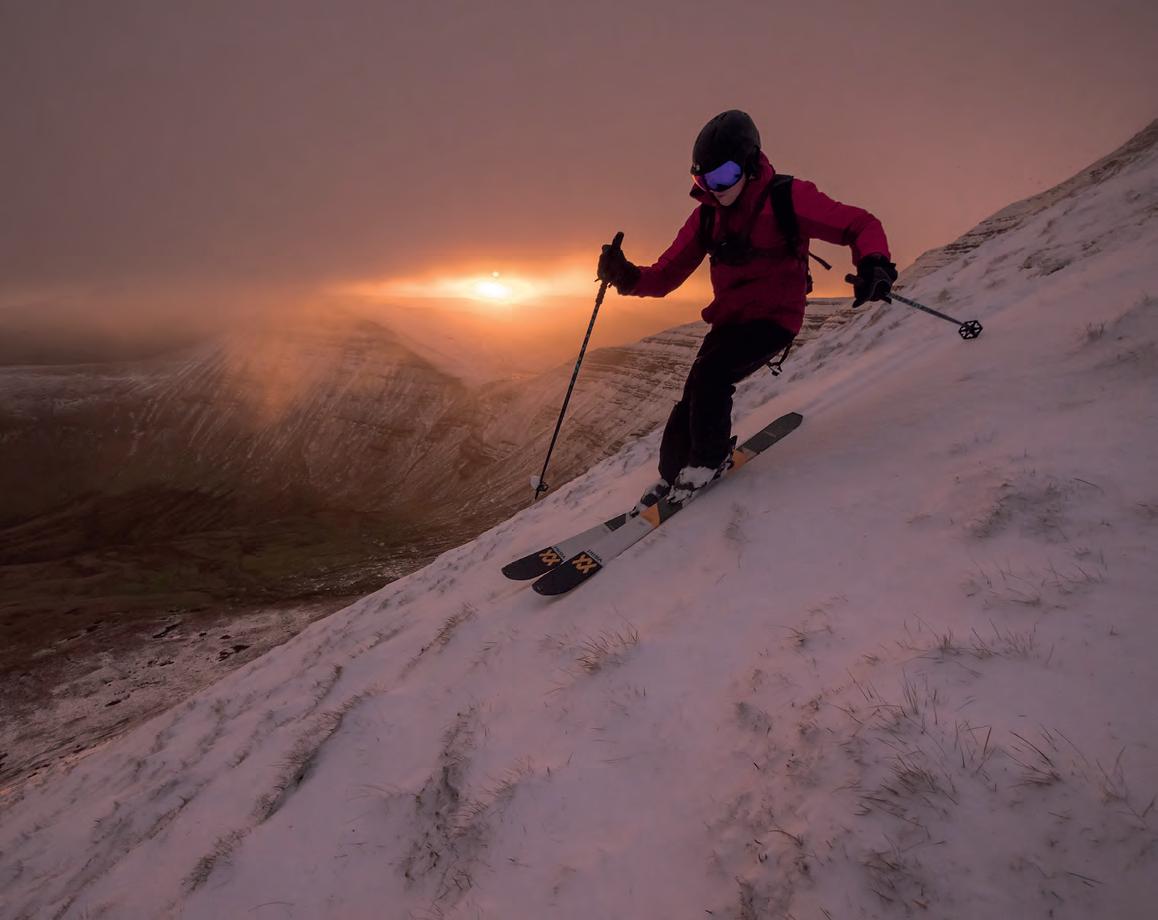
If there’s a common thread between the Welsh hills, the Lake District’s button lift and the snow-dusted slopes of the Peak District, it’s the sheer tenacity of the people who keep showing up.
At Raise, volunteers haul spares and fuel uphill in all weathers, then spend hours digging the lift out before they’ve even clicked into their bindings. In Wales, Richards and friends scan weather charts obsessively, ready to drive or hike at short notice. In the Peak, Amy and her mates treat each cold snap like a lottery ticket – you never know if you’ll win, but you’ve got to be there to nd out.
“Skiing in Britain is often a ‘here today, gone tomorrow’ scenario,” Richards says. “You have to move fast, because the snow can melt or blow away overnight. Half the time you’re just carrying your skis for a walk – but those rare turns are all the sweeter for it.”

“IT KINDA FELT LIKE WE’D STUMBLED ACROSS A SECRET SOCIETY”
Lake District
Raise Ski Club runs a 360m volunteer-maintained button lift above Glenridding, with ski-touring potential on Helvellyn, Great End and other high fells when conditions allow.
North Pennines
Volunteer-run clubs at Yad Moss (England’s longest lift, 600m) and Weardale (two button lifts near Stanhope), plus beginner-friendly slopes at Allenheads in Northumberland.
Peak District
No lifts, but ski touring possible at Winnats Pass, Mam Tor and Kinder Scout on snowy days.
Wales
Touring potential in the Brecon Beacons (Pen-y-Fan), Preselis, Berwyns and Snowdonia when storms roll through.

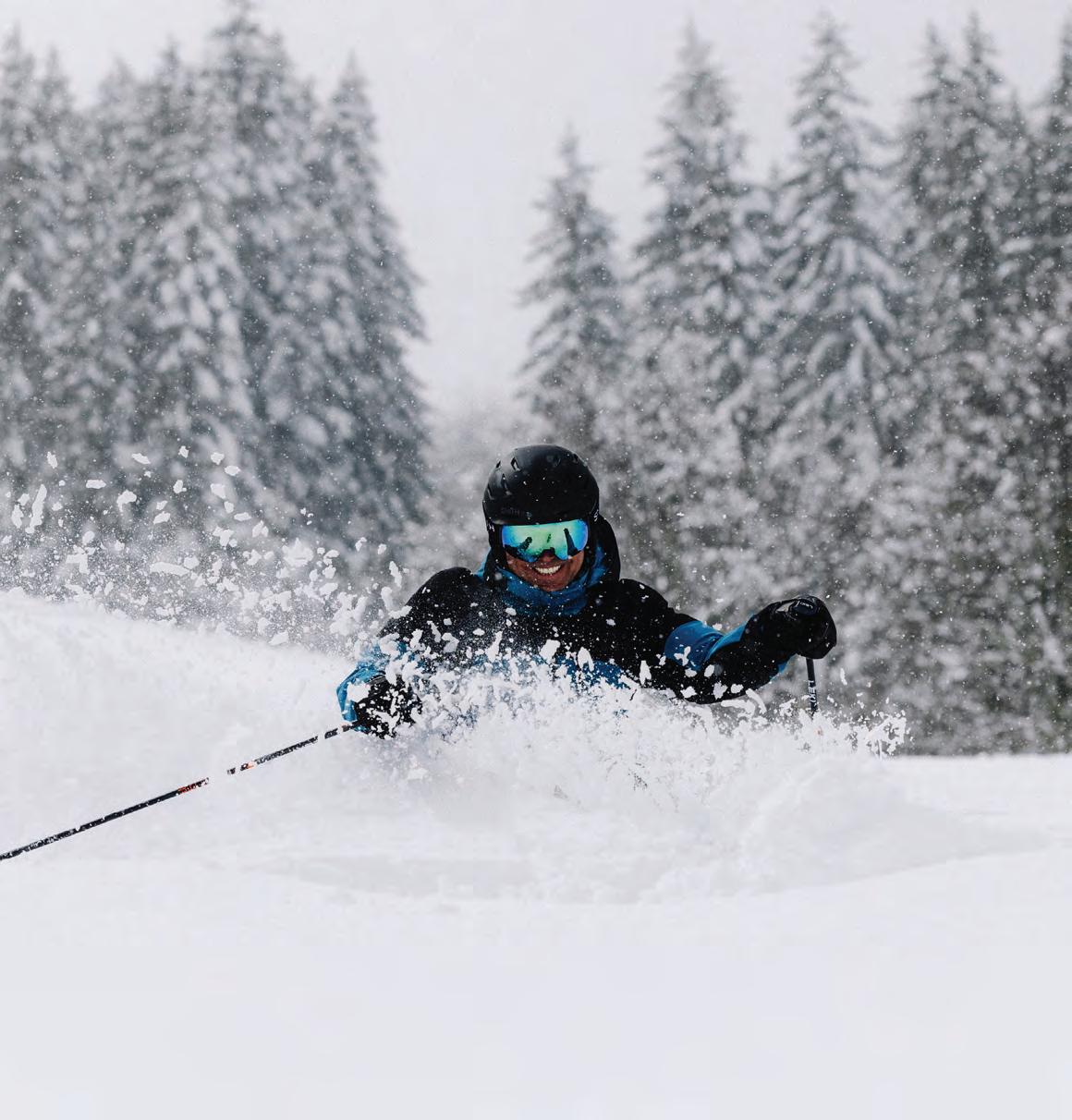

It’s this mix of uncertainty and serendipity that makes the whole experience so memorable: the views from the summit of Pen-y-Fan on a blue-sky day, the sight of Ullswater gleaming beneath you from the tow on Raise, the utterly surreal joy of sliding on skis past drystone walls and snow-buried sheep in the Peak District.
Part of what makes English and Welsh skiing unique is how little infrastructure there is. Outside Raise and a sprinkling of other volunteer-run clubs, it’s very much a DIY a air – reliant on skins, stamina and more than a touch of madness.
Clubs like Kendal Snowsports Club and the Lake District Ski Club have been pivotal in fuelling the eternal stoke. They’re community hubs as much as ski areas, where members range from school kids to 80-somethings, united by their passion for getting on a pair of planks. And with membership fees kept low, the barriers to entry are far removed from the champagne-soaked glitz of the Alps.
That grassroots energy has attracted a cult following online too. Richards notes that hundreds of skiers from across the UK – and beyond – now follow their adventures on social media, waiting for the call when the Welsh hills nally come into condition.
“For some it’s a box-ticking exercise,” he says. “But most of us have been bitten by the bug. We’ll go whenever we can.”
Skiing in England and Wales isn’t easy. The snow is ckle, the snowline high, the climbs long, and decent turns are rarely guaranteed. But that’s also its charm. The skiing may be hit-and-miss, but the sense of achievement – of wringing joy from a landscape that so rarely delivers it –lingers long after the snow has melted.
As Mike Sweeney puts it:“Every day up there is an adventure. Our conditions are often marginal and unpredictable, but that just makes the good days even more special.”
For me, learning about my grandfather’s devotion to the Lake District Ski Club has been a revelation. His passion for skiing wasn’t con ned to the Highlands where I grew up, but stretched to these rugged English fells too.
Exploring the scene south of the border has helped me understand what he must have felt: that resourcefulness, community, and the simple joy of sliding on snow – however briefly, and wherever it falls - is the most rewarding experience of all.
“MOST OF US HAVE BEEN BITTEN BY THE BUG. WE’LL GO WHENEVER WE CAN”


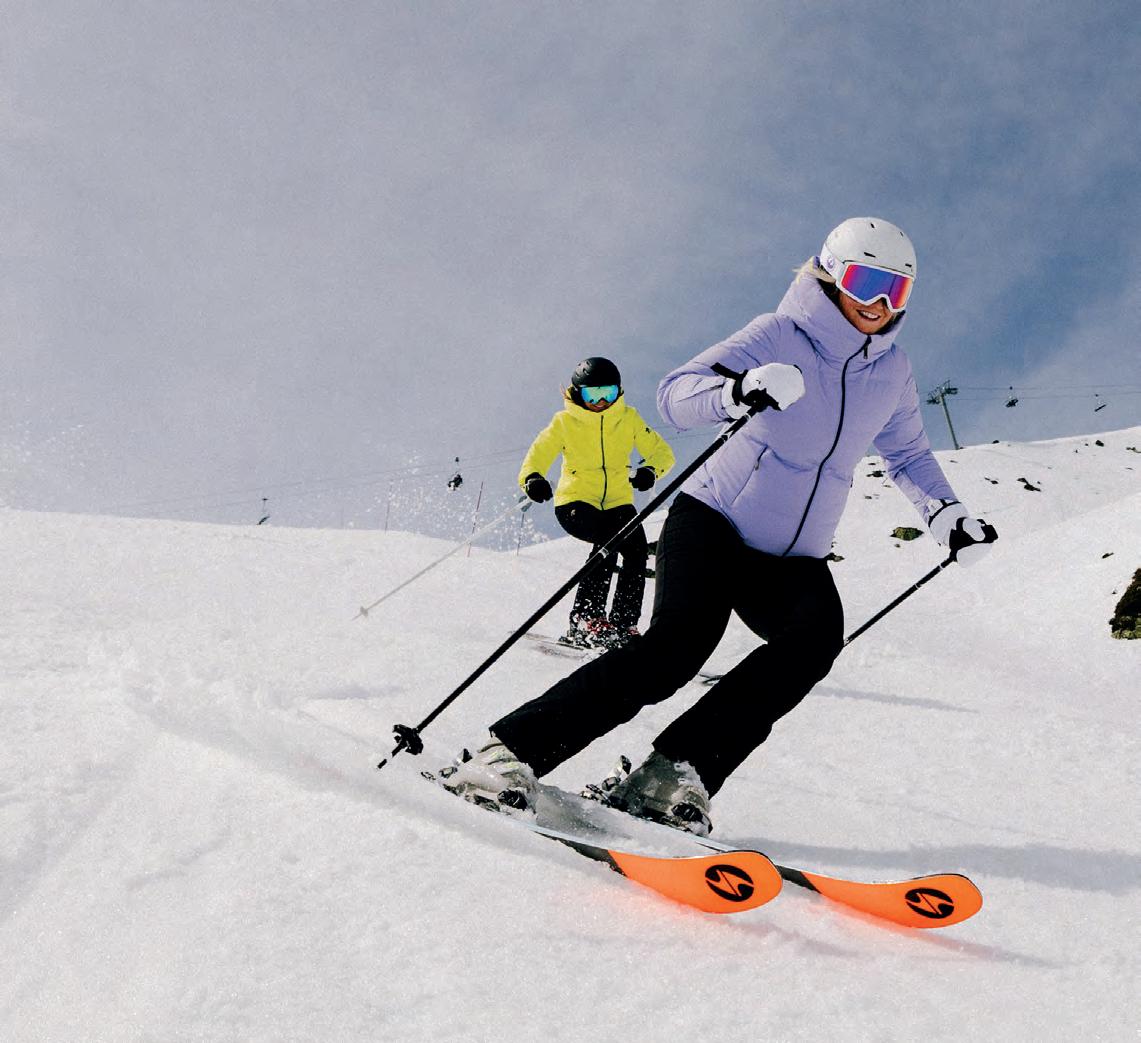
Welcome to a snapshot of our new skiwear collection. Whether you love pristine pistes and fabulous mountain restaurants or charge all over the resort from rst to last lift, our skiwear collection delivers all the comfort, protection and style you need to enjoy your best-ever ski holiday.
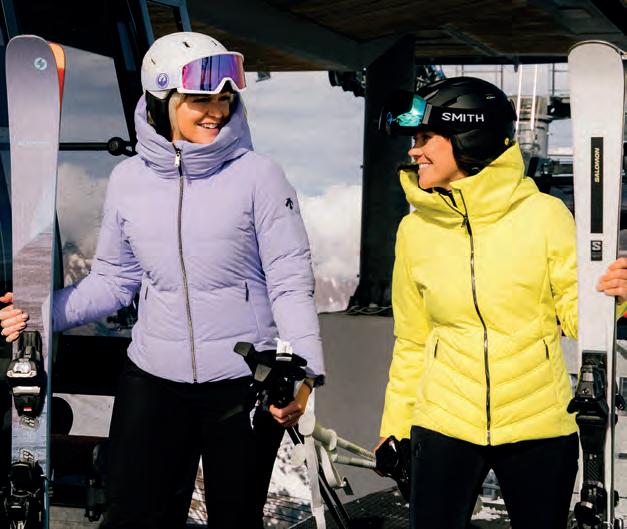
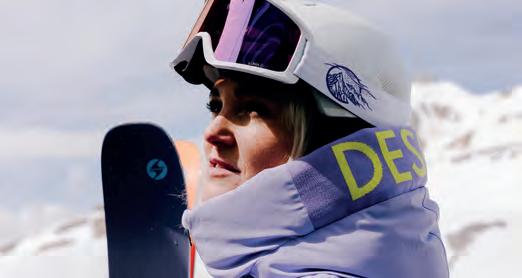
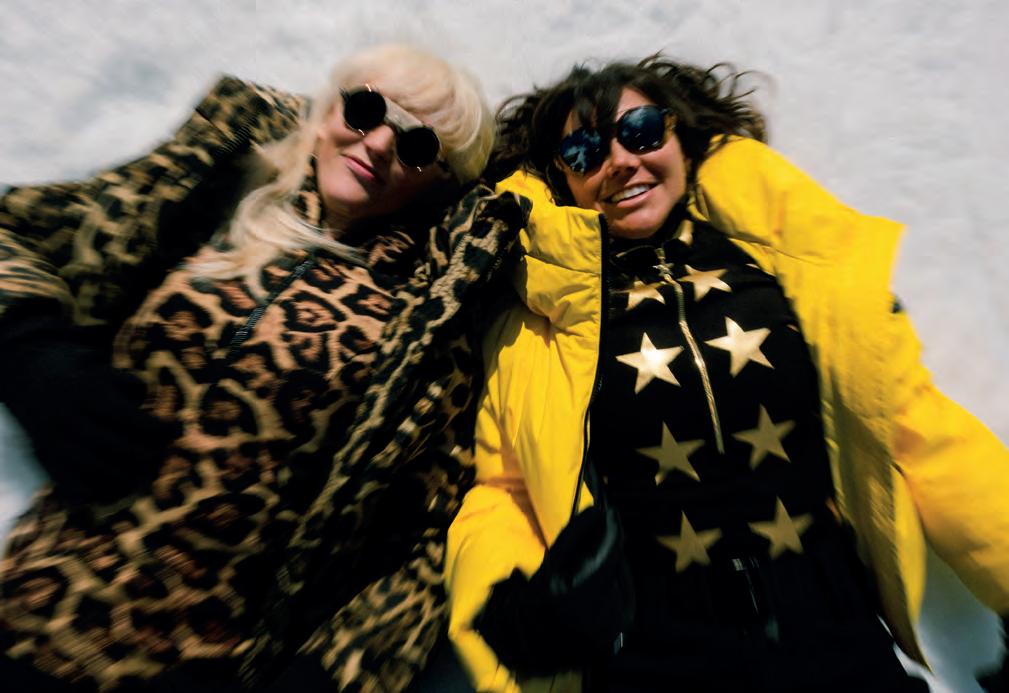
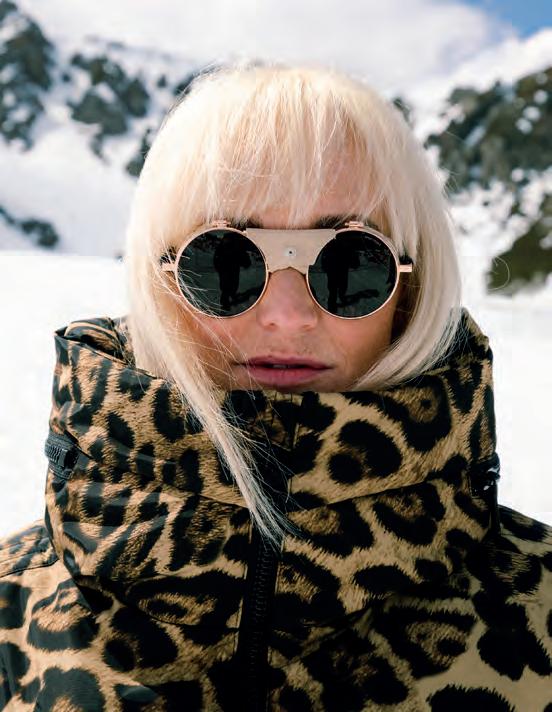
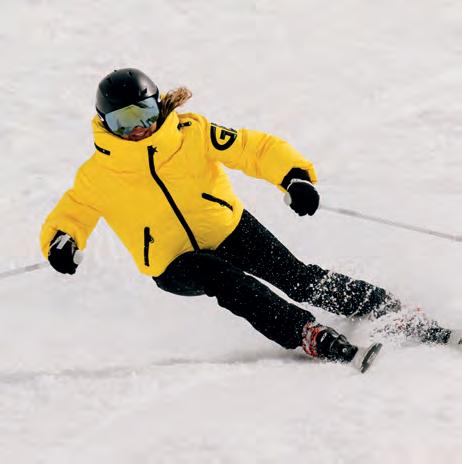
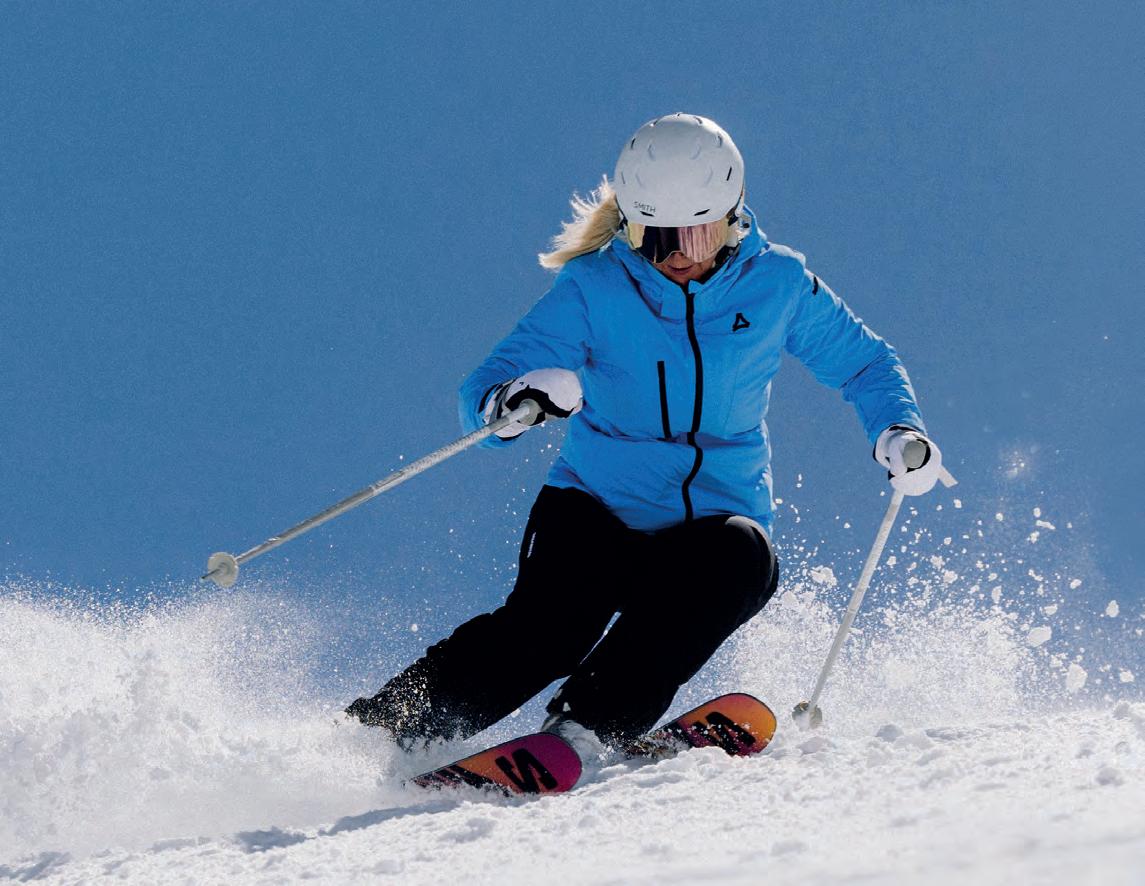
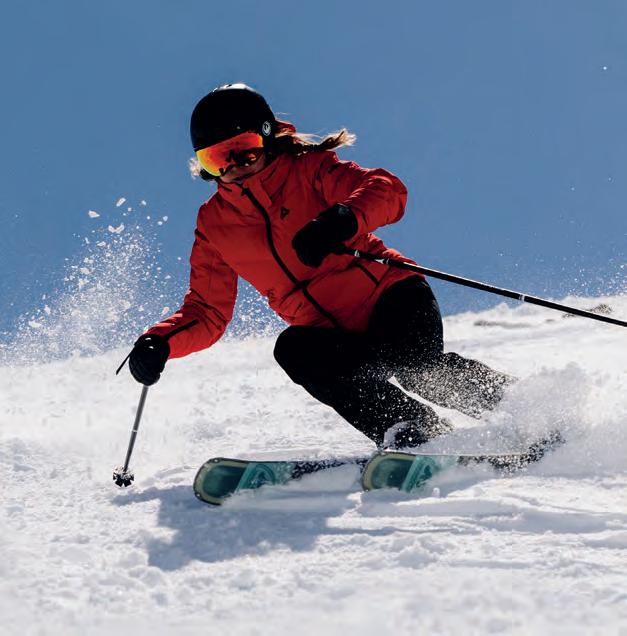
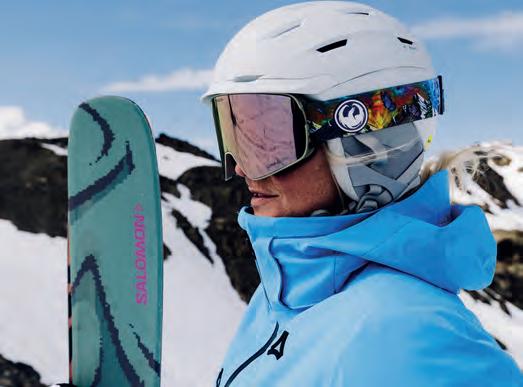


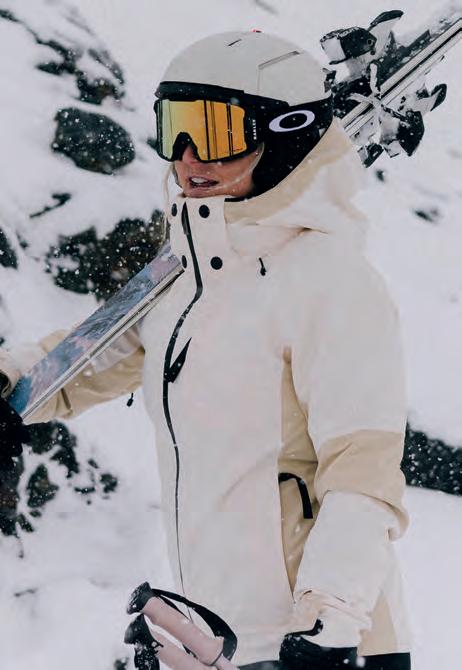
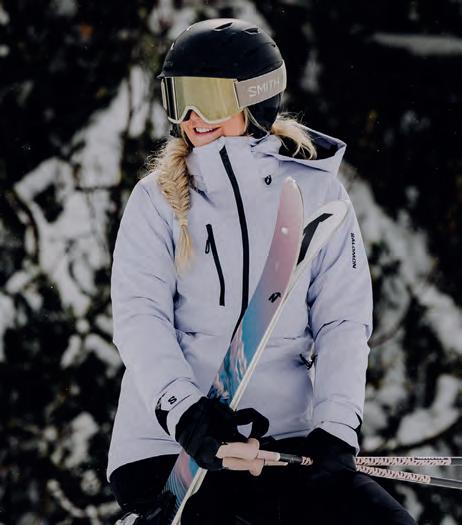


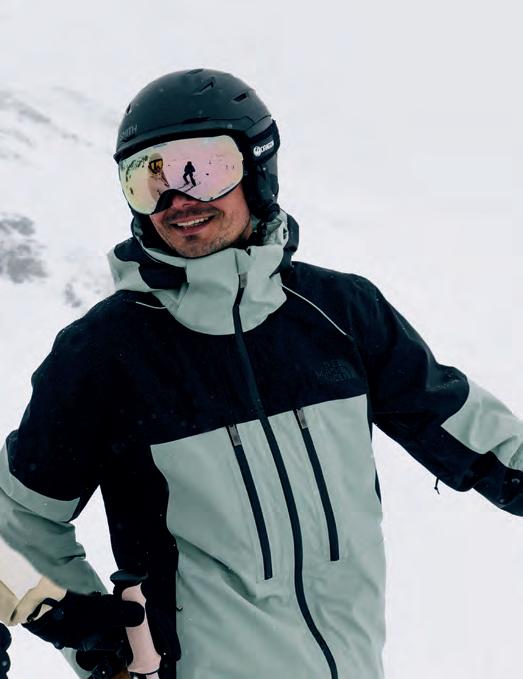
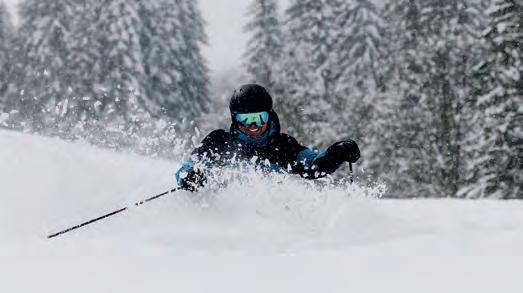
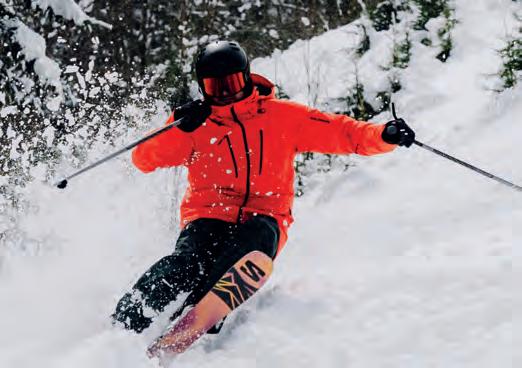
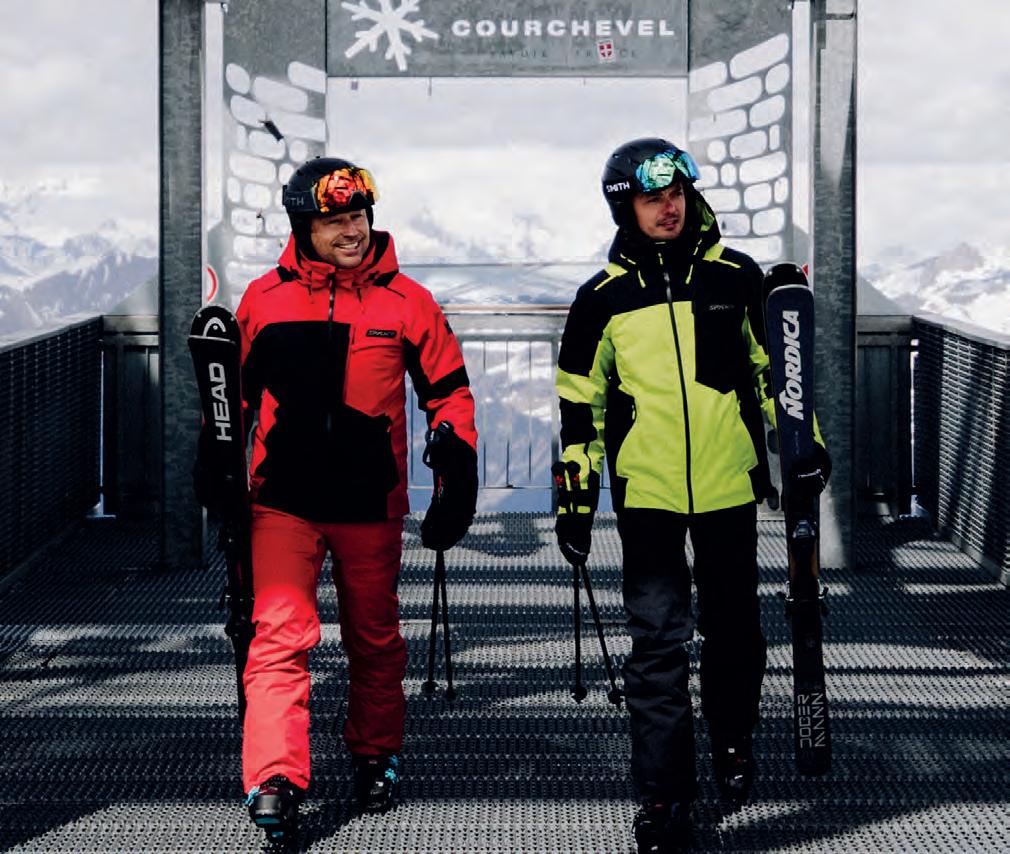
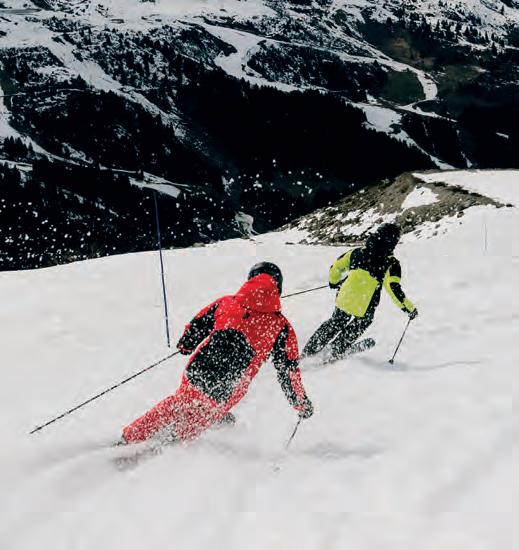

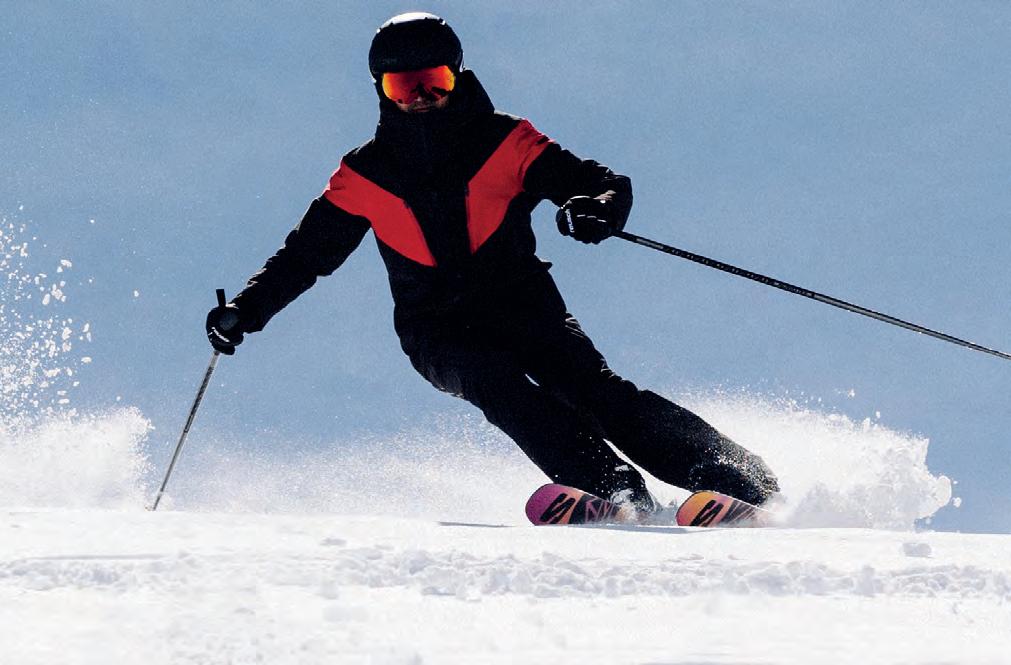

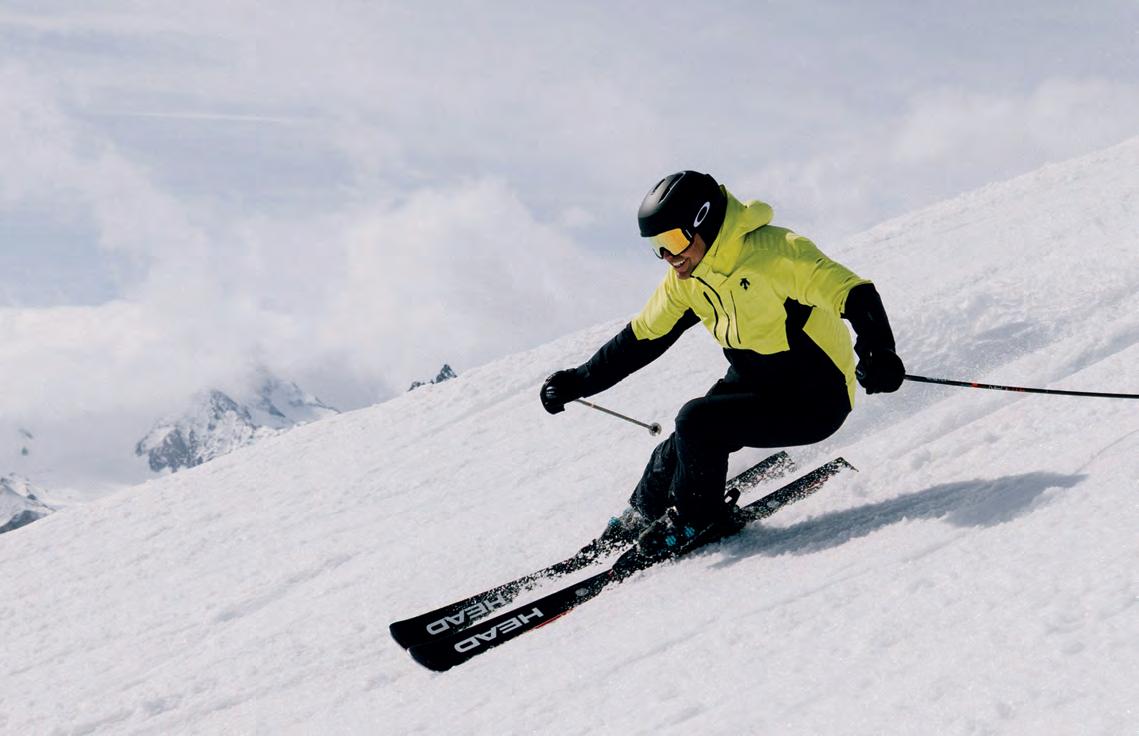





















Location: Les 3 Vallées,
Thanks to TG Ski for hosting the team at the luxurious Chalet Lightbowne,



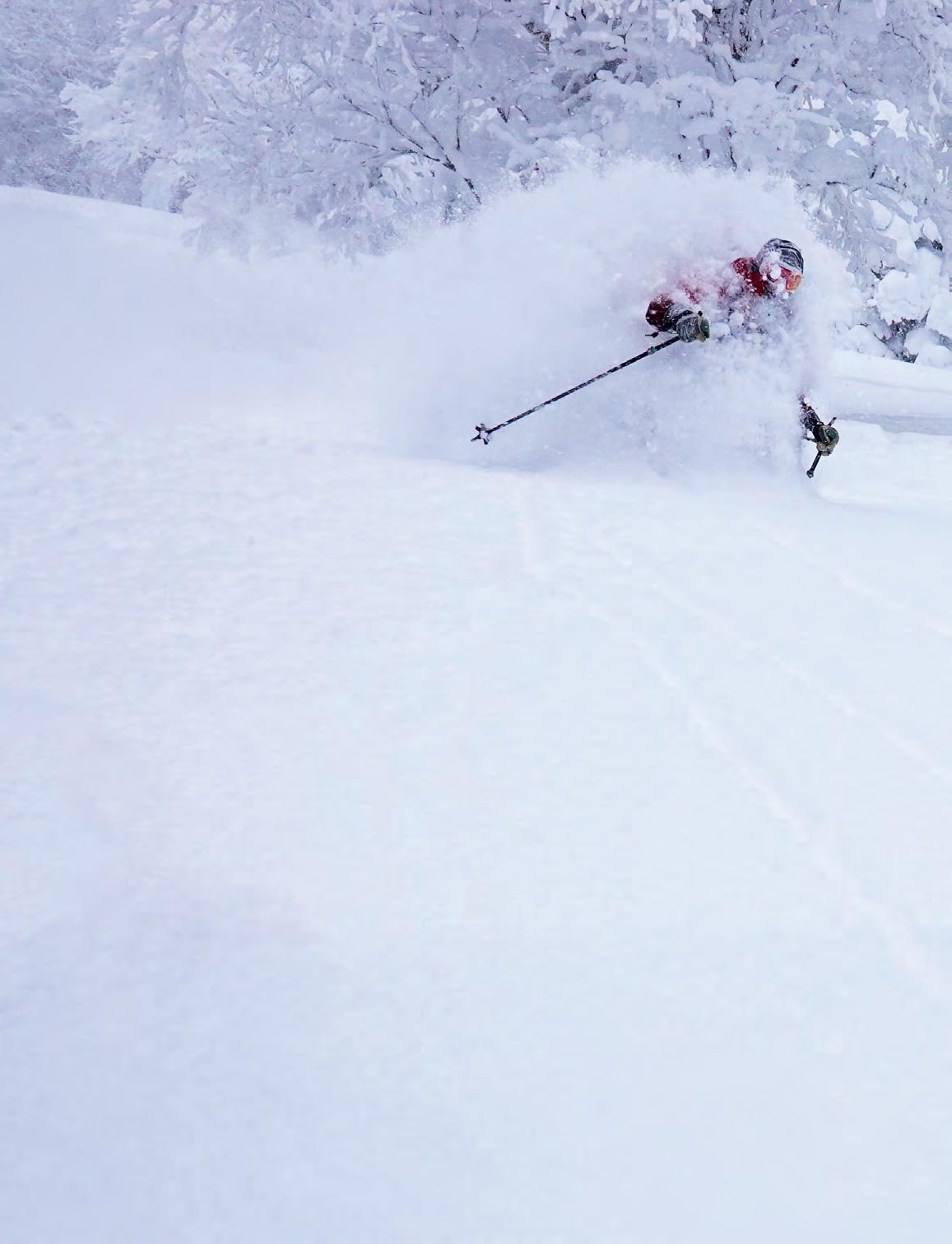




From steaming volcanic calderas to tree-lined powder runs and post-ski onsens, IFMGA Mountain Guide Luke Davies lifts the lid on Hokkaido’s quieter side – the Central Hokkaido Powder Belt.
Japan is well known in ski circles for being a Mecca for powder skiing, conjuring images of dry, waist-deep blower in ancient forests. While the main island Honshu has a host of popular ski areas (Hakuba, Myoko, Nozawa Onsen…) centred in the Japanese Alps, Hokkaido, the northernmost island, draws the most attention with its greater precipitation and, on average, consistently lower temperatures. Most skiers will have heard of the ski resort Niseko, the largest on Hokkaido, found in the southwest of the island. Together with the nearby Rusutsu and Kiroro, this region swallows up the vast majority of visiting skiers (and a lot of Australians). However, beyond the southwest, Hokkaido has a lot to offer the more adventurous skier who, with a bit of effort, will be rewarded with great snow and fewer crowds.
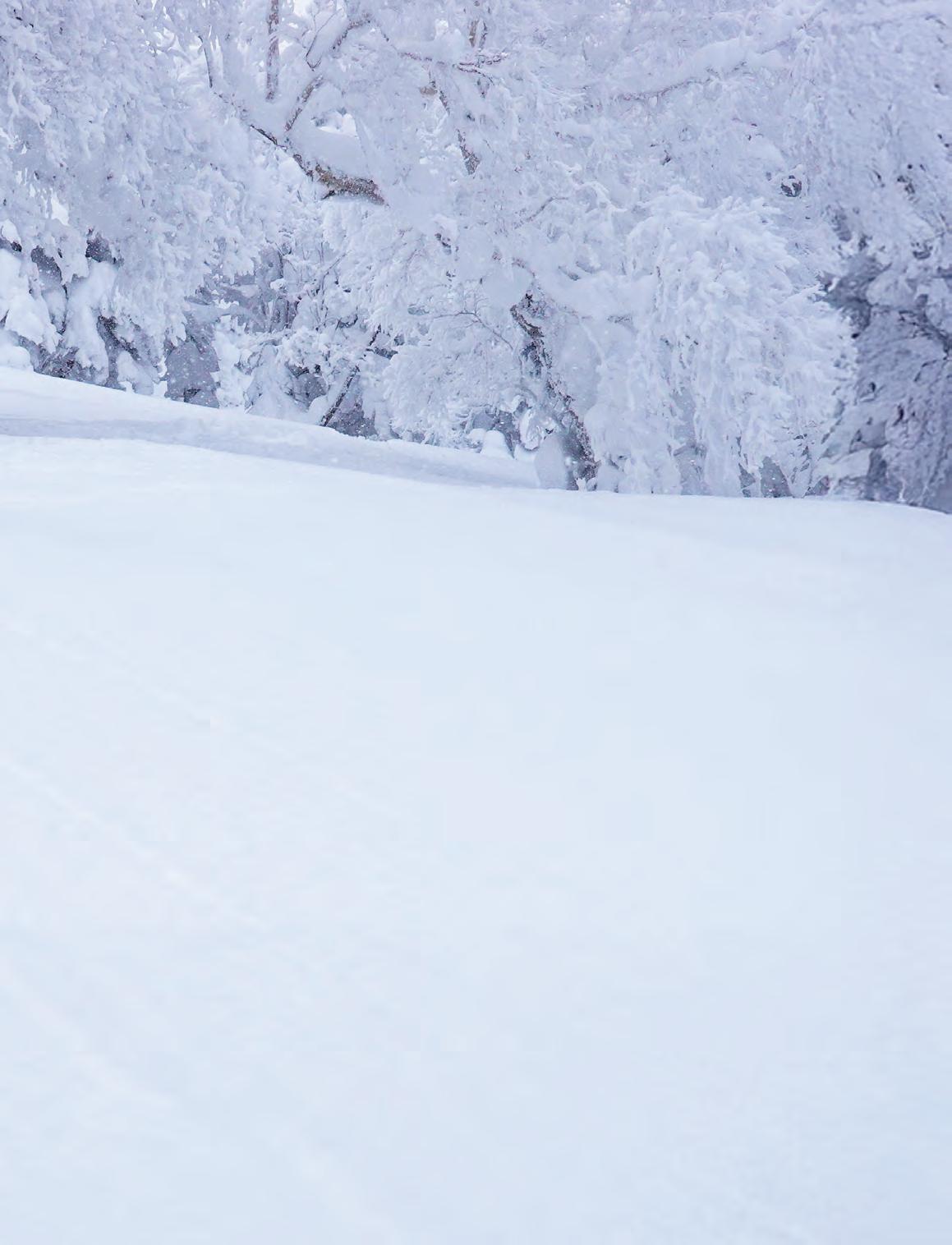
Last winter I spent 7 weeks working as a ski guide in the Central Hokkaido region, based in Furano, the larger ski town in the area. Several major ranges sit within two hours of town. There’s the forested Yūbari (home to the Furano ski hill), the Hidaka, which often skis well with southerly precipitation, and the Daisetsuzan, crowned by the volcanoes of Tokachidake and Asahidake, Hokkaido’s highest point.
Living and working as a guide most of the time in Chamonix, Japanese skiing di ers signi cantly from skiing in the Alps. The snow is consistently better, with lower temperatures and persistent precipitation, without the large warming spells that plague the Alps. Consequently, the average
number of clear days is much lower. Expect a lot of grey days and whiteouts. The snowpack in Japan is, on the whole, remarkably stable considering the quantity of snowfall, with most moisture being sucked out by the cold temperatures overnight, and wind seemingly having less of an effect than in other areas of the world. The terrain is often lower-angled than the Alps (though there are steep lines if you know where to look), with most skiing to be found at the treeline or below. In good conditions, a skier can enjoy deep hippy-pow without the need for crampons or ice axes.
A typical ski day in Hokkaido starts at 6am with an early rising sun that sets around 4pm, checking where the most snow fell the previous night from the warmth of the futon bed. Once a destination is decided, the team is picked up, skis loaded, and we get on the road. En route we stop at one of the 7-Elevens that all Hokkaido towns have. These shops are great for most things you need day to day in Japan: fresh food, as well as the onigiri (rice balls wrapped in seaweed) – the Japanese hill food of choice – along with curried bread, and an essential coffee stop for those struggling with the earlier starts. 7-Elevens are the Japanese equivalent of a French boulangerie, only with builtin pharmacies…
Food in hand, we continue our drive through the Hokkaido countryside, which is predominantly agricultural (the Central Hokkaido region is renowned for its dairy, onions and melon, as well as its colourful lavender fields in the summer). The terrain often reminds me of Speyside, albeit with more snow, with its rounded post-glacial mountain tops, wide river valleys and tree-lined hillsides. Rugged vehicles are needed here, with the roads having an almost constant layer of snow, and with several-metre-high snow piles on either side, building up through the season. With the often whiteout conditions, the roads are equipped with overhead, light-up arrows to point to where the road should be – often giving the feeling that you are in some sort of video game. As a consequence of the harsh weather, the buildings are often boxshaped – not the artistic pagodas that often come to mind when thinking of Japan – but they are much better under heavy snow!
“THE
CONSISTENT”
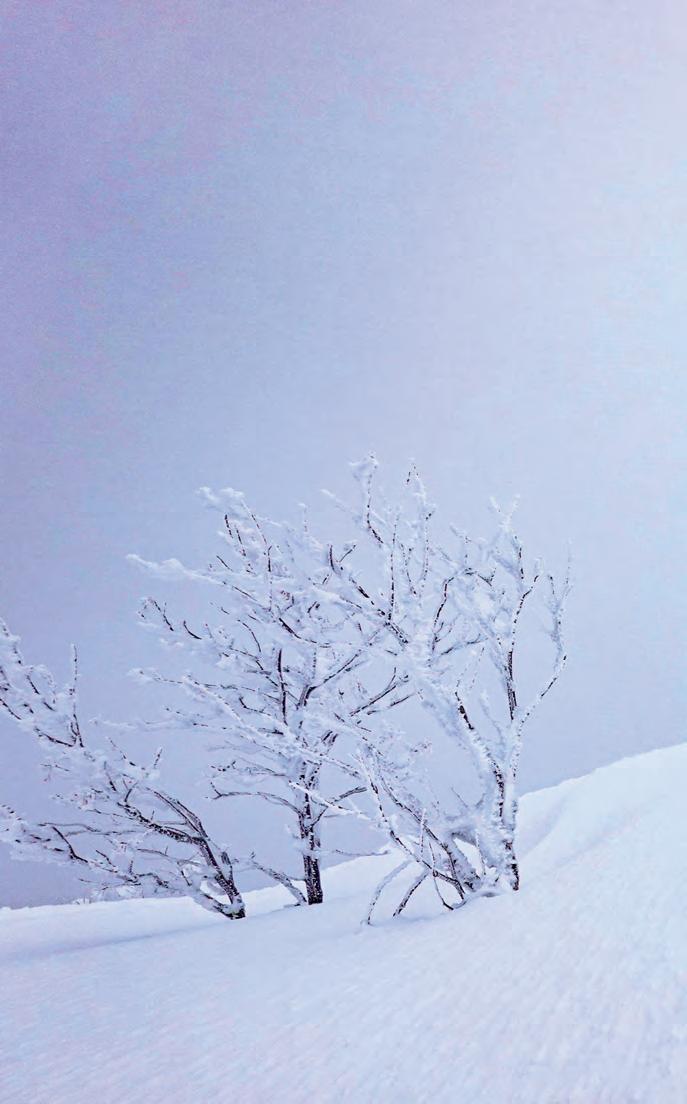
In this region, rather than starting from a ski resort, touring starts from a trailhead car park. One of the more popular car park starting points in the region is Hakuginso, in the Daisetsuzan National Park, with its adjoining onsen and lodging. The Hakuginso trailhead serves many popular ski touring peaks, such as the mellow Sandanyama (translated to “three-stage-mountain” as it’s cut by mini plateaus), the classic, active volcano Mae Tokachi and its higher summit Tokachidake (an often windhammered peak). The Daisetsuzan range is known as “the playground of the gods” in the local dialect of the ancient Ainu people, who are indigenous to Hokkaido. Being totally central to the island, the Daisetsuzan area has drier powder than anywhere else in the country, and some of the largest terrain.
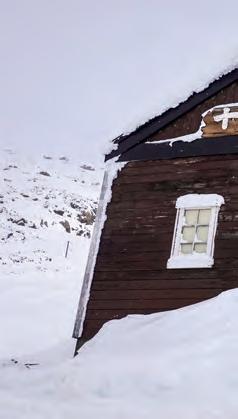
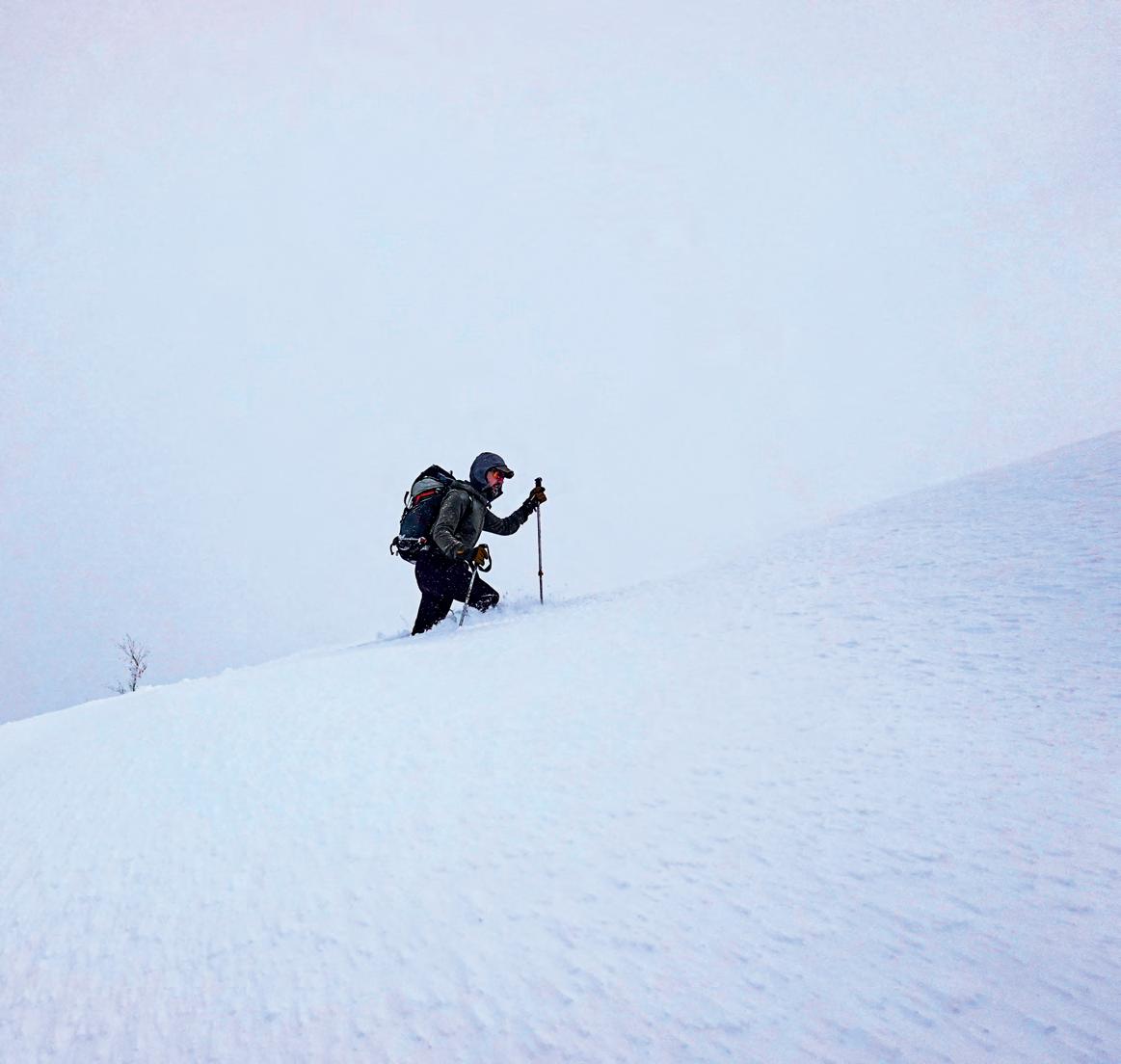
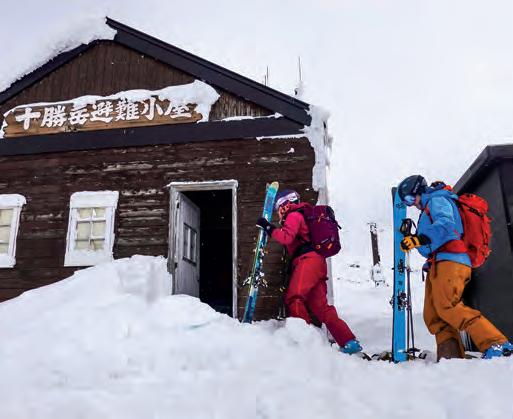
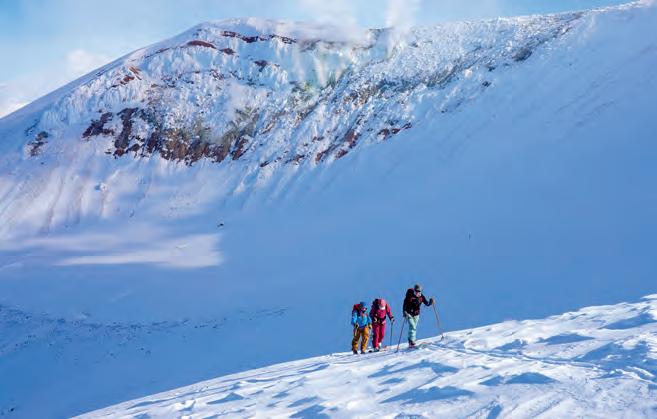




The transition from car to ski gear in Daisetsuzan can be brutally cold, making an uphill effort welcome. Touring wanders first through forest and then into the open expanse on the flank of the volcano. The volcano last erupted in the 1980s, and the scorched trees still line the hillside, providing a unique landscape to ski through. This eruption closed the Tokachi ski area, the remains of which can still be seen (which reminds me of Cairngorm). After 2-3 hours of casual uphill, the caldera can be reached (and certainly smelled). This makes an adequate place for lunch and a transition before enjoying a fun descent down the natural depression lines of the volcano. The lower parts of the hillside are the best areas to lap-ski, with the snow still unbuffeted by high winds – making a fitting afternoon activity.
The big appeal here, besides the fantastic skiing, variety of above-treeline views and novelty of visiting a volcanic caldera, is finishing ski days with a visit to the onsen found at the trailhead car park (or the totally natural Fukiage pools below, with unregulated heat for the brave). The onsen experience is something all skiers should try on a Japanese ski trip. These public thermal baths are found all over Japan and are a key part of the culture, with many Japanese not having baths of their own for many years, instead resorting to using a public onsen. For a western traveller, they can take some getting used to, as it’s required to be completely naked in the gender-separated areas. If you can steel yourself, an onsen is a fantastic post-ski experience: sitting in a warm outside pool with snow all around, resting tired legs. Tattoos are not meant to be allowed in the onsen as they were previously a sign of criminal ties, but with more and more foreigners visiting the area this seems to have relaxed – I once saw a Japanese man sitting fully naked in the changing area with a full back tattoo, legs splayed, blow-drying his genitals – I concluded he must have been Yakuza…
On days where the weather is worse and visibility is bad, the tree-lined Hidaka range, accessed from Tomamu resort or Sahoro, or the Furano and Kamui resort backcountry, offers playful laps in the trees with the assistance of the lifts. These areas, while not providing any big lines, reward the inventive skier with great terrain, not
“THE
Conditions – curated by a group of expat and local adventurers, HokkaidoWilds. org is a valuable resource containing ski touring itineraries, trip reports, GPX files, maps and safety advice.
Connectivity – coverage is good in most areas mentioned and a Japanese SIM is recommended.
Gear – sort your kit before you travel, as gear is pricier and harder to source in Japan. For basic repairs and servicing in Furano, head to Whiteroom, Summit and Rhythm.
Safety – Japan has no formal mountain rescue; callouts are usually handled by local guides or the fire and police services. Carrying extra kit such as a group shelter or improvised sled is sensible.
Transitions – be careful when switching between touring and ski modes: Japan’s famous powder can play havoc with skin glue, potentially ruining your day. Carry a couple of spare ski straps just in case.
too remote and the ability to get away from the crowds with a bit of skinning. Finding the correct spacing of trees seems to be the key to finding good skiing here…
The other notable ski area of the region is Asahidake – Hokkaido’s highest peak, found outside the city of Asahikawa – the second largest on the island. This area is a bit peculiar, as it’s a lift designed for summer hiking that skiers have taken over in winter. On paper, the single gondola model brings to mind the off-piste riding of the Aiguille du Midi in Chamonix or the Téléphérique in La Grave. The reality is that the terrain differs somewhat from those comparisons, with any steepening being short lived, interrupted by long flats, where getting back to one of the two cat track pistes is key. However, the area comes into its own on clear days, when it’s possible to make the 600m tour to the top of the peak (often involving a wind-scoured bootpack). This allows for the novelty of a ski descent above the active fumaroles of the volcano – a truly memorable descent – but expect crowds, as clear days aren’t regular!
While most skiers will typically come for the “main” Hokkaido season of Japanuary and February, springtime brings new opportunities on the island, with more clear days allowing access to bigger terrain. Areas such as Kurodake in the north (Asahidake’s steeper brother) or the island of Rishiri (a volcanic island in the north with notoriously fickle weather but fantastic terrain and scenery –for the adventurous!) can provide great skiing for committed skiers.
Days are finished with the post-onsen drive back to town (with falling asleep common among passengers), before dinner reservations are made. One thing that the country isn’t short of is fantastic dining venues, with options from classic sushi and ramen to wagyu and beyond. Furano is no outlier here, with many great options for all of the above.
With the daily rhythm of great powder skiing, varied terrain, culture, amazing food and relaxing onsens, it’s hard not to fall in love with skiing in Japan. For those looking for adventurous skiing of this nature, away from the mad crowds of Niseko, the Central Hokkaido Powder Belt should not be overlooked!
Luke Davies is an IFMGA Mountain and Ski Guide working between Chamonix and destinations worldwide - including ski trips to Japan. lukedaviesoutdoors.com
“FINDING

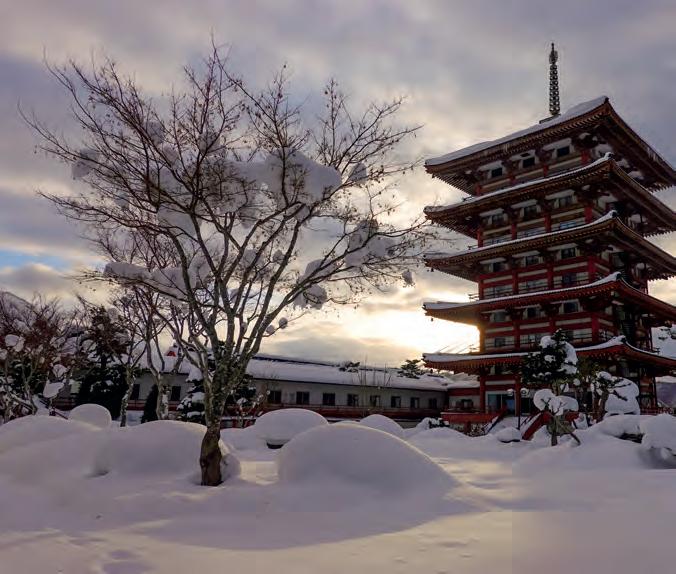
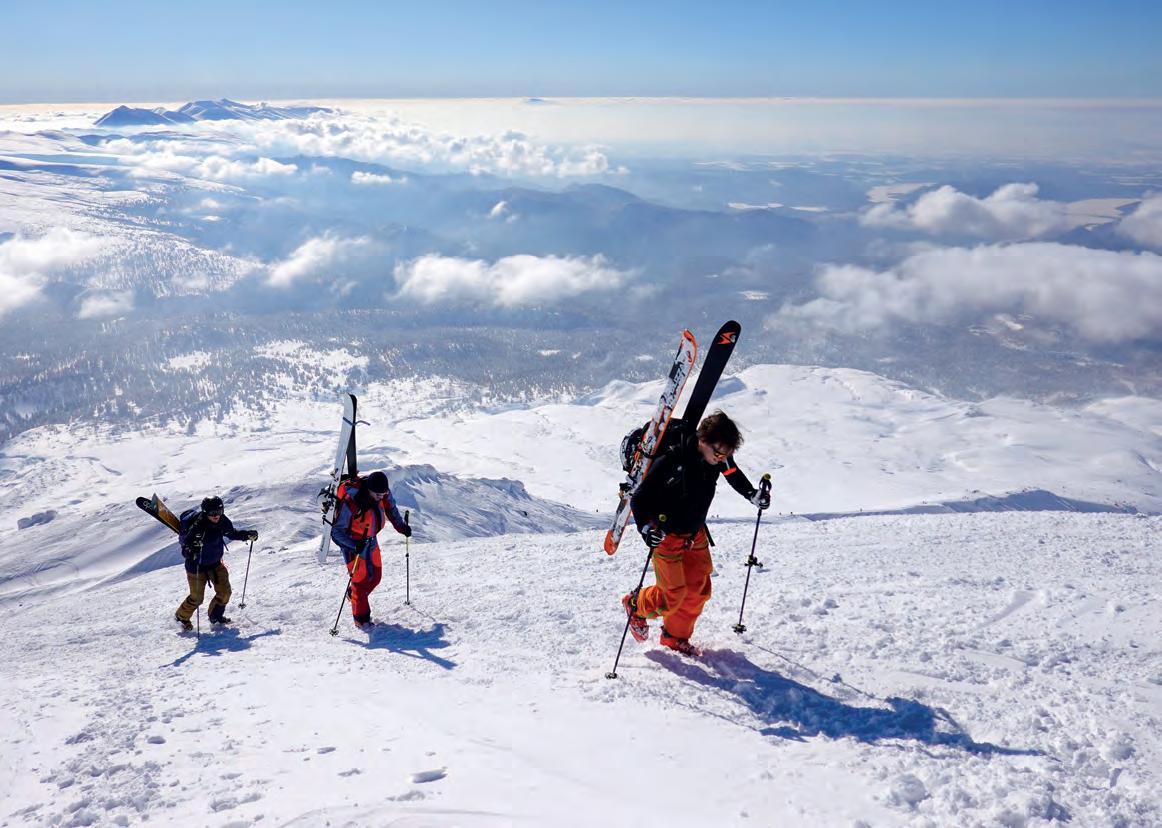
Uncharacteristically ‘traditional’ Japanese buildings for Hokkaido
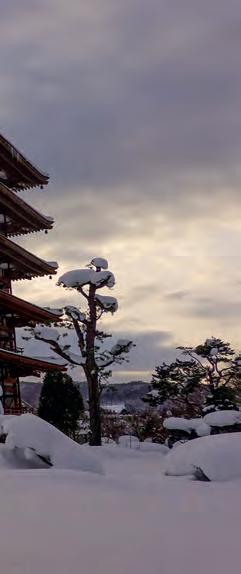

Bootpacking to the summit of Asahidake on a rare good weather day
Late afternoon glow on AsahidakeHokkaido’s highest peak


DPS Kaizen 112 £1,300
A purpose-built powder ski that makes deep days feel effortless. The freerideforward shape delivers intuitive handling and float, and a 15m radius keeps it pivoty in trees and steeps. DPS’s split poplar/red oak carbon-wrapped core balances lightweight energy so it slarves and smears but still engages an edge when the line opens up.
Salomon QST 100
£570
The QST 100 has freeride pedigree baked in. A full poplar core keeps it lively, while basalt and breglass reinforcement add the sti ness to hold an edge and charge with con dence. At 100mm underfoot with generous rocker and taper, it floats and slashes through softer snow and trees, yet still feels planted when you open it up.
Atomic Bent 110
£610

















£580
The Rallybird Soul 102 from Rossignol blends float, grip and responsiveness in a surprisingly light package. A poplar wood core paired with Titanal Beam reinforcement keeps things damp and stable, while Air Tip tech cuts swing weight so the tips feel lively. Ideal for female freeriders looking for a ski that’s big on terrain range and con dence.
Atomic’s surf-inspired freeride twin is wide enough to float in deep snow yet nimble enough to spin, slash and pop across the hill. Tip and tail rocker bring smear and pivot potential, with camber underfoot for edge hold when needed. Light, playful and backed by Chris Benchetler’s trademark flair, it’s a soft-snow ski with creative big-line energy.
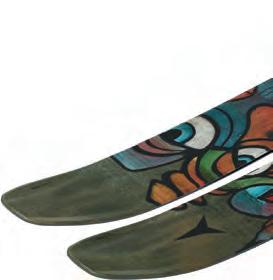




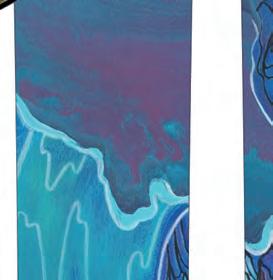
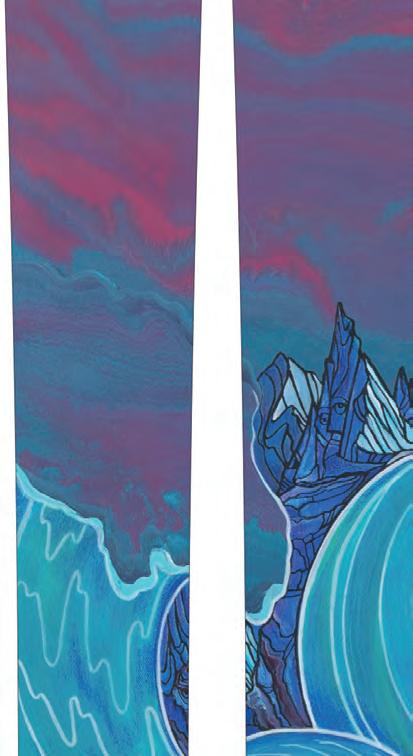
£740
For freeriders who want the power of an alpine boot with the ability to hike for their lines. A heat-mouldable 100mm last and BOA lower closure deliver a locked-in t, while the cu provides true 130 flex grunt on the descent. Flip the TwinLock walk mode to earn your turns, then lock it back down and charge with total con dence.

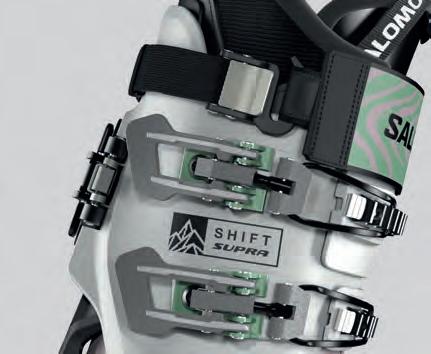











£670
Built for powerful female skiers who still want to earn their turns. With a sti 115 flex, slim 98mm last and BOA lower closure, it locks you in for precise control when charging. A customisable Memory Fit shell and Mimic liner combine for blister-free comfort and a civilised ride.








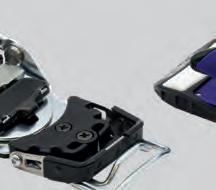

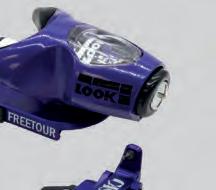

For freeriders who want the con dence of an alpine binding on the descent with the e ciency of pin-tech on the climb. Swapping between touring and alpine mode takes seconds, the risers give three climbing positions, and the full Pivot heel brings multidirectional release and bomber retention. Compatible with Alpine, GripWalk and Touring soles.

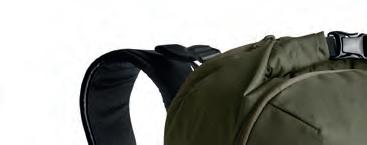

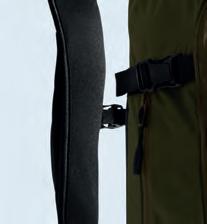
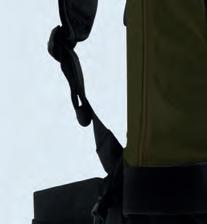
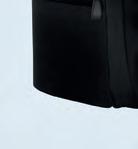
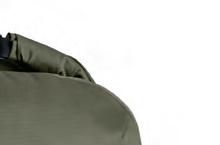
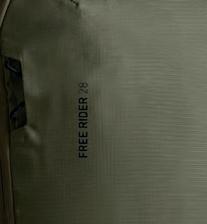

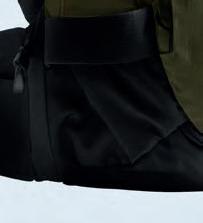



£370
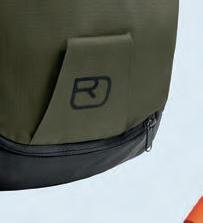








Designed for big-mountain skiers looking for a pack that moves like a second skin, the Free Rider 28 stays close through steep chutes and tricky skin tracks. With front and rear panel access, plenty of attachment points and a dedicated shovel and probe compartment, it's a well thought-out



backcountry partner.








Lightweight, compact and e cient, the new Pro Guide is built for backcountry enthusiasts who need serious performance in a small pack size. At just 630g it won’t weigh you down, and comes with an anodised aluminium blade and 90° clearing mode that move plenty of snow and bite cleanly into hardpack.





The ultimate combo for backcounty adventurers who need gear that delivers when adrenaline runs high. The DIRACT transceiver features Smart Antenna Technology, a fullgraphic display and audio/visual support for high-stress moments. It teams perfectly with the lightweight ALU 240 probe and Badger shovel to get you working fast when every second counts.

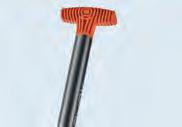
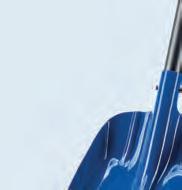















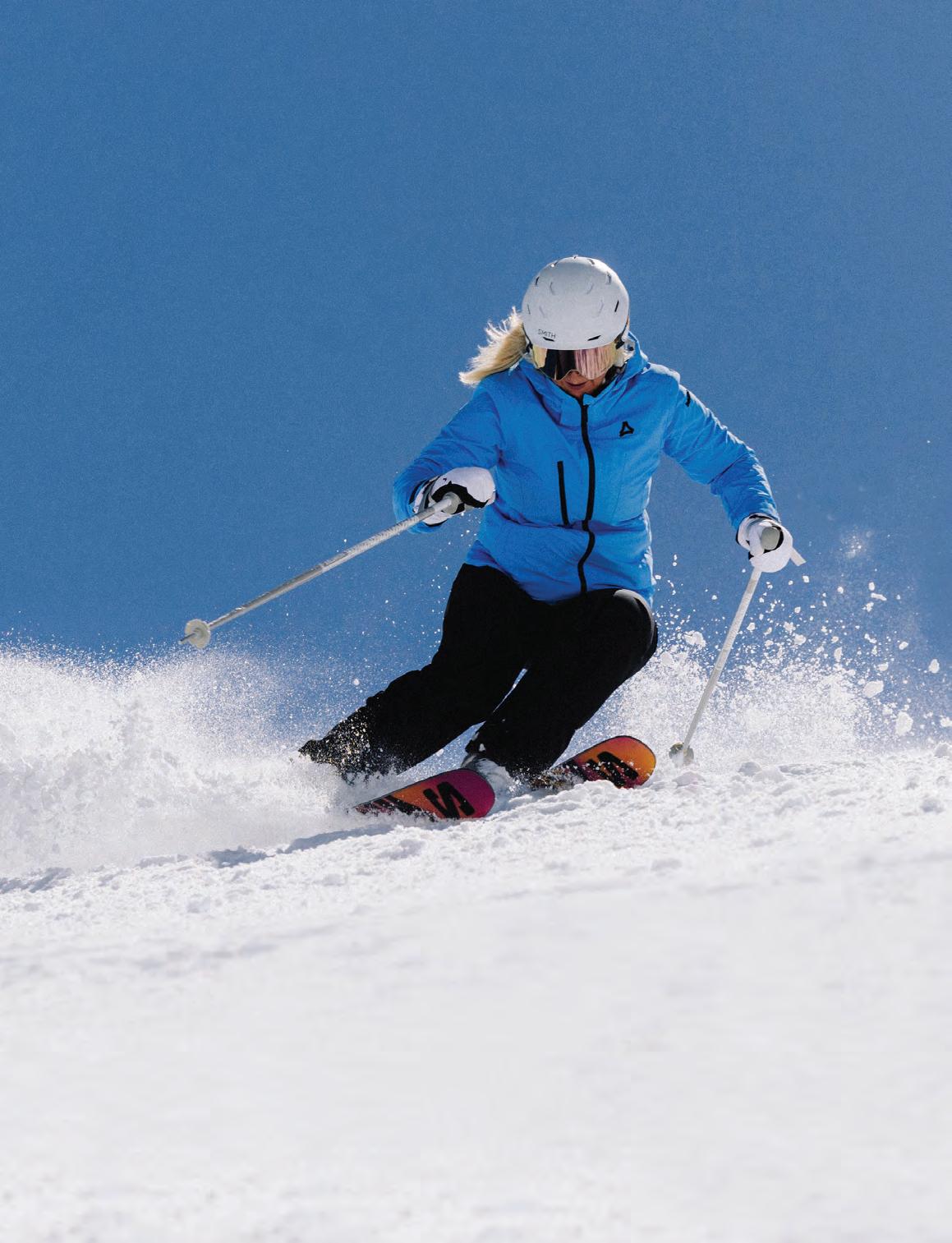





Valle de Aosta,
Italy
If you’re serious about maximising vertical on a short ski break, there’s only one way to do it: by helicopter.
Heli-Guides operates across several prime locations in and around Italy’s Valle d’Aosta, all within 90 minutes of Turin Airport – ideal for squeezing the most out of a long weekend.
The standout base is Gressoney, which sits beneath the mighty Monte Rosa massif. From here, heli-skiing opens the door to technical glacial descents, remote alpine bowls, and even a cross-border powder safari to Zermatt and back – all in a single day.
If the weather doesn’t play ball and the heli is grounded, there’s no shortage of backup. The Monte Rosa freeride area is one of the best in Europe, with legendary o -piste runs like Punta Indren and Punta Bettolina easily accessible with a guide.
Heli-Guides o ers fully hosted packages, covering everything from your lift passes to ski or board hire, so all you need to worry about is getting your legs ready to take on the epic runs. With up to 9,000 metres of descent over three days, it’s worth doing your squats in advance.

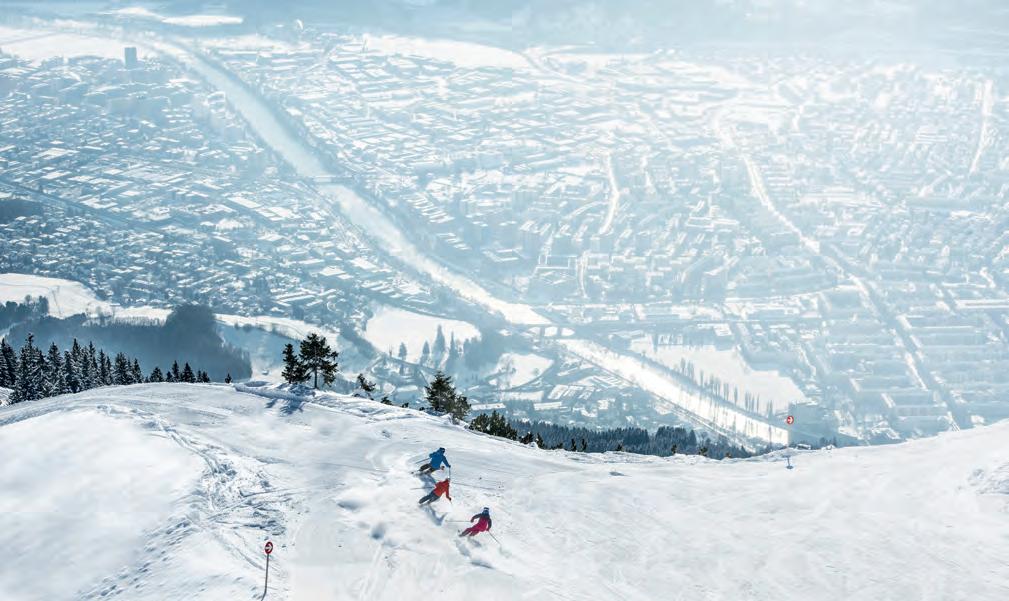
Innsbruck, Austria
A city break might seem like an unusual choice for a ski-focused weekend – but Innsbruck is no ordinary city. Surrounded by snowy mountains, its airport approach alone takes you over ski resorts, Olympic venues, and the heart of alpine culture.
This is a city with winter sports in its DNA – and the mountains to prove it. Just 20 minutes from the centre, the Stubai Glacier offers guaranteed snow and one of the longest ski seasons in Europe, running from 10 October 2025 to 17 May 2026. Whether you’re chasing an early-season fix or sneaking in some late-spring turns, it’s the perfect high-altitude escape.
Combine that with easy access to multiple other ski areas (thanks to the Ski plus City Pass), and you’ve got a rare mix: world-class skiing with the convenience, culture and après of a vibrant alpine capital.
Innsbruck offers a wide range of accommodation, from boutique hotels to modern alpine lodges, plus some of the best equipment hire in the Alps – all served by direct flights from the UK.
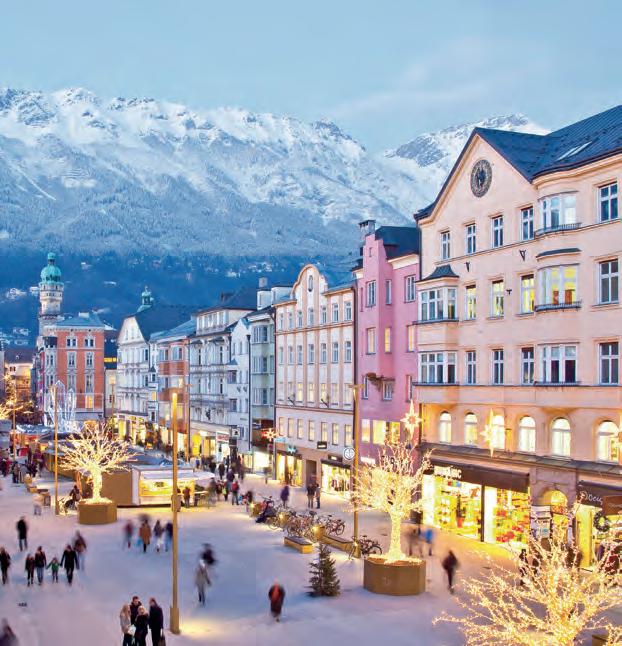
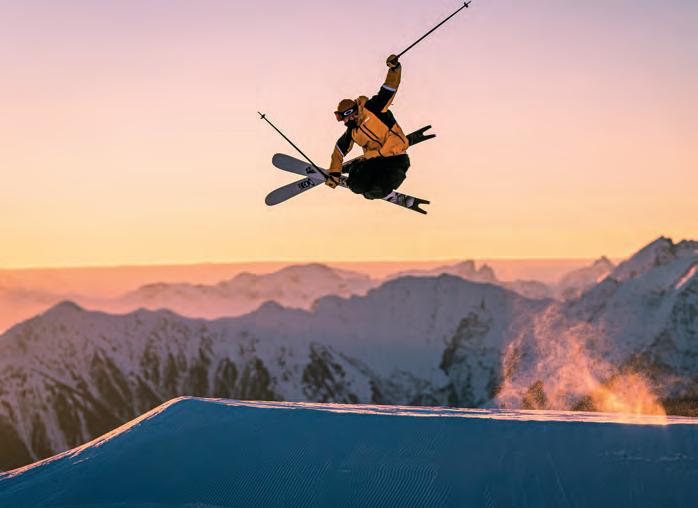
Home to the largest permanent halfpipe on the planet – 6.9 m high, 200 m long, and 22 m wide – Laax is Europe’s freestyle capital, a resort that breathes park and pipe culture.
With four snow parks, a mini-pipe and the world-class Freestyle Academy (complete with airbags, trampoline training and a skate bowl), it’s a training ground for everyone from newbies to pro riders.
With slick logistics, great rental options and a laid-back “California-meets-the-Alps” energy, Laax is one of the easiest and most progressive resorts in the Alps to drop into for a weekend of riding, après and modern mountain culture.
Andermatt, Switzerland
Andermatt is a freeride mecca and one of the Alps’ premier powder destinations – a playground for anyone chasing steep lines and deep snow. Less than two hours by train from Zurich, this traditional alpine village sits at the crossroads of four legendary Swiss passes –Furka, Gotthard, Oberalp, and Göschenen – combining authentic Swiss charm with some of the highest snowfall totals in the country.
At the heart of the action is the Gemsstock, a legendary freeride area accessible via cable car from Andermatt.
Topping out at 2,961 meters, it o ers some of the best o -piste skiing in the Alps.
With new lifts and terrain added regularly, Andermatt’s ski area is rapidly expanding. Plus, thanks to the Swiss rail network, you can properly go exploring for fresh tracks then simply hop on a train back to the village.
For an injection of luxury, stay at the Chedi – a world-class, ve-star hotel boasting 200 replaces, sleek design and top-tier amenities. It’s the perfect base for freeriders seeking epic skiing combined with proper pampering.

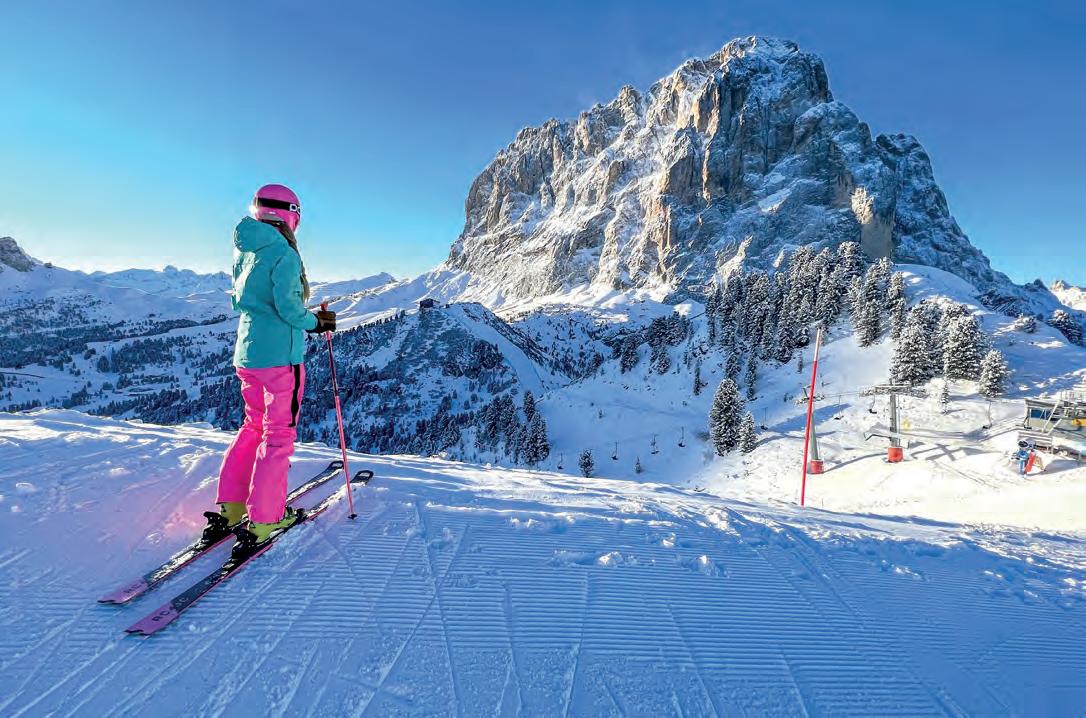
With the Winter Olympics heading to Milan and Cortina this season, a short break in the stunning Italian Dolomites feels perfectly timed. The region’s soaring limestone peaks offer a cinematic backdrop to days spent cruising groomers, indulging in mountain cuisine and soaking up that unmistakable Italian flair.
The Sellaronda circuit is the perfect way to stay focused on your ski weekend – a 26km loop of red and blue runs that links several valleys across the Dolomiti Superski
area. You can race the full loop in under six hours, or slow it down and spread the adventure over a couple of days, overnighting in traditional villages or cosy mountain rifugi. There’s scope to extend into off-piste zones or keep it mellow and piste-focused – making this a winner for both mixed-ability groups and ex-racers chasing corduroy glory. And with Innsbruck Airport just under two hours away, this Italian ski safari is more accessible than you might think.

Andy Townsend is an IFMGA Mountain and Ski Guide who splits his winters between the Alps and Norway infinitymountainguides.com

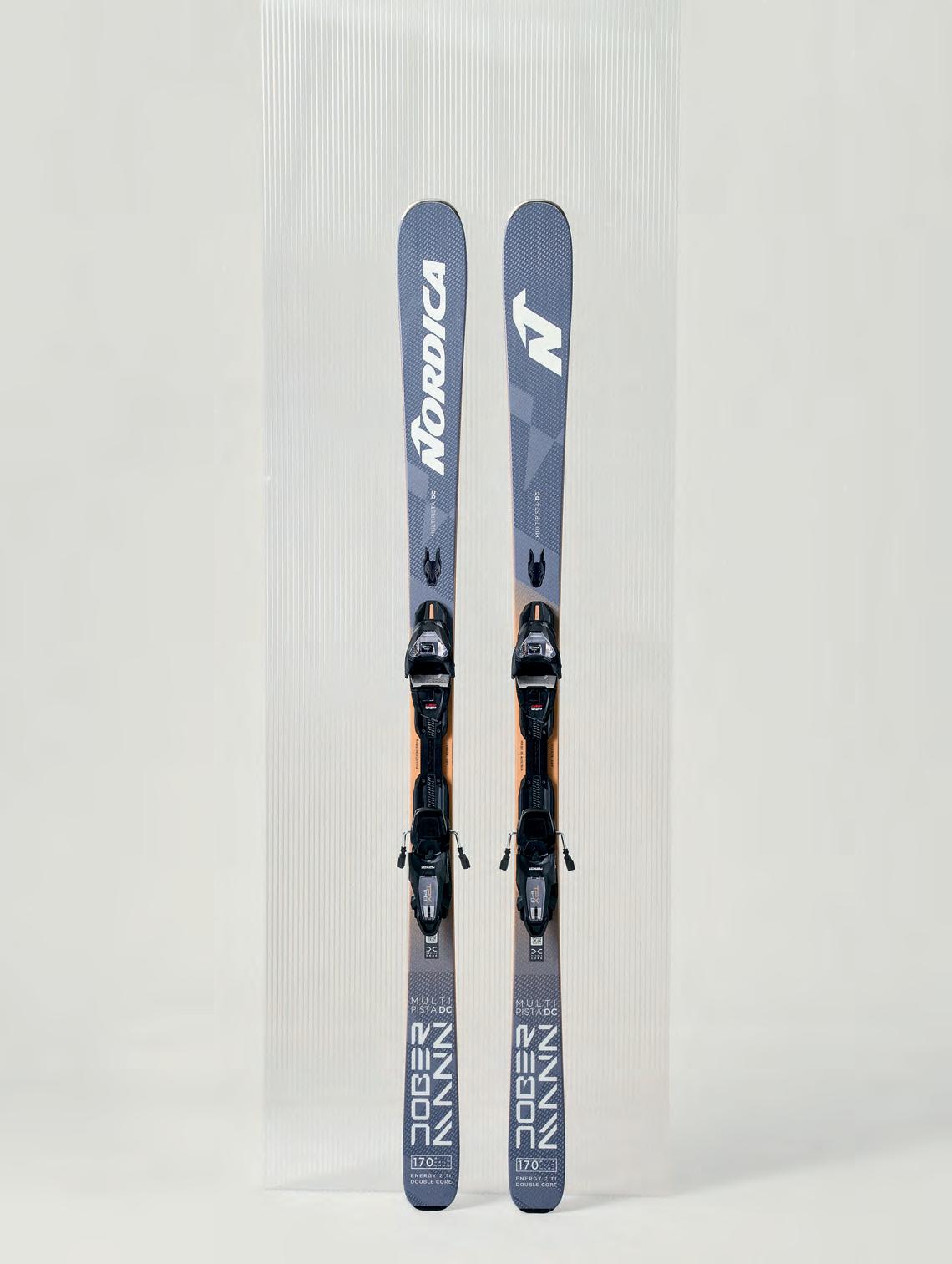
Nordica Dobermann
Multipista DC + TPX 13 FDT
£980 including bindings
Nordica’s pedigree piste charger is built to carve with race-bred bite. At 70mm underfoot with a dual rocker pro le and energy-returning Double Core, it's precise and grippy yet smooth enough for groomer cruising. Lively edge-to-edge and rocksolid at speed, it’s perfect for skiers looking for toptier performance in a more accessible daily driver.


Blizzard Black Pearl 88 £615
One of the most iconic women’s skis ever built, the Black Pearl 88 balances power and accessibility. The versatile 88mm waist floats in soft snow and grips on rm pistes, while TrueBlend tech blends strength underfoot with softer tips and tails for a stable yet forgiving feel. Carve the corduroy or explore o -piste, this proven all-rounder has serious pedigree.



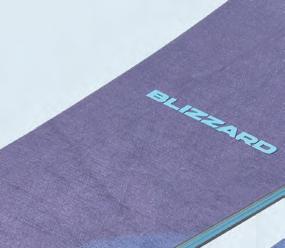
DPS Pistewerks 79 + X-Step Plate 412
£1,800 including bindings
This is piste performance distilled the DPS way: smooth, responsive, and crafted with carbon precision. The 79mm platform underfoot is narrow enough for razor racey grip, yet the carbon/wood construction keeps it light, damp, and lightning-quick edge to edge. Think flowing carves and a primo ride that feels as re ned as it looks.

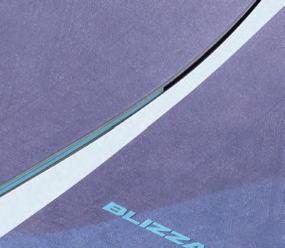




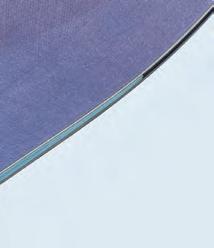


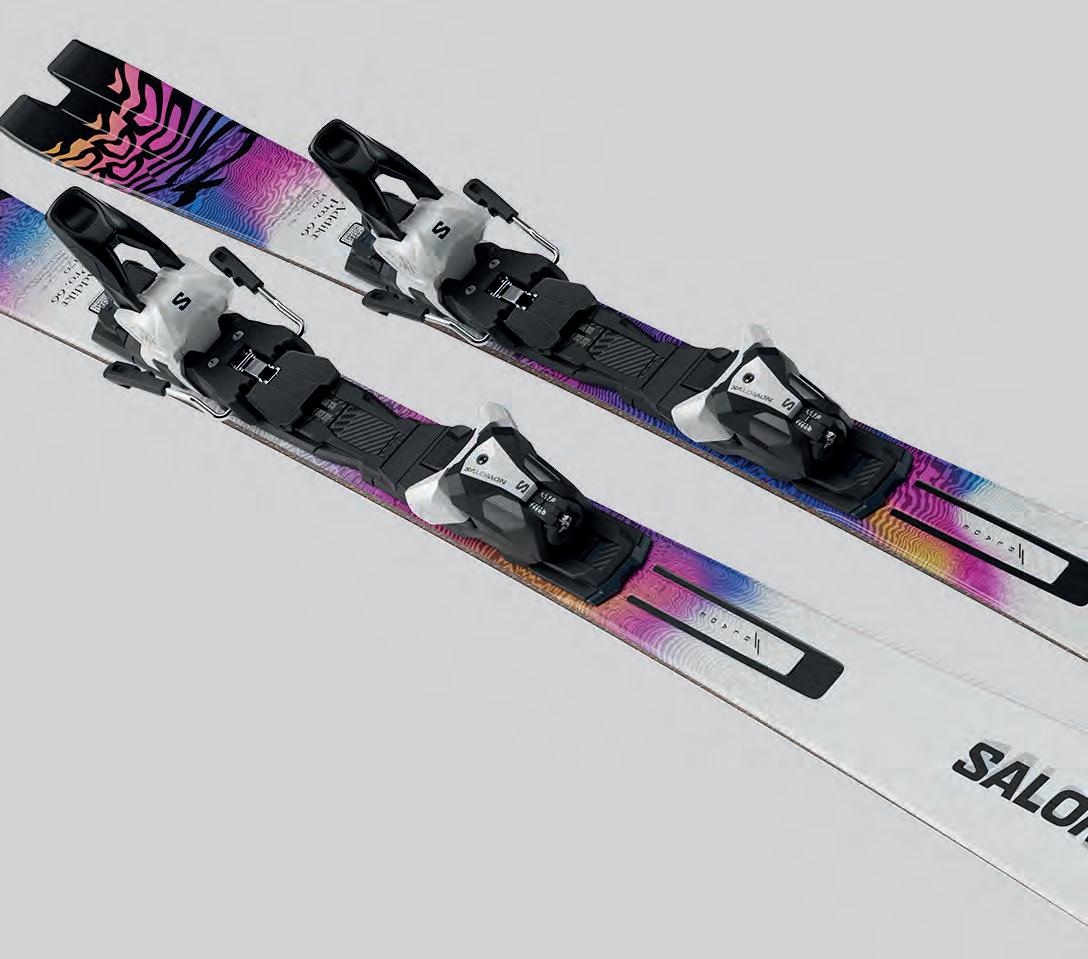
Salomon Addikt Pro 66 + M12
£790 including bindings
The Addikt Pro 66 is pure adrenaline on edge - a 66mm waist, short 13m radius, and Salomon’s Blade technology make this a high-octane piste missile. It grips like an axe on rm snow, loves to be driven hard and res you from carve to carve with zero regret. A grin-inducing, big-time resort ripper.


Atomic Maverick 88 CTi
£600
This blurs the line between piste charger and all-mountain explorer. It's wider than a pure carver, providing stability in chop and variable snow, while the titanium backbone and Flow Pro le rocker/ camber keep it composed on groomers. Smooth and versatile, it likes to lay down arcs in the morning before venturing into the soft stu in the afternoon.



£740 including bindings
The e-Super Joy blends piste precision with all-mountain versatility, giving intermediate-to-advanced females the confidence to take it all on. The 75mm platform is quick edge-to-edge, while EMC tech and graphene construction ensure a damp, light and smooth ride. The ACL-saving Protector binding brings added safety to every turn.

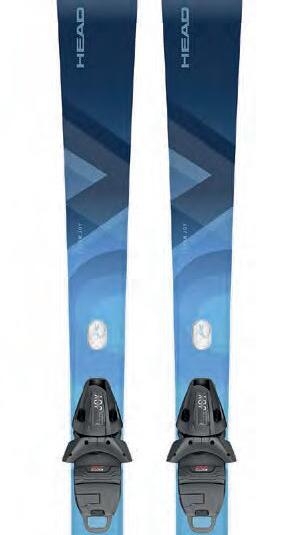



Konnect
£650 including bindings
Fun, forgiving, and accessible, the Arcade W 84 has con dencebuilding in its DNA. The 84mm waist strikes a balance between carving bite on groomers and stability in mixed snow, while the full wood core makes it easy to turn. Ideal for female skiers progressing their all-mountain game.







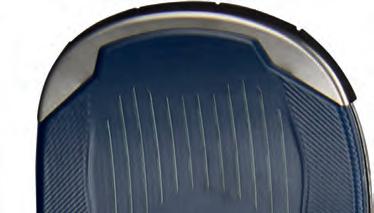
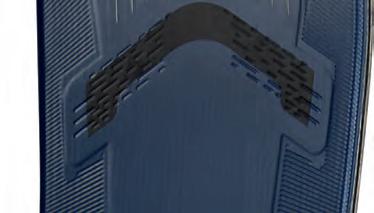

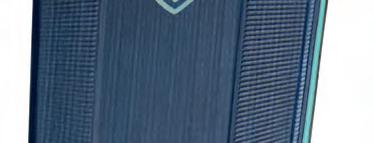


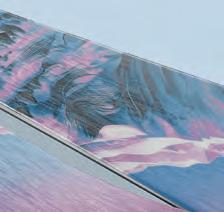
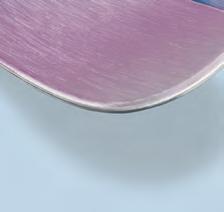

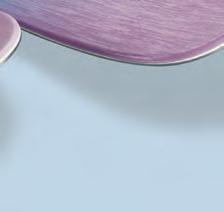

At 92mm underfoot, the Santa Ana is wider and more freeride-minded than many in this category, yet still feels composed ripping the resort thanks to Nordica’s terrain-speci c metal laminate. Stable at speed, smooth in chop and grippy on rm snow, it’s built for strong women looking to take on the whole mountain on their terms.


Candide Thovex has spent decades blowing minds on skis. Now he’s building them too. Sophie Nicholson digs into the French mountain maestro’s no-nonsense ski range that prioritises stoke over stats.
Candide Thovex isn’t just a skier – he’s a living legend. A balaclava-clad enigma, widely regarded as one of the greatest of all time.
Now, after years of showing the world what’s possible on a pair of planks, Candide is pouring that same energy into his own brand: Candide Skis. For La Clusaz’s most famous son, skiing has always been about freedom, creativity and spontaneity – so it makes sense that his skis would be built the same way.
After parting ways with Faction in 2022, Candide set out to build something that would reflect his personal approach to skiing: a brand unconstrained by convention, rooted in creative freedom.
Tony McWilliam, founder of Faction and the creative mind behind Candide’s branding, recalls: “Having designed skis with Candide for over a decade, this range came together incredibly quickly. Surprisingly we changed next to nothing from the rst prototypes to production.”
“FLOATY,
Candide Skis may be new to the market, but they’re already making a signi cant impression. The lineup includes ve models – the Area 91, Resort 101, BC 111, AK 106 and AK 121 – each crafted with purposeful simplicity. The names point to their intended terrain, while the numbers reflect waist width. As you move up through the range, the skis get wider, more rockered and tapered.
At rst glance, the designs look simple. But as you’d expect from a detail-obsessed master like Candide, they’re anything but. Every element has been meticulously considered to enhance the skier’s experience while retaining maximum versatility.
All five models share a twin-tip construction, but each has its own profile and rocker tailored to terrain and conditions. The flagship BC 111 is already the standout: at 111mm underfoot it’s wider than most Euro-skiers are used to, yet that’s why it shines. From blower pow to tracked-out chop, it’s a true allmountain freestyle weapon - floaty, playful, stable at speed and outrageously fun.
Every ski runs a lightweight poplar/paulownia wood core wrapped in carbon and fibreglass, giving a ride that’s light and reactive but with enough backbone to drive through turns. Dual mounting points let you choose between Candide’s sweet spot


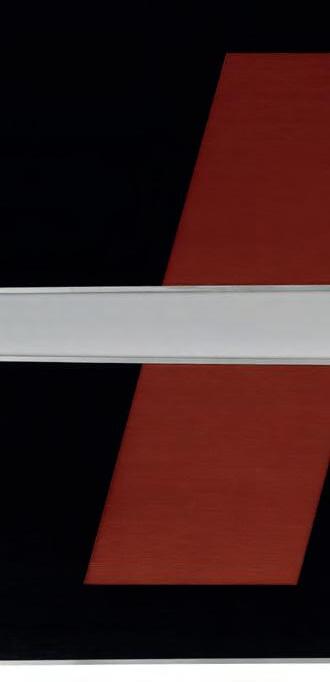
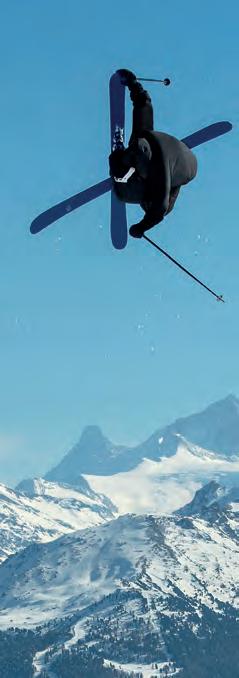










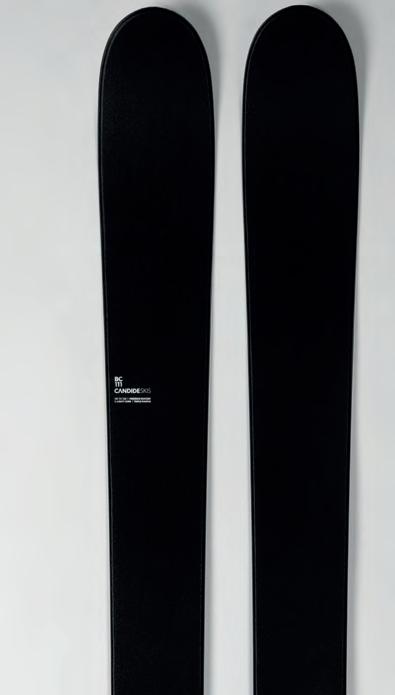











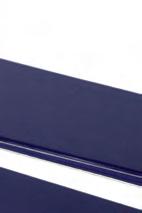


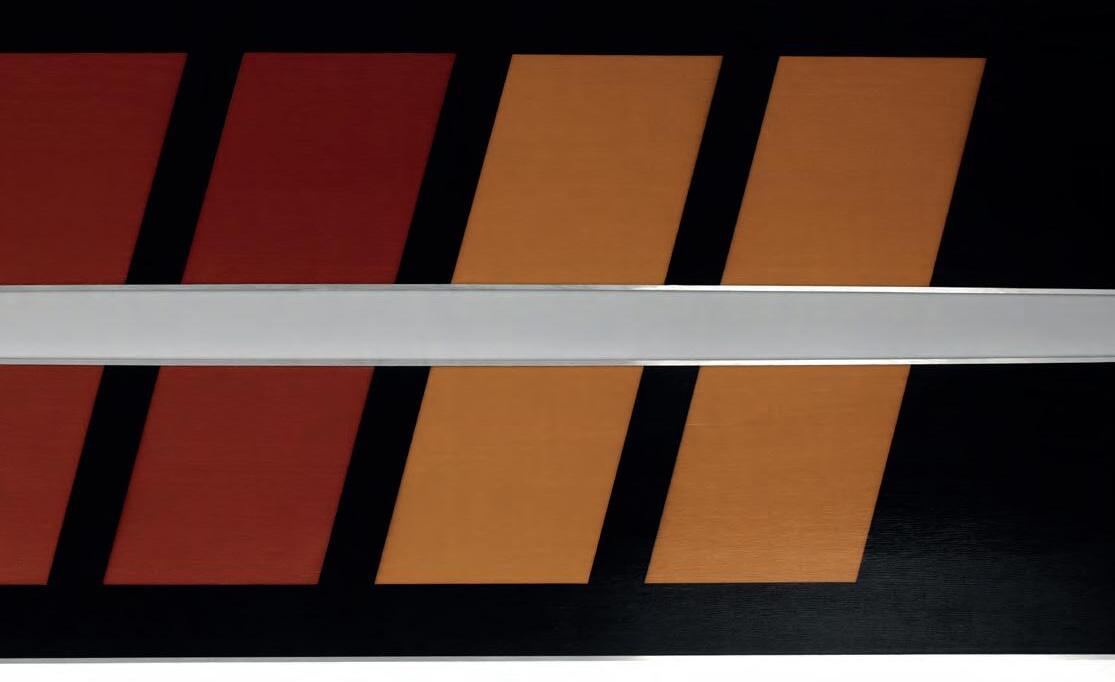
or a more traditional stance, while triple-radius sidecut delivers quick edge-to-edge response with high-speed stability. Tapered sidewalls shift into cap construction at tip and tail for faster release and added float.




It’s not just the man or the designs that makes Candide Skis stand out - it’s the materials. Everything here is top-tier and built to last. From ultra-fast P-Tex 4000 bases to textured topsheets built to resist chips and scratches, these screamers are made to go fast and take a proper hammering all over the mountain.
“Candide’s always been about pushing limits - and that includes durability,” Tony explains. “We wanted skis that could take a beating and still perform at the highest level, season after season. The topsheets have also been designed to be timeless, not driven by trends.”
The obsession with longevity feeds directly into the brand’s sustainability ethos. With FSC-certi ed wood cores and bio-based epoxy resin, they’re made using environmentally conscious materials without compromising performance. No early retirements. Just more lines of a lifetime.
Candide Skis isn’t just another ski brand. It’s a trademark rebellion - a personal journey fuelled by instinct and re.
As Tony says, “These skis run on pure energy. You don’t need to ski like Candide to get the most out of them - whatever your ability or style, they will meet you where you are, respond and unlock freedom and fun - on every run.”
Whether you’re all-mountain charging, frontside flipping, or booting up for a cheeky lap in the backcountry, these skis have been built to help you ride on your terms. Just like Candide….
Candide Skis are available at selected Ellis Brigham stores nationwide
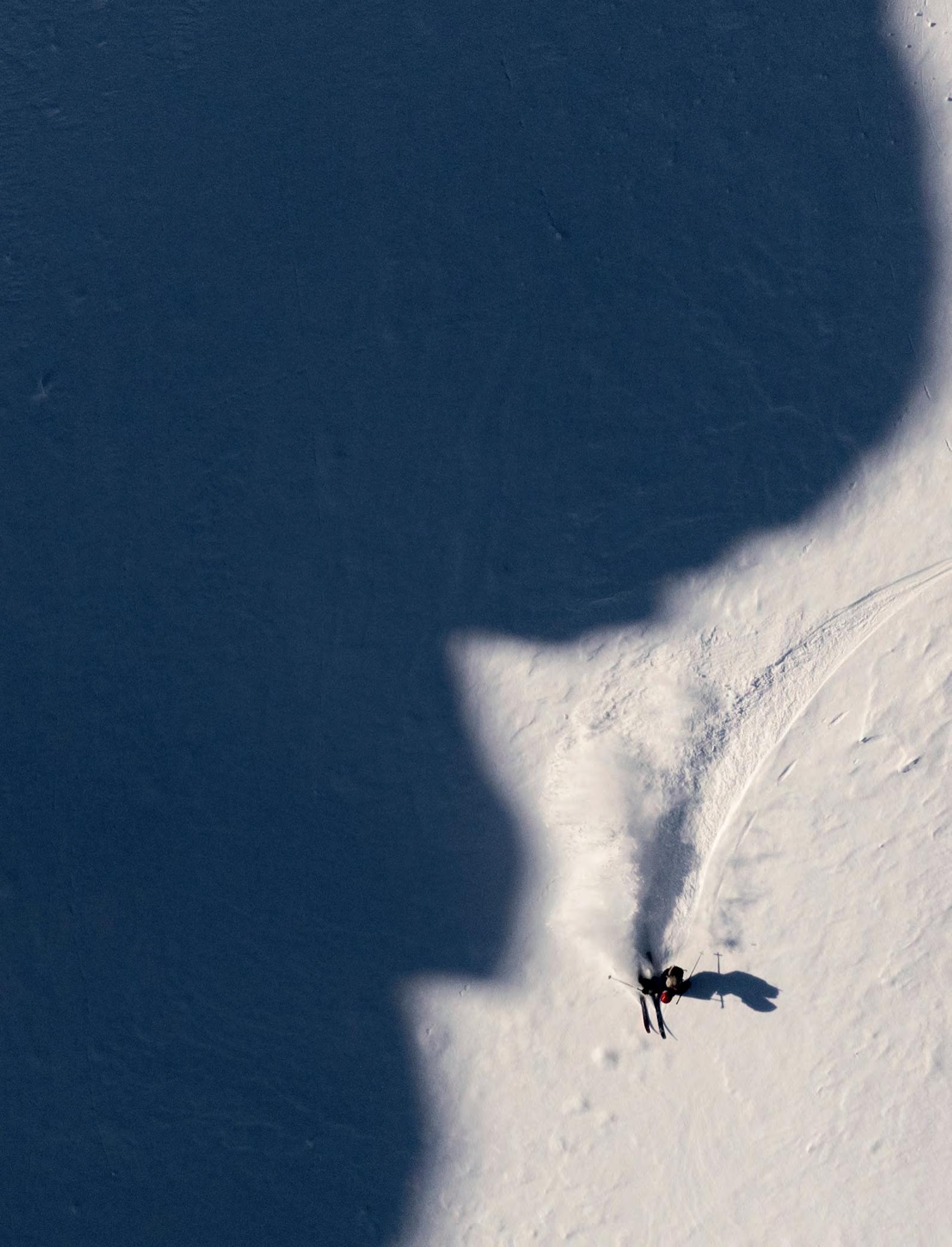
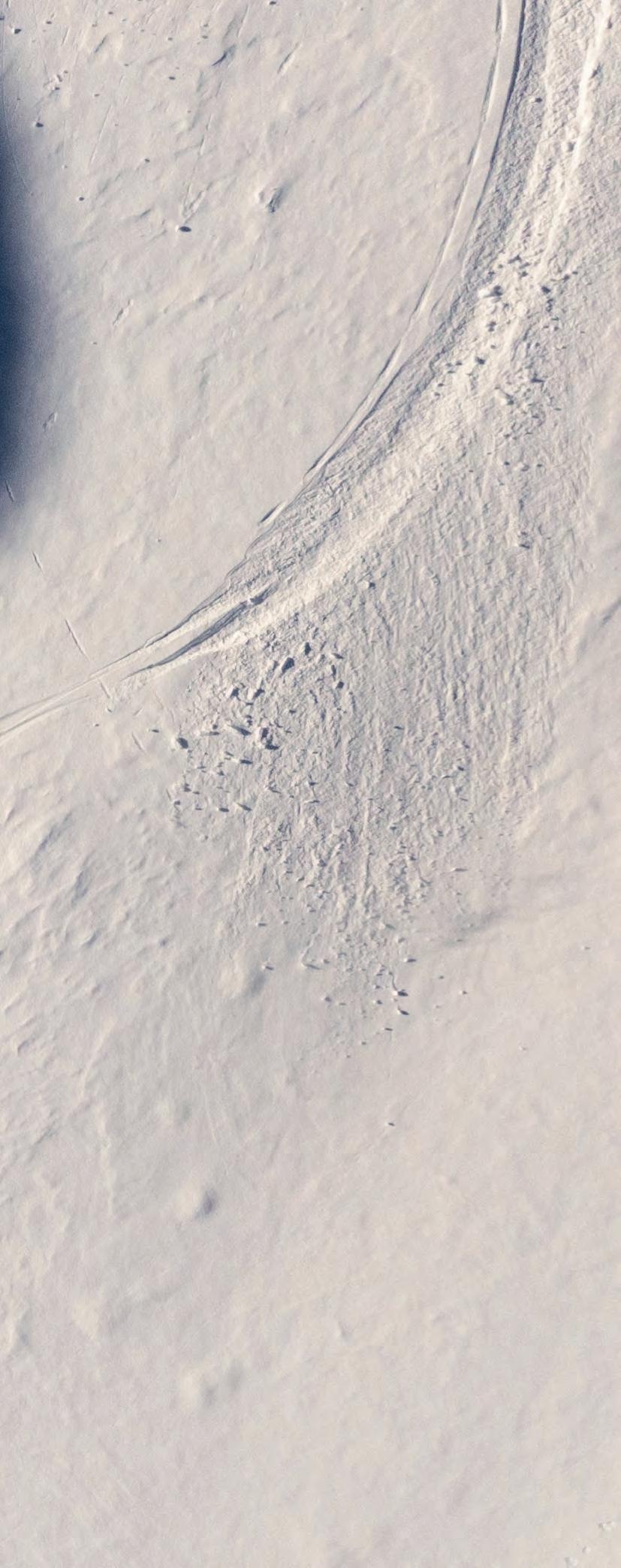
In the shadow of Norway’s highest peaks, Amy Marwick finds a lesser-known ski touring paradise where those willing to push through turbulent skies are richly rewarded.
I wasn’t prepared for the flight. And not just because I’d sprinted through Oslo airport to make the connection. My seat was the last available on the 40-seater plane and it was planted right at the front, with my back to the cockpit, facing out toward the rest of the cabin. It gave me an unnervingly perfect view of every other passenger, and them of me. As we taxied to the runway, I found myself worrying most about the sharply dressed man in a suit opposite me… if my backwards-facing stomach decided to rebel, he’d be the first casualty.
As we took off, I craned my neck to look out of the window. The sky was darkening and the last light illuminated a patchwork of frozen lakes with a steely glow. Within a few minutes the lakes gave way to foothills, then mountains – big mountains. We were heading northwest out of Oslo, towards the Jostedalsbreen and Jotunheimen National Parks.
Before this trip, I hadn’t realised the mountains this far south in Norway could be so big and snowy. Here stands Galdhøpiggen, the country’s highest summit at 2,469m, and across 474 square kilometres lies mainland Europe’s largest glacier. My previous ski tours had always taken me north to Lofoten, Lyngen and Senja, but this was new territory – and it looked promising.
We’d barely been airborne for thirty minutes when the first descent began. In Norway, flying beats driving by a long shot (think one-hour hop versus a six-hour haul on winding roads) and out here, the planes are like buses, making several stops along one route. There’s a reason, however, that most airports sit out on wide, open plains. Beautiful as they are, the mountains twist the air around them
into invisible torrents and airborne potholes, tossing planes around like kayaks in whitewater.
As we descended into a narrow valley toward a glinting fjord, the plane juddered and lurched, battling the wind. I tried to keep my face relaxed – aware that my position in the cabin essentially made me the in-flight entertainment – but as I scanned the rows, nobody else flinched. Passengers scrolled on phones or dozed as if turbulence was nothing more than a lullaby.
We swooped down low over the water, banking hard towards the runway. For a moment it felt like I could have reached out the window and trailed my fingers through the fjord. Mercifully, we landed without a hitch and I watched enviously as most passengers disembarked, while a new set casually joined for Round Two.
One ragged flight later and I’d made it to the Sogndal’s postage-stamp airport. The man in the suit smiled as we collected our luggage. “That wasn’t even close to a bad flight,” he teased. “Really?” I replied weakly, ashamed that my terror had been so obvious – proof that I wasn’t from around here. He waved as he stepped out into the freezing night, and it hit me that I had arrived somewhere deep in the wild.
It was a further hour’s drive to my accommodation at Nes Gard, an 1850s family farm turned base camp for ski tourers. Now in the hands of the seventh generation, Nes Gard has quietly and tastefully reinvented itself as a hub for outdoor adventures. Over the past two decades, old buildings have found new life: the pig stye is now a cozy wine bar, all stone and beams and lowslung benches, and the cow barn transformed into an airy space for weddings and concerts. There’s a wood-fired sauna and a fjord-side hot tub for post-ski soaks, while the original charm of the farm lingers in every creak of the floorboards and frill of the curtains. The ethos of the place is “Where fjord, mountains and people meet” – and that couldn’t be truer, from the world-class ski touring on the
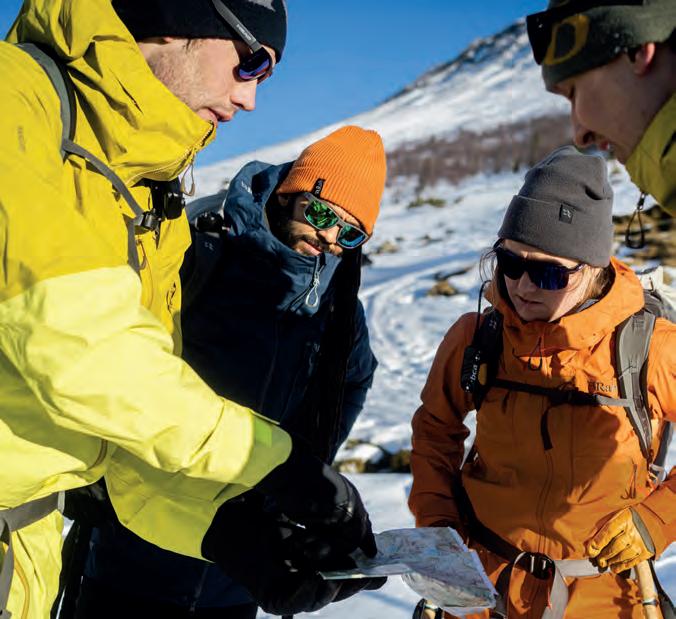
doorstep to the communal dining room, where stories are shared over mouth-watering dinners made from locally sourced ingredients.
After a sumptuous meal we’re greeted by a tall Norwegian with a broad grin. Anders, Nes Gard’s owner and host, would be leading the ski touring groups along with the other guides. We were offered options for our first day – from an easy start to warm up the legs, to a 2,000-metre day and potential sufferfest on Galdhøpiggen. I opted for somewhere in between, where we’d been promised some powder turns. It was early February, technically low tide, but a sudden storm had just blanketed the mountains in a fresh veil of white.
The morning dawned clear and sunny. After breakfast, guests eagerly split into minibuses and set out on our respective ski tours. The mountains here are broad and rolling, with the occasional toothy fin and serrated ridge rising abruptly from the plateau. It’s not dissimilar to the Cairngorms, and as we trudge slowly upwards through the brush, the view of a snow-covered lake below could easily have been Loch A’an on a Highland winter’s day.

“Where



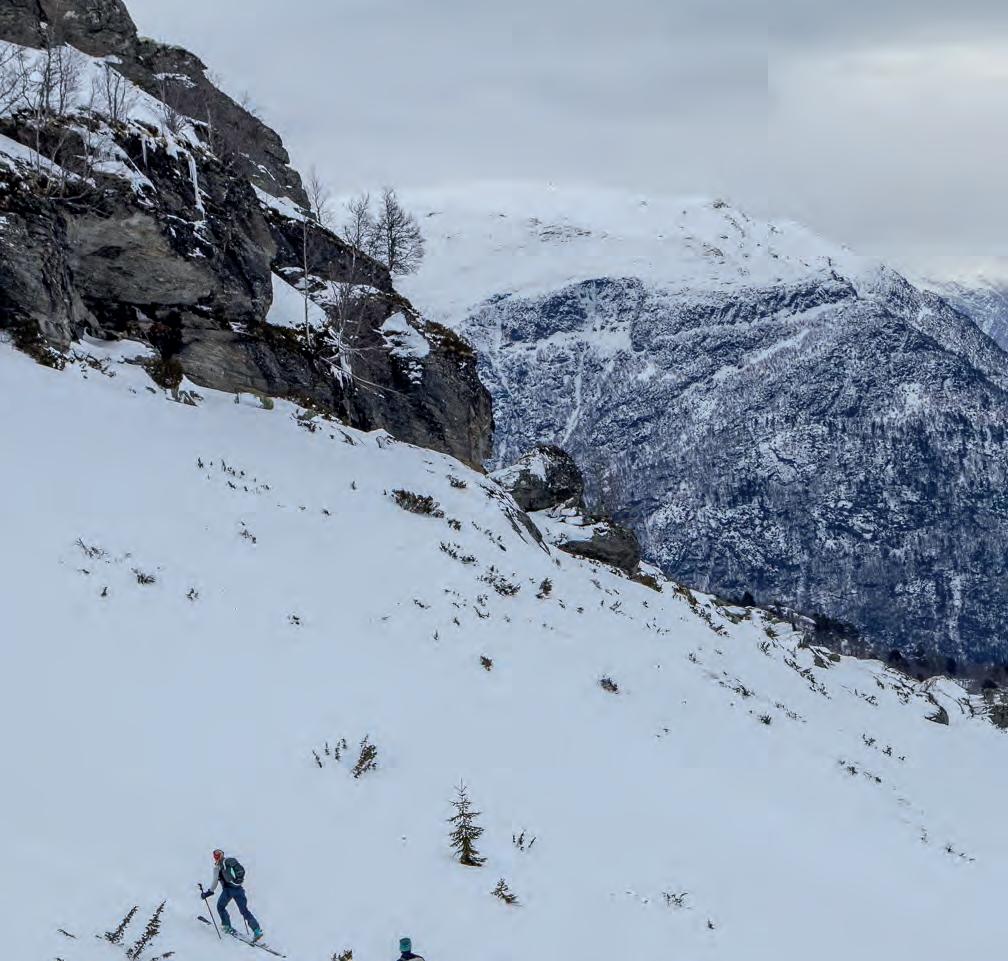
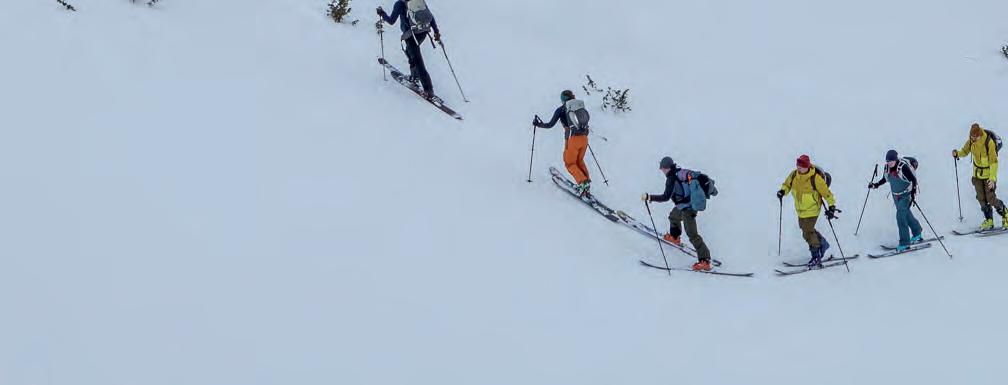
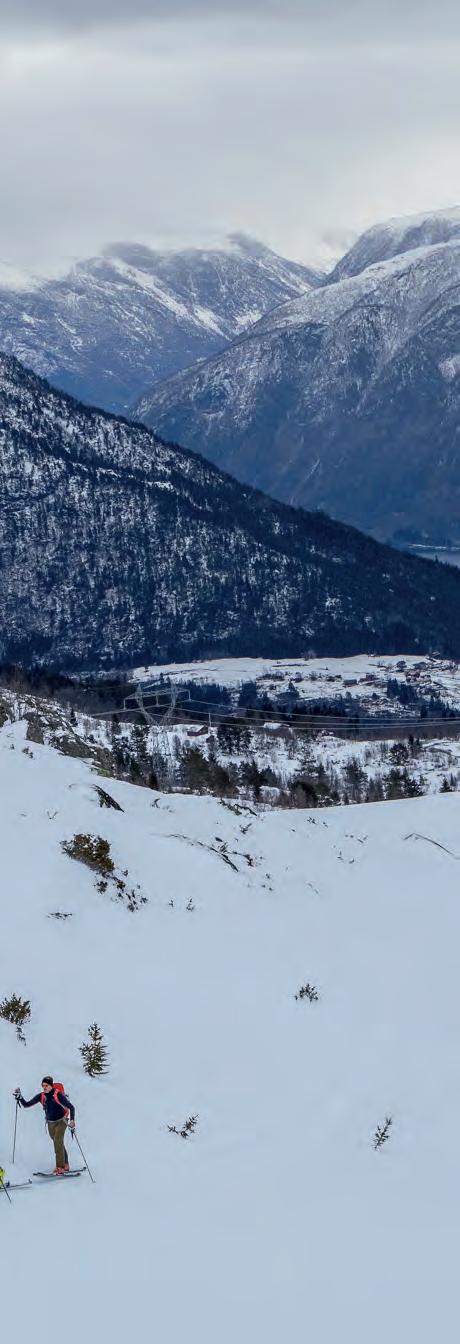
“THIS WAS AS CLOSE TO THE PERFECT SKI TOURING DAY I’VE EVER EXPERIENCED”



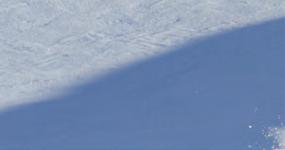
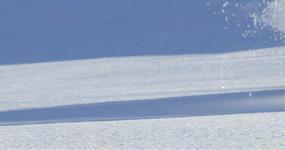

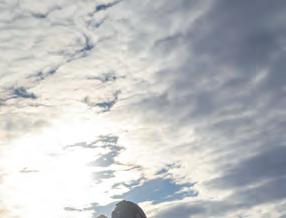
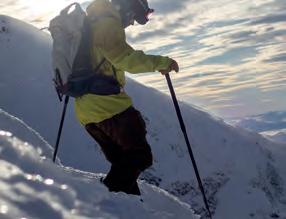


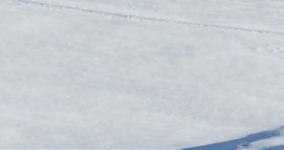
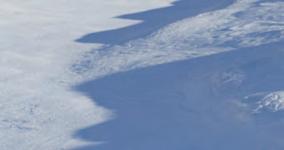

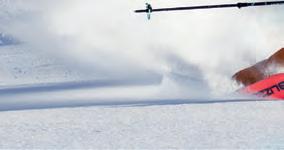

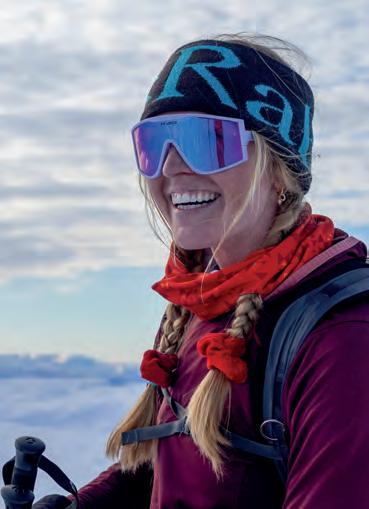

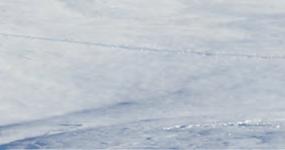
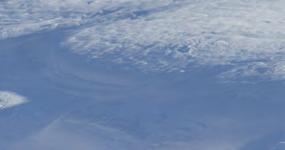
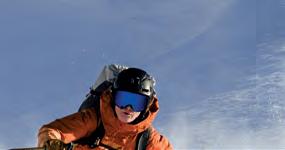




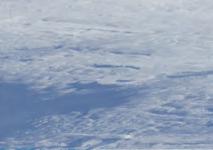

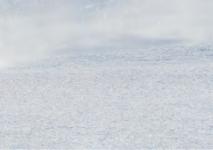

The snow was boot deep, cold, and light. As the sun beat down, I realised this was as close to the perfect ski touring day I’ve ever experienced in Norway. We gained the ridgeline, where an icy breeze cooled us, and made our way to the broad summit. There was time for a quick bite, but the clouds were gathering and the light flattening, so we made a hurried transition and set o on the descent. The terrain was playful and rolling, swooping back toward the treeline where our group gathered, all grins and eager for more. There was time for one more lap and the decision was unanimous – there was no way we were going to waste that kind of perfect powder.
Back at Nes Gard, a classic Nordic evening unfolded. Après-ski meant fjord swimming, sauna sessions, and music in the old cow barn. Steam billowed as hot bodies emerged from the sauna, led by the Norwegians, to hack through a crust of ice and slip screaming into the Arctic water. A local musician arrived with accordion slung over his shoulder and played an eclectic repertoire of Norwegian classics and dance anthems as we sipped Aperol and demolished hotdogs. Dinner in the main house followed – wild funghi risotto with mushrooms foraged by the chef himself, and slowcooked beef that fell apart at the touch of a fork. Sleepy and full, I strolled under a starlit sky to my cabin and fell easily to sleep.
The next day brought a ckle forecast with mixed conditions underfoot. This was the Norway I remembered – moodier and changeable, with variable snow and unpredictable light. We picked our way up the mountain through snow flurries and gusts of wind, a line of colourful gures against the

monotone landscape. Our descent was cautious at rst, but as we hit the treeline we met three other groups. On the way up, we’d navigated our way through a crust-encased forest, but by this point it had transformed into a surfy, sugary layer just begging to be skied.
The guides stood back and let us at it. We threw ourselves through the trees, whooping and hollering, ducking branches and launching o hidden drops. Racing to the bottom, it felt like we’d stumbled onto a secret freeride playground – as much fun as the powder turns yesterday, maybe even more.
By the time we emerged from the trees, lungs burning and grinning, I realised this trip had been about more than chasing powder. It was about learning to ride the turbulence – in the air, in the weather, in the mountains, and in life itself.
This wild corner of Norway rewards those willing to work for it, to get uncomfortable, improvise, and make the most of what they’ve got – be that a ckle forecast, an intimidating journey, or a remote family farm.
Norway’s southern ranges might not get the same hype as the north, but when the clouds lift and the snow softens, you glimpse something rare and utterly unforgettable: mountains in their perfect mood.
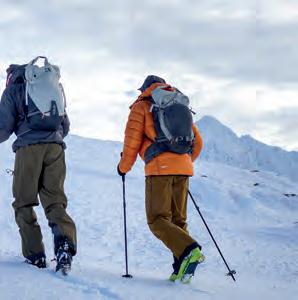
Fly to Oslo and drive six hours to Nes Gard, or brave the one-hour Widerøe flight to Sogndal (if you can fly in the daylight the views are spectacular). Nes Gard can arrange transfers.
A stay at Nes Gard starts at around £150 per night including breakfast. Half-board includes a three-course evening meal. Options range from simple double ensuite rooms to the Mirror House - a floor-to-ceiling glass cabin with views on all sides.
From Nes Gard you can explore independently (you’ll need your own vehicle) and Anders is happy to share tips on where to nd the best conditions. Alternatively, book a local guide or join avalanche courses and ski touring camps that run throughout winter, including a three-day guided experience with Rab in March.

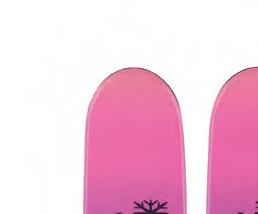



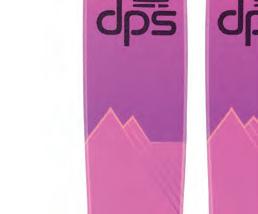
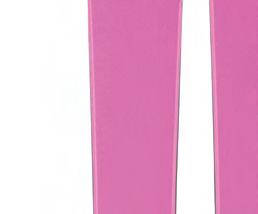


£1,300
Weighing in at just 1,523g per ski (171cm), this summit seeker is built to chase big vert – then rip the living heck out of the descent. DPS’s carbon laminate construction and versatile 100mm waist combine to deliver a ski that climbs e ciently, floats in fresh powder and holds its edge when the snow rms up. Ultralight touring weight with smooth downhill composure, all wrapped up in a primo pink package.




£180


The Legacy packs oversized cylindrical polarised lenses for goggle-like coverage with crisp, contrast-boosted vision. Lightweight frames, grippy temples and adjustable nose pads keep them locked in place, while the rugged-meets-slick design makes them as at home on glaciers as they are at après.
£200
For tourers who want glide without the slide, these mohair/ nylon mix skins hit the sweet spot so you won’t feel like you’re dragging your rig uphill, but they’ll still bite when the track gets steep. They’re light and lowpro le and come with BD’s new feathery hotmelt tech that’s easy to rip, but sticks when needed.






























£160
A true backcountry classic, the MTN Lab has earned its stripes with weight-conscious tourers who demand serious protection up top. Certi ed for both alpine skiing and mountaineering, it weighs just 400g and comes with a removable liner, passive venting and an adjustable dial t system. From couloirs to spring corn, this is a lid you can trust.




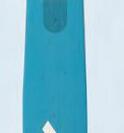

Black Diamond Helio Carbon 95
£800
The latest version of this backcountry all-rounder combines uphill capability and downhill chargeability. A paulownia wood core reinforced with pre-preg carbon keeps weight low (1,400g per ski at 176cm) while still delivering torsional sti ness. Composed yet responsive, it climbs like a chamois and rips the descent.
£610
A true do-it-all backcountry ski, the Unlimited 94 blends freeride DNA with uphill e ciency so you can adapt to any conditions. At 1,670g (186cm), the carbon construction helps keep climbs smooth, while the 94mm waist balances grip and stability. Not the lightest, but that's the point - it's built for con dence when things get spicy.





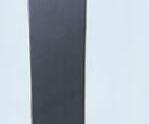

£700
Atomic’s Backland XTD Carbon 120 is a true hybrid – light enough to skin like a race boot yet powerful enough to drive freeride skis. The 100mm last adds comfort without losing precision, while a hybrid overlap shell, Z-cable closure, 74° cu rotation and Free/Lock mode deliver touring e ciency with a genuine 120 flex punch on the down.










£670
Scarpa’s Gea RS remains the gold standard for women’s touring boots. The 102mm last balances comfort and precision, and at just 1,300g per boot with a generous 61° range of motion, it cruises uphill like the proverbial mountain goat. A tall cu , 120 flex, Intuition liner and Vibram sole seal the backcountry deal.








£350




























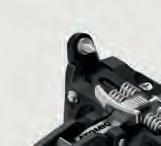

With release values of 4–9, this binding targets lighter or less aggressive tourers who still want to push modern freeride skis on the descent. Multiple riser heights keep skinning e cient and step-in aids make clipping in easy on windswept ridges. Light yet con dence-inspiring, it’s a dependable partner for big missions and multi-day tours.



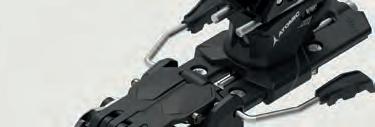





Ski holidays with children can be magical - or mildly chaotic - depending on your strategy. In this skills-based feature, Tori Collins (@toriski), seasoned ski instructor and mum of four mini shredders, shares her hard-earned wisdom on how to make family ski trips fun for everyone
Skiing with kids can be one of the most magical family experiences – but let’s face it, it’s not without its challenges. The fun really starts before you even clip into skis; it begins with choosing the right resort. Pick a base that’s family-friendly (see page 70 for some of our favourites) and you’ve already won half the battle. Get that wrong and no amount of hot chocolate breaks or Disney-themed mittens will save the day.
Once you’ve got the resort sorted, it’s time to think about getting the little ones on snow.
From juggling endless layers to getting to lessons on time, it can feel like a snowstorm of logistics. That’s where Tori Ski comes in. A former international ski racer turned one of the world’s most accomplished ski instructors, Tori has spent decades teaching kids to ski and mastering the art of making family ski trips fun, safe and stress-free.
Here, she shares her top tips to help parents turn skiing with kids into a joyful adventure.
“I once spent hours getting my little skier dressed, geared up, and to the slopes – only for him to call it a day after one run. And you know what? That’s okay!”
Introducing young children to skiing is an adventure in itself, and it’s important to keep your expectations realistic. The aim isn’t to perfect their technique or conquer the mountain – it’s to create a positive, memorable first experience. At this stage, success means keeping them safe and comfortable in all that bulky clothing, discovering that skiing is fun, enjoying time outside in the snow, and feeling included in the family adventure. It’s about experiencing the simple thrill of sliding on skis for the very first time – and leaving the slopes wanting to come back for more.
That also means keeping days flexible. Some mornings they’ll ski for hours, other days one run will be plenty – and both outcomes are perfectly fine. Breaks, hot chocolate, or afternoons off the slopes make the holiday fun, not hard work.
For kids, skiing means adjusting to unfamiliar equipment and a whole new way of moving. It’s a lot to take in, so patience and kindness are your best tools. Right now it’s not about controlling speed or nailing perfect turns – it’s about balance, confidence and above all, fun. A happy introduction lays the foundations for a lifelong love of skiing.
Preparation off the slopes can make all the difference when it comes to building confidence and excitement ahead of your holiday. Long before they clip into bindings, let your kids get comfortable with the gear. Trying on ski clothing, helmets, goggles and gloves – and even clomping around the living room in boots – helps take away the

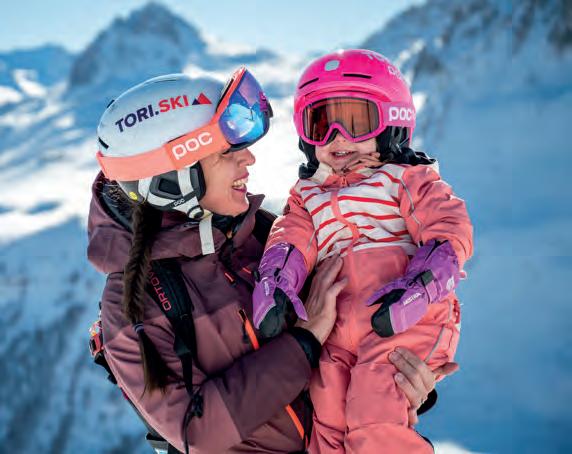
mystery. Time in the snow matters, even if it’s just sledging, building snowmen or rolling around until they forget it’s cold.
You can spark their imagination too. Books, videos or even cartoons that feature skiing help build curiosity, while indoor or dry ski slopes in the UK offer the perfect chance to preview the real thing. Talk about skiing as something magical, and if they can see family members out on skis smiling and having fun, that excitement will only grow. Away from the snow, transferable skills count: cycling, scootering, ice skating and even swimming all help to develop balance, coordination and a sense of speed.
Make preparation playful, and they’ll arrive ready, eager and confident to give it a go.
Getting the gear right is half the battle when it comes to happy ski days. Warm, waterproof clothing and well-fitted boots are essential, and layers are your best friend – kids heat up quickly when they’re moving and cool down just as fast when they stop. Bright colours are worth seeking out too, making your little skier much easier to spot on a busy slope.
Safety and comfort go hand in hand, so invest in properly fitted, kid-sized goggles and helmets. Start the learning curve early by letting them shuffle around the house on toy plastic skis – it builds confidence and makes the real thing feel less intimidating. Small extras are worth their weight in gold, too: decent
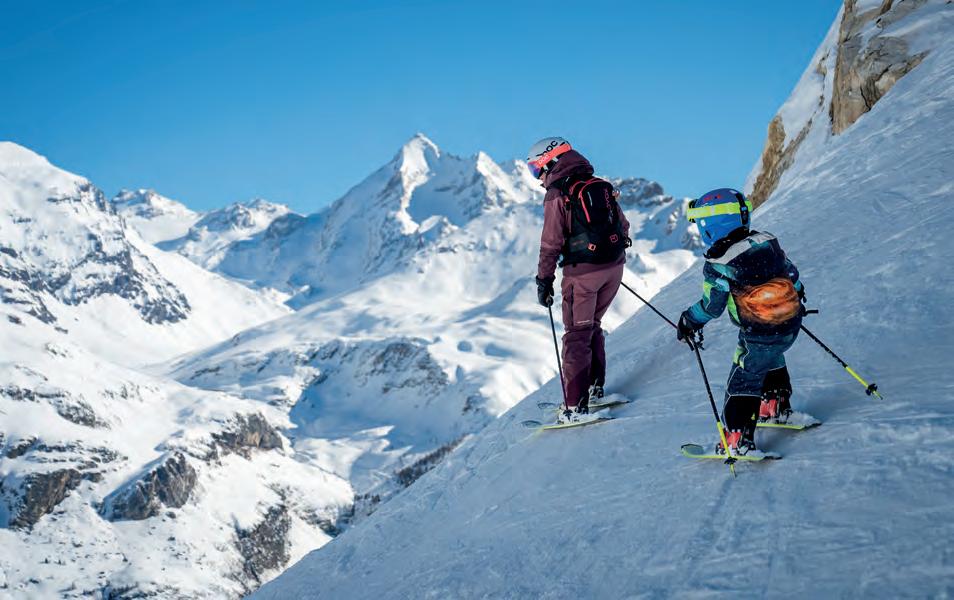
suncream, hand warmers, neck gaiters and simple tricks like attaching gloves to ski suits so they don’t disappear in a snowdrift will all help.
And don’t forget the fuel. Skiing burns through energy, and hungry kids are rarely happy skiers. Pocket-friendly snacks such as cereal bars, dried fruit or trail mix will keep them going between lifts. Even if you’re heading to a family-friendly resort with restaurants that cater for children, familiar snacks from home can be a lifesaver when energy dips.
The key to raising little skiers is to keep the fun factor high. When kids associate skiing with laughter and adventure, a love of the sport follows naturally. Sometimes that means letting them bring a toy or teddy along for the ride (ideally one you won’t mind losing o a lift!). It also means nding the right teacher – someone who genuinely loves working with children and knows how to turn lessons into games rather than drills. It’s well worth booking lessons early, as the best child-friendly instructors get snapped up fast.
Don’t be afraid to join in the silliness yourself. Fall over on purpose, pull funny faces or race them to the next snowman – when they see you playing, they’ll see skiing as play too. Frame the whole experience as an adventure: the thrill of gliding on snow, the magic of the mountains, the sparkle of ice on trees, the roar of a waterfall or even the
excitement of a helicopter buzzing overhead. And remember, the best family ski trips aren’t only about skiing – sledging, skating or simply playing in the snow together can be just as magical.
Above all, keep it joyful. If children laugh their way down the mountain, they’ll be the ones asking when they can do it all over again.
Tori Collins is a diploma-quali ed instructor o ering private, family-focused lessons in Val d’Isère and Tignes. Through TORI.SKI, her book “If They Can Walk, They Can Ski” and her popular social channels, she’s inspired thousands of parents to get kids skiing in a way that’s fun and stress-free. Her philosophy is simple: skiing should be about joy, freedom and adventure, all while feeling safe and supported.
Follow her on Instagram @tori.ski or YouTube @toridotski.
Want to make skiing with kids fun and stress-free? Drawing on 20+ years of teaching thousands of children, Tori Collins shares expert advice and practical tips in her game-changing guide, If They Can Walk, They Can Ski. Available on Amazon or as an ebook at tori.ski/book.





£90

Ideal for snowball ghts, sledging, and the long trudge back to the chalet, the Yoot Pac Nylon is a proper winter boot for kids. Waterproof nylon, a cosy removable felt liner and a grippy sole keep little feet warm and dry from rst lift to last hot chocolate.


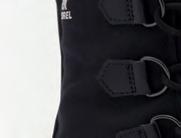
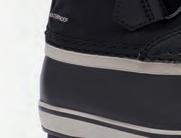








Salomon Husk Jr kids’ helmet
£70
Loaded with features normally reserved for adult models, the Husk Jr is a topnotch helmet built for teenagers and older kids who ski hard. It’s lightweight, wellventilated and comes with Salomon’s EPS4D foam liner for impact absorption and a Custom Dial adjustment system to ensure a snug, comfortable t.








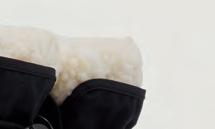

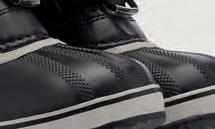













£40
Designed for mini rippers aged 6–11, these slick-looking goggles pack plenty of features into an a ordable package. A dual-layer lens with subtle mirror coating balances clarity and glare, while the double-layer face foam keeps things comfy. Available in two colours, they pair neatly with a helmet for a gap-free setup.

Reusch Bolt GTX kids’ gloves
£45
The Bolt GTX is a race-inspired glove for kids who love to push the pace. Waterproof protection keeps hands dry, while synthetic insulation adds reliable warmth without bulk. The stretchy, low-pro le cu ts easily under jacket sleeves so young’uns can focus on carving and bigtime charging.




Bu Polar Kids’ Neck Warmer
£23.99
Versatile enough to wear as a neck warmer, hat, or balaclava, a Bu is an all-time outdoor essential. This one has extra winterspeci c superpowers thanks to a PrimaLoft fleece section that keeps kids cosy on chairlifts, snug at ski school, and fuelled for snowmanbuilding marathons till dark.
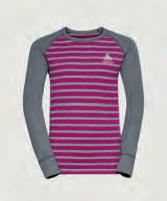
Odlo Active Warm Eco Stripe Kids’ Crew
£35

A good baselayer makes all the di erence, and Odlo’s Active Warm Eco Stripe keeps kids comfy and cosy from rst chair to last lift. Soft, stretchy, and quick-drying, it’s perfect for long ski days (and snowball ghts after). It’s available in loads of colours, so there’s no arguing over who gets which one.
Few holidays demand more careful planning than a family ski trip. The best family-friendly resorts all have a few key ingredients: easy access to the slopes, excellent ski schools, plenty of hot chocolate stops, and off-snow activities to keep everyone entertained. Tristan Kennedy recommends six resorts that tick all the right boxes.

On the edge of the Adamello Brenta Natural Park in the Dolomites, Andalo is modest in size – just 50km of pistes – but brilliantly intuitive. Runs funnel down to three central plateaus, each with ski schools, beginner slopes, playgrounds and restaurants. Parents can let older kids roam more freely, knowing they’ll regroup naturally. Hotels are tailored to families, with kids’ clubs, babysitting and flexible dining. O the slopes, the fun continues with an aqua park, climbing walls and an ice rink. Think sunshine, pasta and heaps of family fun.
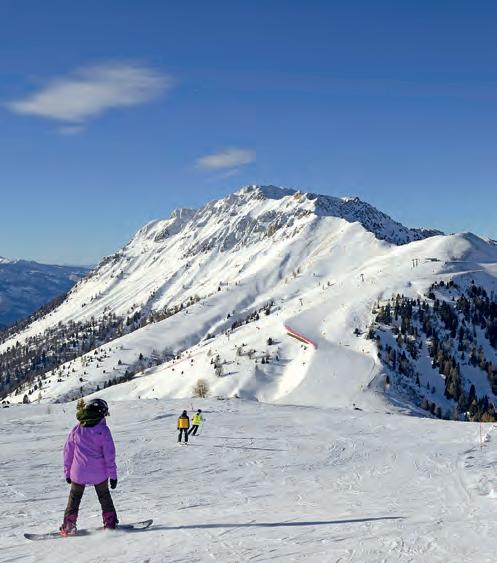
La Rosière may lack the star power of Val d’Isère or Tignes, but for families it’s often the smarter choice. Southwest-facing slopes bask in sunshine all day – ideal for spring holidays – while a lift pass upgrade lets you cross into Italy’s La Thuile. It may not be the prettiest Alpine village, but it makes up for it with activities: there’s a cinema, bowling alley, ice rink, sledging areas and even a year-round “xtreme luge.” Accommodation also comes in cheaper than in neighbouring mega-resorts – a welcome bonus for families.
Part of the Dolomiti Superski area yet well o the main circuit, Val di Fiemme feels like an insider’s secret. Its ve ski areas –Alpe Cermis, Latemar, Alpe Luisa, Passo Rolle and Oclini – o er modern lifts and reliable snowmaking, but attract only a fraction of the crowds.
Families will love the tree-lined blues and reds, while teens can head for Latemar’s Obereggen snowpark, one of the best in Italy. Bases such as Cavalese and Moena deliver the Italian essentials - pizza, gelato and a famously warm welcome.

For families seeking an adventure further afield, Niseko on Hokkaido is hard to beat. Compact and easy to navigate, it’s Japan’s best-known ski destination and welcoming for newcomers, thanks to English-speaking instructors and a large international community.
The powder here is the stuff of legends, and off the slopes, families can soak in steaming onsen baths, snack on quirky treats and giggle over high-tech toilets. The long-haul flight may be a hurdle, but the memories will last a lifetime.
Unlike many villages in the vast Les Trois Vallées, Saint-Martin-de-Belleville retains the feel of a traditional Alpine community. The beginner area sits right in the heart of town, with a drag lift and magic carpet leading straight to an eightseater gondola. From there, families have seamless access to over 600km of pistes across the world’s biggest ski domain. Add in old barns turned into restaurants and a welcoming village square, and SaintMartin feels more authentic than its glitzier neighbours – yet every bit as connected.
Midway between Oslo and Bergen, Geilo is one of Norway’s most accessible resorts and, for families, arguably its best. Slopes suit all ages: gentle beginner runs, terrain parks for teens, and cruisey pistes for adults. Modest mountains and short lifts funnel skiers back to central points, making regrouping easy. When kids need a break, there’s husky sledding, sledging at Dagali Fjellpark or snowshoe treks in the forest. Norway may be pricey, but the culture and family focus make it a top alternative

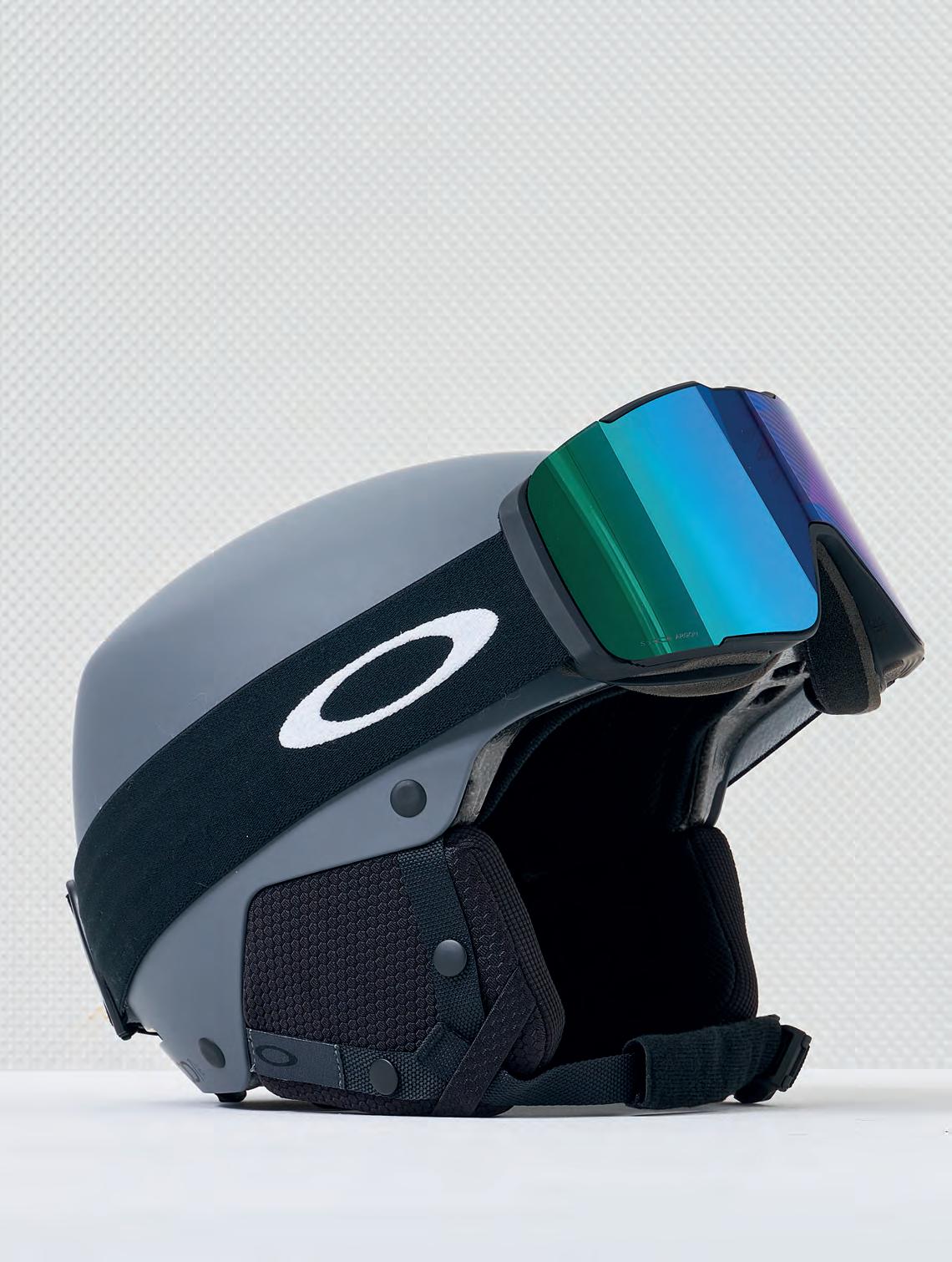


Oakley MOD1 PRO | Oakley Line Miner Pro L £125 | £259
Oakley’s MOD1 Pro helmet is packed with top noggin tech, including Dura-Matter hard-shell construction, MIPS protection for added safety from angled impacts and a dialled-in BOA t. Pair it with the Line Miner Pro L googles, where Prizm lenses and a quick-change system give you eagle-eyed vision from park laps to powder stashes. Together: style, clarity and the stoke to keep lapping all day.

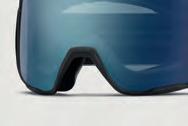



£230
This multi-talented helmet pairs Salomon’s top-end EPS4D impact absorption with MIPS protection, so your brain stays covered when you’re sending. A snug Custom Dial t, audio-ready ear pads, and a sleek low-pro le design make it a go-to lid for freeriders chasing big lines with style and con dence.


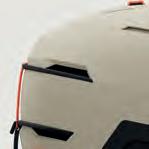
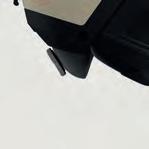

£190
See more, ski more. These light, comfy medium- t goggles come with Smith’s BirdsEye Vision tech for max panoramic eld-of-view and ChromaPop lenses that make terrain textures jump out so you can read the mountain at a glance. Other top tech includes a QuickFit strap for rapid adjustments on the fly.
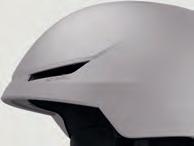
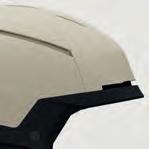










£120
£325
Built for maximum peripheral vision, these goggles pull Oakley’s Prizm lens tech into a sleek, conical frame that sits closer to your face for a super-wide view like you have never experienced before. The t is large without feeling bulky, and they have quick-lens changing system and come complete with a bonus low-light lens.

A lightweight all-mountain helmet that doesn’t skimp on safety, the Revent Lite+ packs Atomic’s Holo Core construction for up to 30% more impact protection without adding bulk. 360° Fit and height adjustment dial in a secure t, while xed vents keep air flowing and the low-pro le look stays sleek in the lift line.

£140
Designed with women in mind, this lightweight everyday lid comes with all the comfort and safety tech, including MIPS protection. The InForm t system is easy to adjust with gloves on and Thermostat Control vents let you ne-tune airflow to keep goggles clear on low-viz days. Stylish, cosy and con dence-inspiring.






£224
Sharp optics with lightning-fast lens changes - these large- t goggles come with Dragon’s Swiftlock Magnetic system and a premium Lumalens Infrared lens to increase contrast in variable light. The bonus lens in the box makes them a serious weapon for all-season shredding.
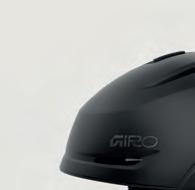


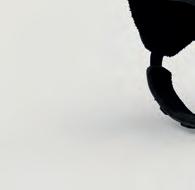




£200 | £255
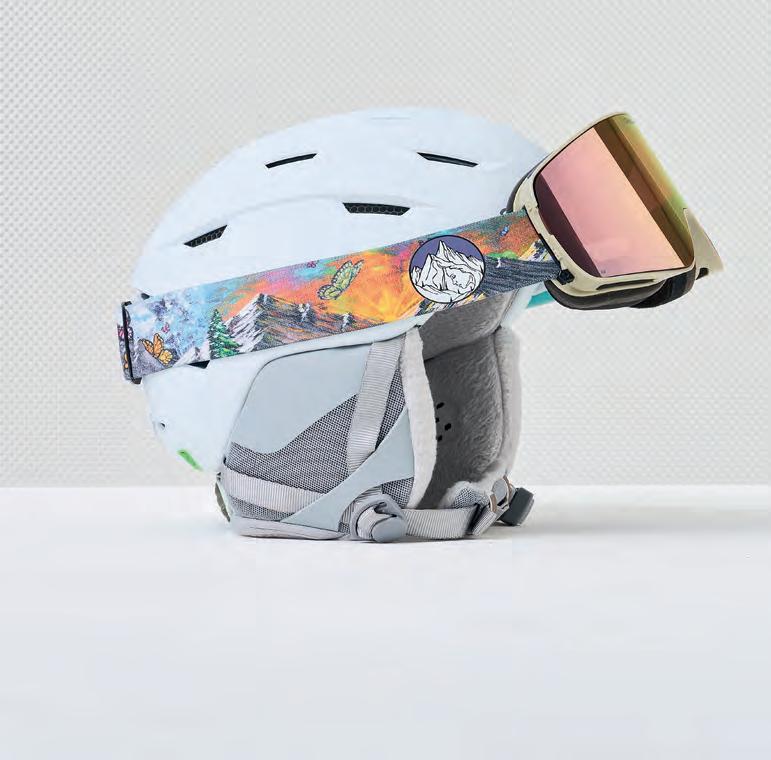



Smith’s Liberty MIPS helmet keeps things light, safe and comfy with zonal Koroyd protection, adjustable venting and a plush liner. Add the I/O MAG S goggles – ChromaPop clarity, instant lens swaps and razor-sharp optics – and you’ve got a dialled-in combo that nails comfort and good looks with zero gaper gap.







£260
The Vantage blends durability with low weight, while Koroyd panels and MIPS boost impact absorption. Adjustable vents manage airflow and the BOA 360 system dials in a glove-friendly t. From groomer laps to sidecountry powder, this remains Smith’s flagship all-mountain helmet.
£184
The medium- t NFX2 takes Dragon’s iconic frameless style and backs it up with their Swiftlock fast-lever lens change system - quick, secure, and glove-friendly. Lumalens tech sharpens both contrast and colour, triple-layer foam keeps things comfy and the cylindrical shape delivers a bold, wide eld of view.
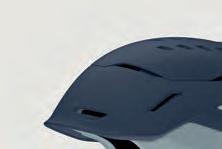
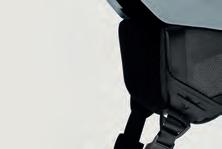

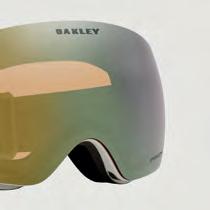
£189
Inspired by ghter-pilot visors, these are all about maximum eld of view and Oakley’s game-changing Prizm lens clarity. The rimless design means no distractions in your periphery, while Ridgelock tech creates a secure lens to frame seal. A medium t means most riders will nd them a perfect match for all-terrain optics.








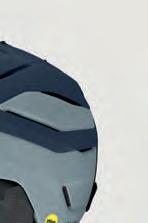























£250
This big-mountain bruiser is built with top MIPS spherical tech (basically a helmet-within-a-helmet) to handle heavy hits without compromising comfort. Adjustable Thermostat venting means you can dump heat on the bootpack and lock it down again when you’re storm riding.


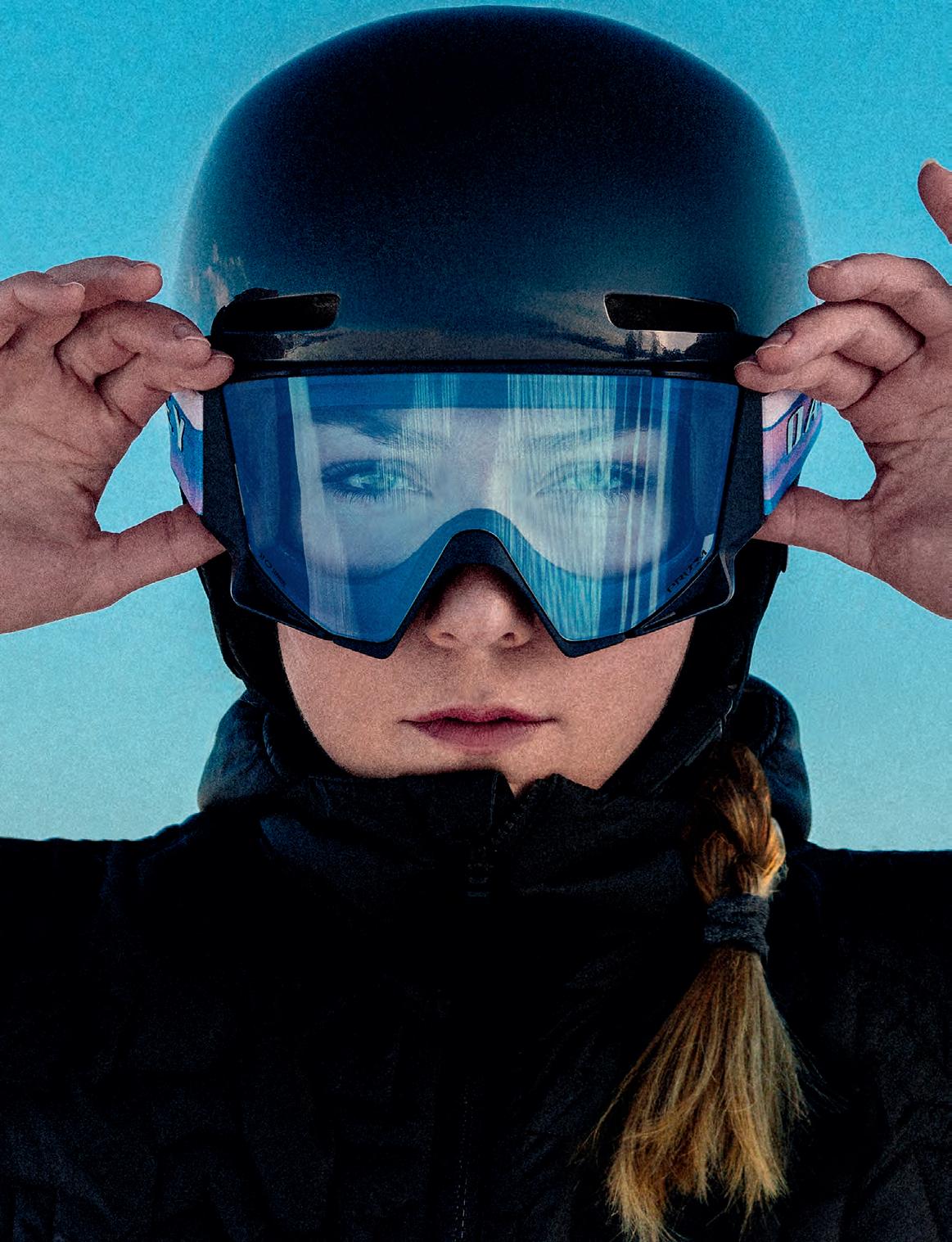


The Cairngorm 4000ers links the five highest peaks in the Cairngorms National Park, covering around 36 km with over 2,300 m of climbing. Limited winter daylight, unpredictable weather and snowpack instabilities all add to the challenge, but when conditions line up it’s an incredible experience.
There are always plenty - it’s part of the adventure. Gear niggles, like skins not sticking, can become a real headache. Navigation in poor visibility and keeping an eye on avalanche risk are constant factors too. Going solo means carrying backup kit in case of problems. The hardest part physically was the long, late slog out through boulder fields when fatigue really set in.
The contrasts – from the playful first turns down Cairn Gorm to crossing the wild Lairig Ghru and climbing up towards Braeriach under a sky full of stars. On my most recent trip, skiing Taillears Burn in good snow was a standout, as was catching sunset from Cairn Toul. Those moments make it all worthwhile.
Preparation is everything. Lay your kit out beforehand and pack spares – gloves, layers, head torch, power bank – as things always take longer than you think. Be meticulous about checking the weather and avalanche reports – and be realistic about your fitness level. Go with a partner if you can, but if you head out solo, make sure people know your plan and timings.
Aviemore ski department supervisor Matt Brown takes on the Cairngorm 4000ers

Name: Matt Brown
Job: Ski department supervisor
How long at Ellis Brigham: 3 years
Store: Aviemore
Adventure: Cairngorm 4000ers ski tour
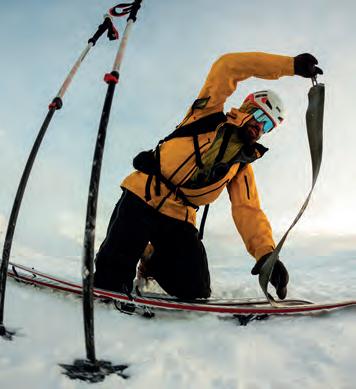
Efficient transitions equal steady progress
At Ellis Brigham, we run an Expedition Grant that funds staff adventures through the year, enabling our employees to experience their dream trips.
